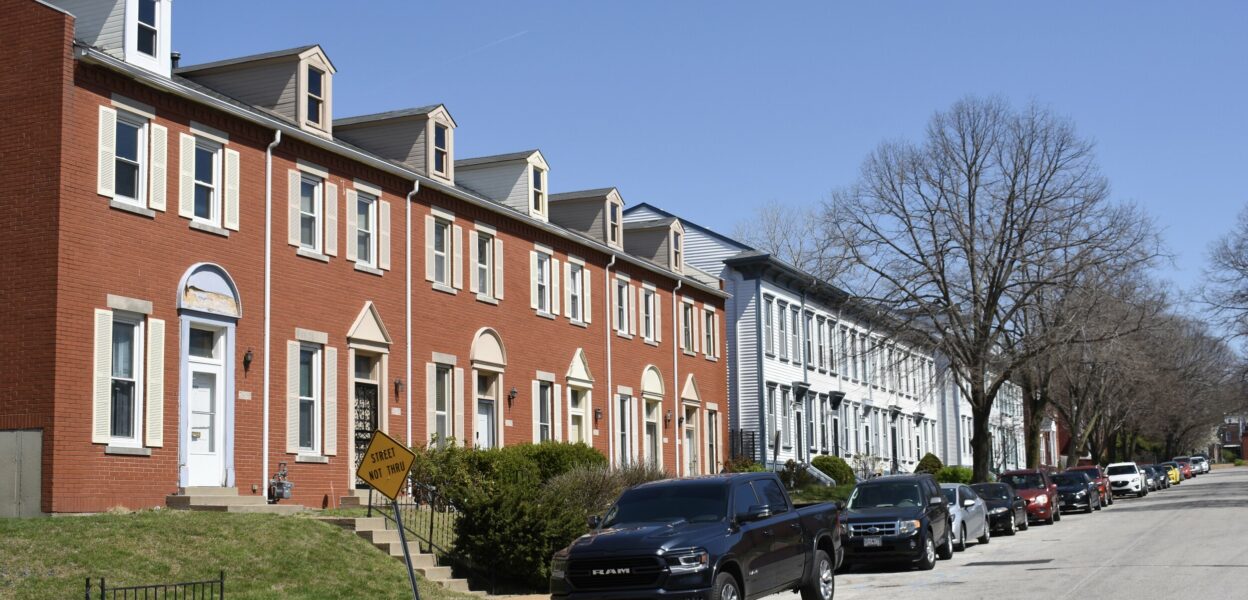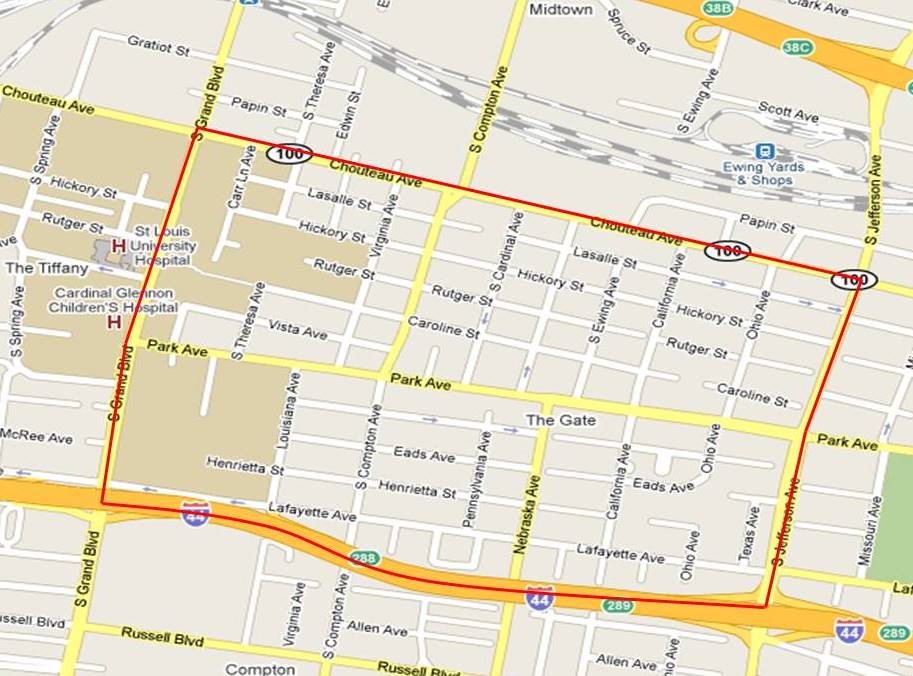
The Gate District is a south St. Louis neighborhood bound by Chouteau on the north, I-44 on the south, Jefferson to the east and Grand to the west.
The Gate District was home to 3,491 people as of the 2000 Census count (down 7% from 1990’s count). 87% black, 10% white, 1% Asian, 1% Hispanic/Latino. 1,636 housing units were counted, of which 83% were occupied (36%/64% owner/rental). A very small overall loss was observed in the 2010 Census where 3,456 people were counted (-1%). The biggest racial changes were a 60% increase in Asians, 30% increase in whites and a 6% decrease in blacks. The Hispanic/Latino population remained largely unchanged.
What will you expect to see here if you were to make a day trip to the Gate District? In short, the highlights are St. Louis University’s medical campus and track and field facility, the Florist District of St. Louis, the awesome Barr branch of the library on Jefferson, the home where famous author and poet, Maya Angelou was born:

3130 Hickory Street

Barr Library
The St. Louis University track and field facility along Compton is a beautiful facility that overlooks Midtown, Grand Center and Downtown.
The Jesuit University allows the public to use the fields and track for casual exercise as well as formal practices for youth track and field teams.




The University’s chicken, honey bee, fruit and vegetable garden also sits at Compton and Caroline. This garden is part of the culinary school and provides much of the food for a small student-run cafe called Fresh Gatherings which serves the University students and staff. It is also a integrated into the youth summer camps oriented toward cooking and culinary skills.

These are two examples of SLU partnering with the community and opening up their facilities for all to enjoy. The lack of fencing is refreshing and inviting.

And then of course, the beautiful Lafayette Avenue which adds to St. Louis’ resume as the best brick/stone European-inspired city in North America, and also some questionable examples of modern suburban construction/planning I’ve witnessed to date within the city.
The Gate District architecture is a mixed bag.
Let’s start with the positive: Lafayette Avenue and the adjacent streets, just north of I-44:
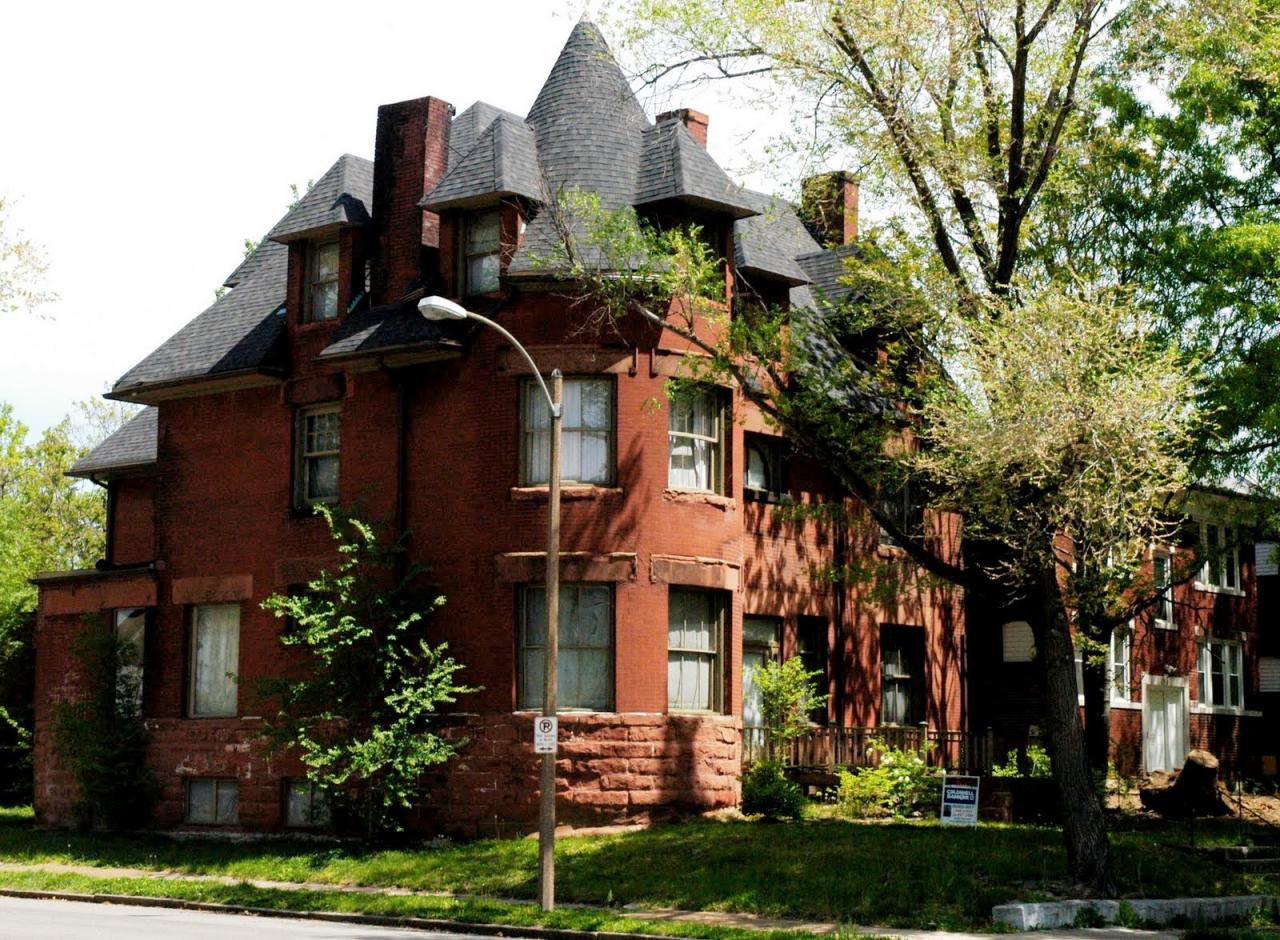
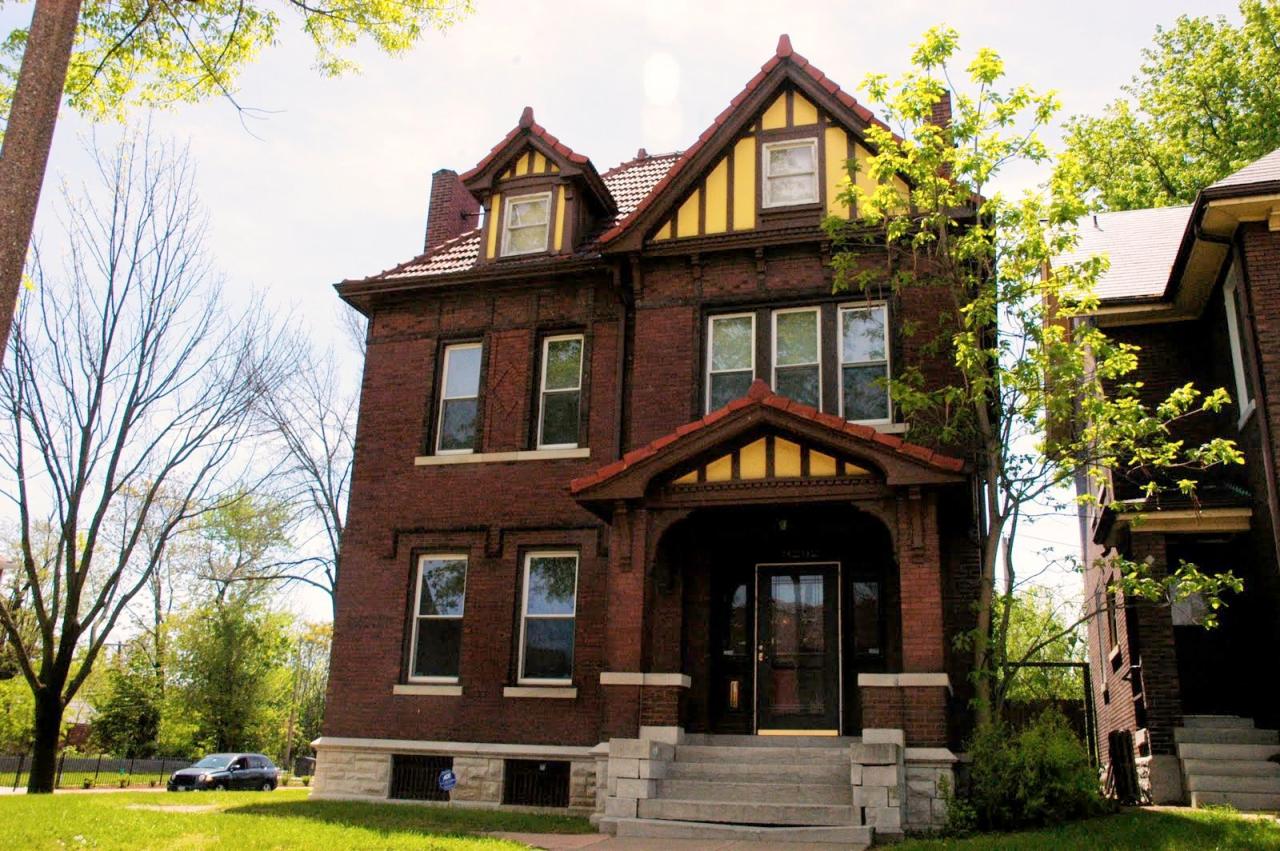
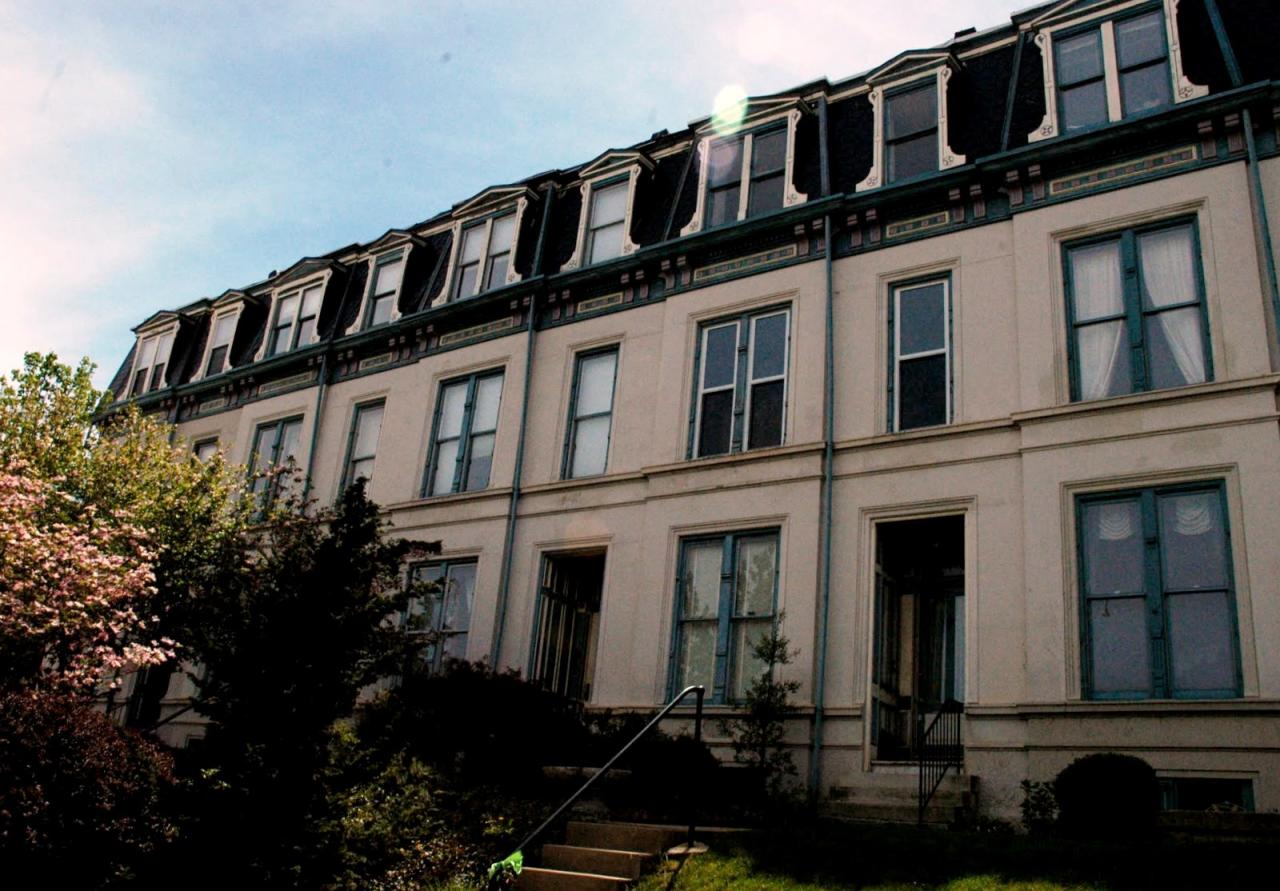
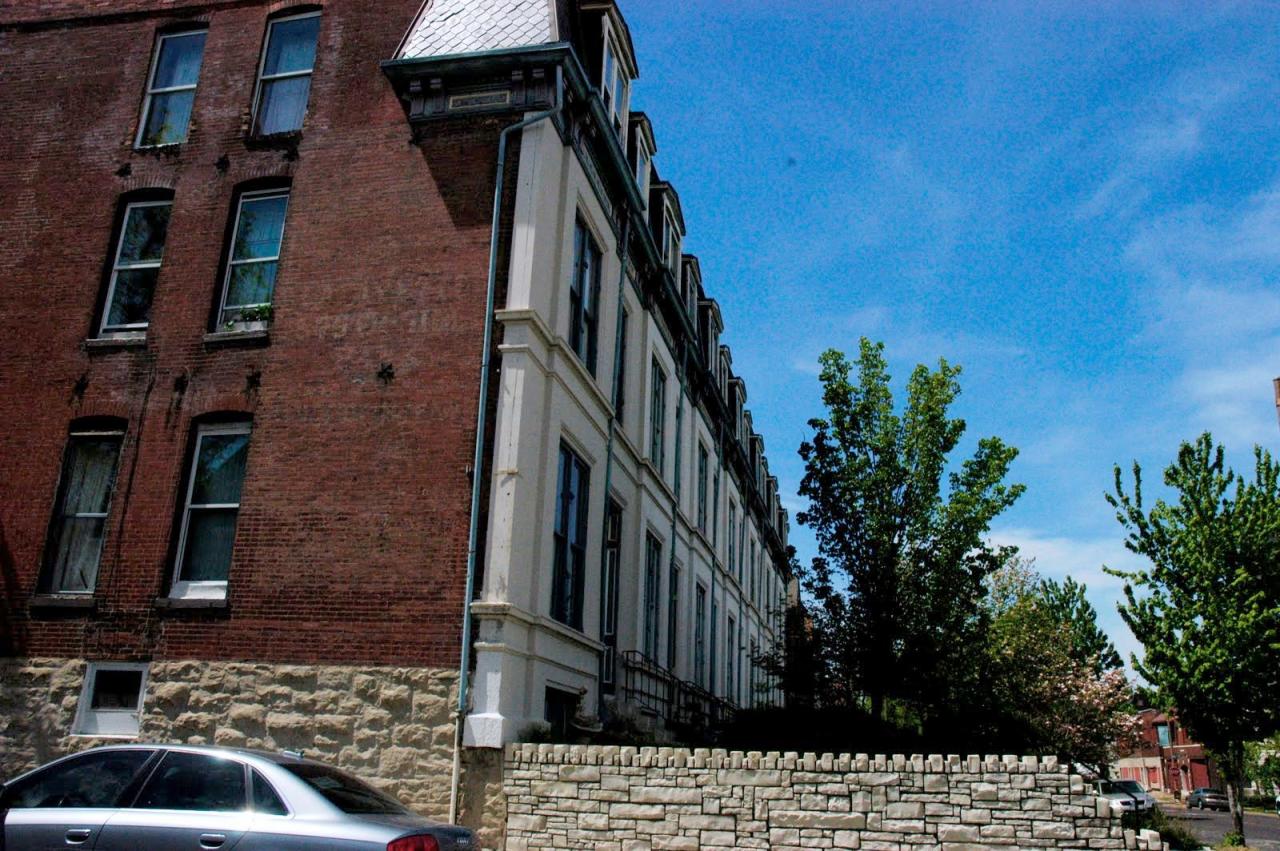
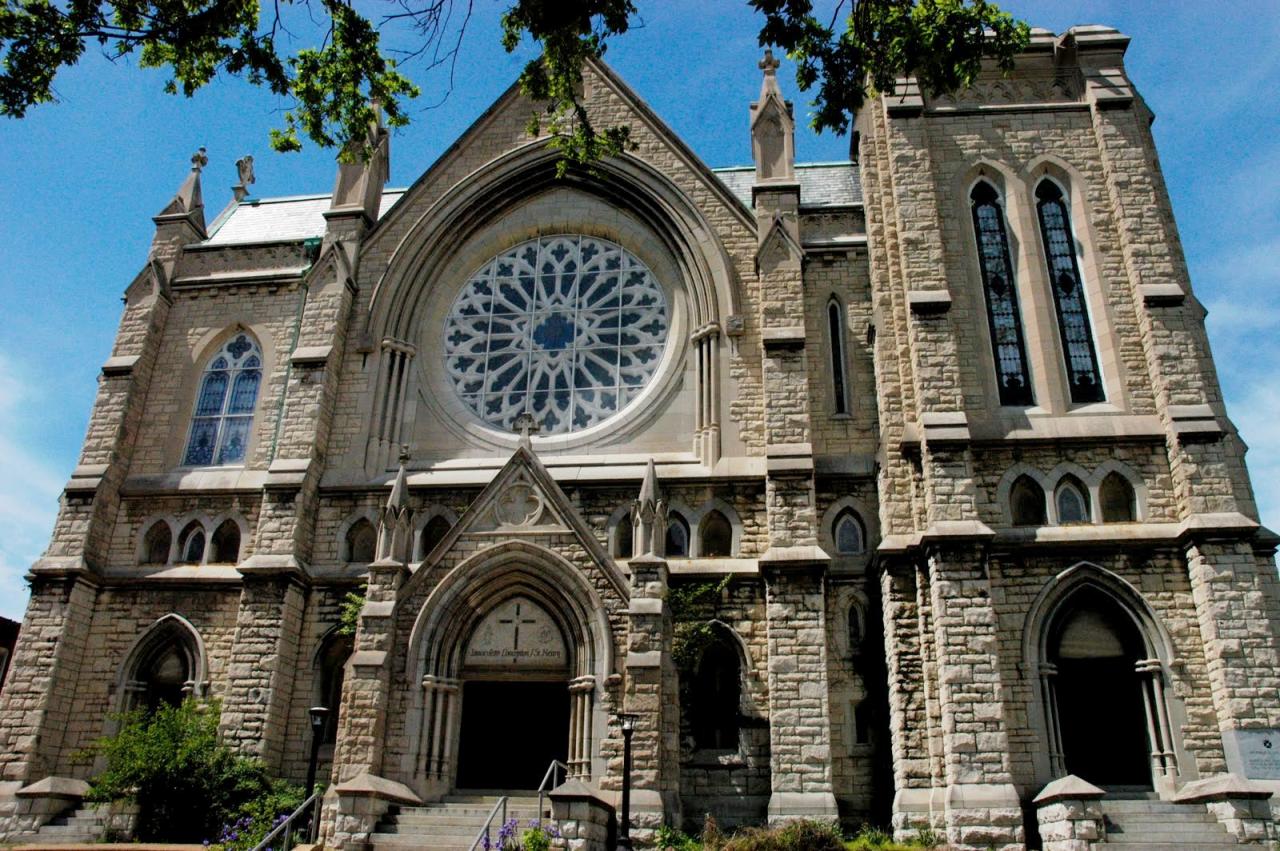
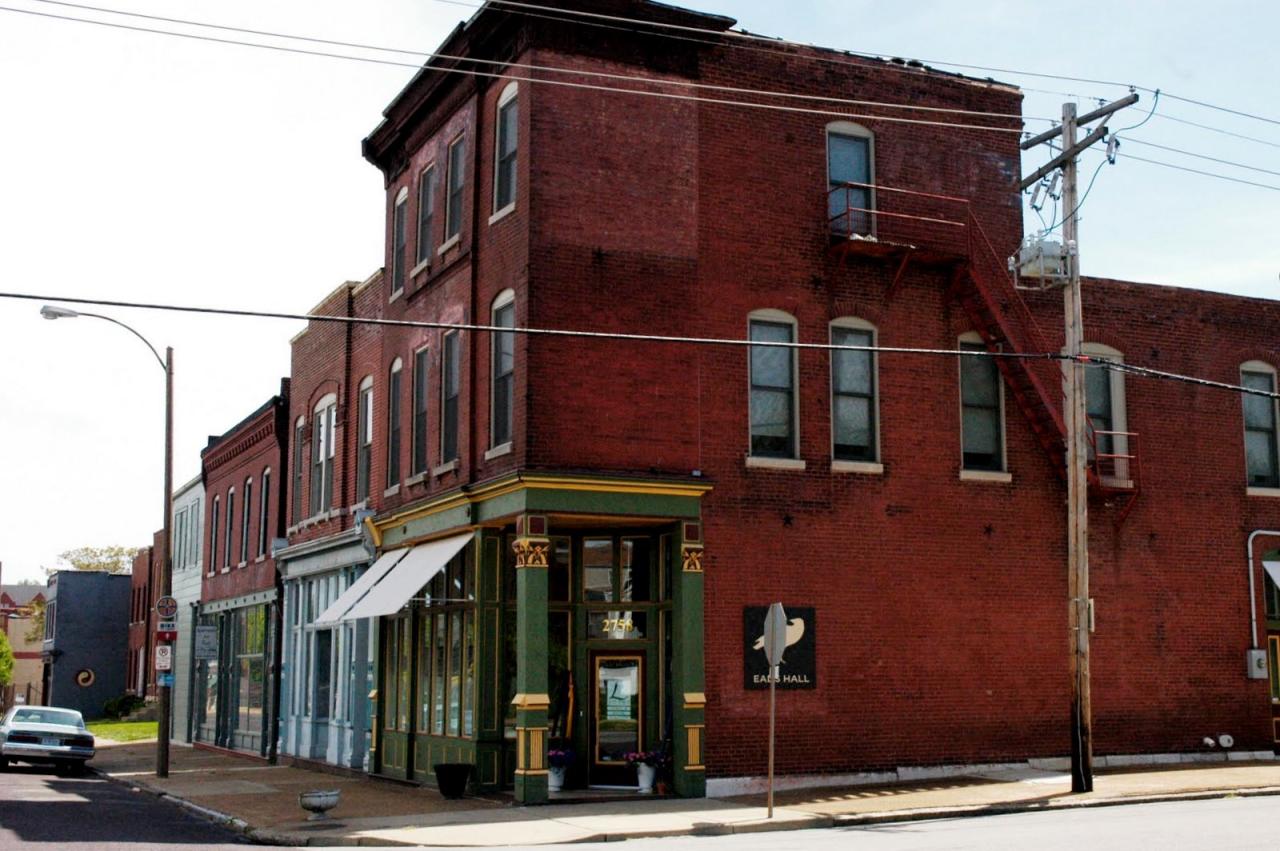
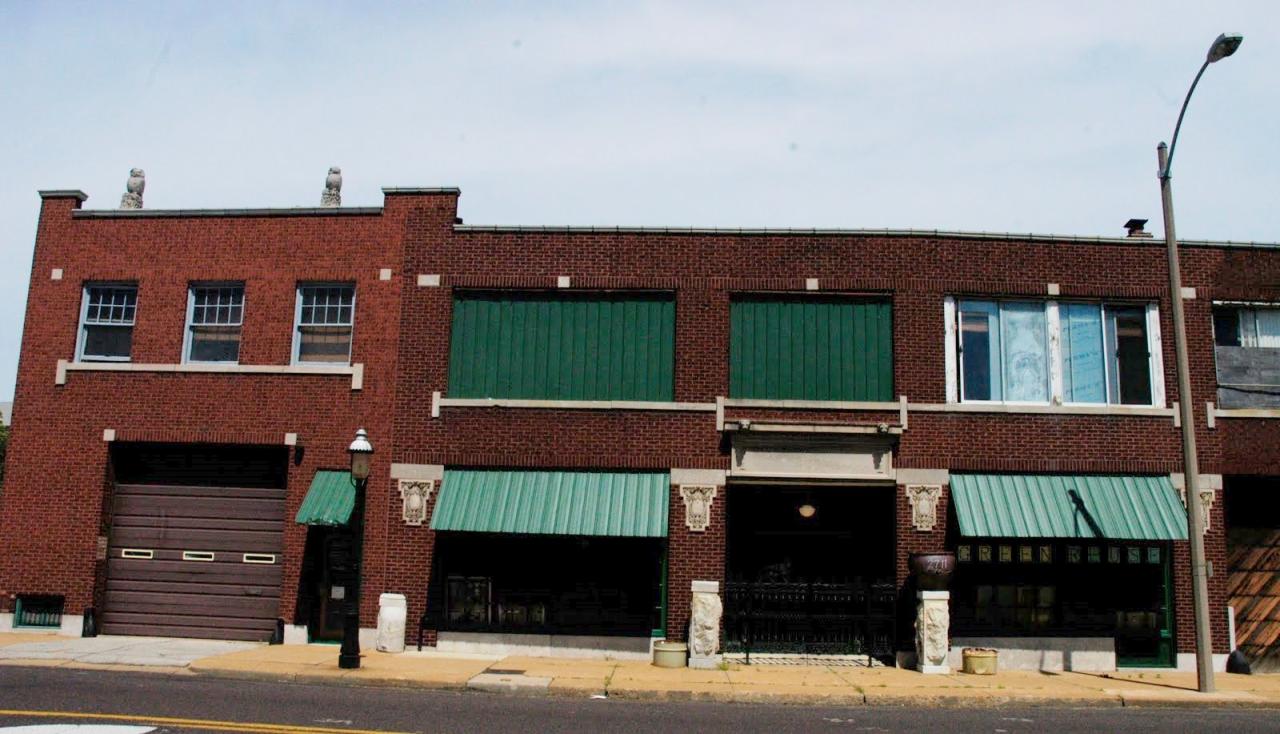
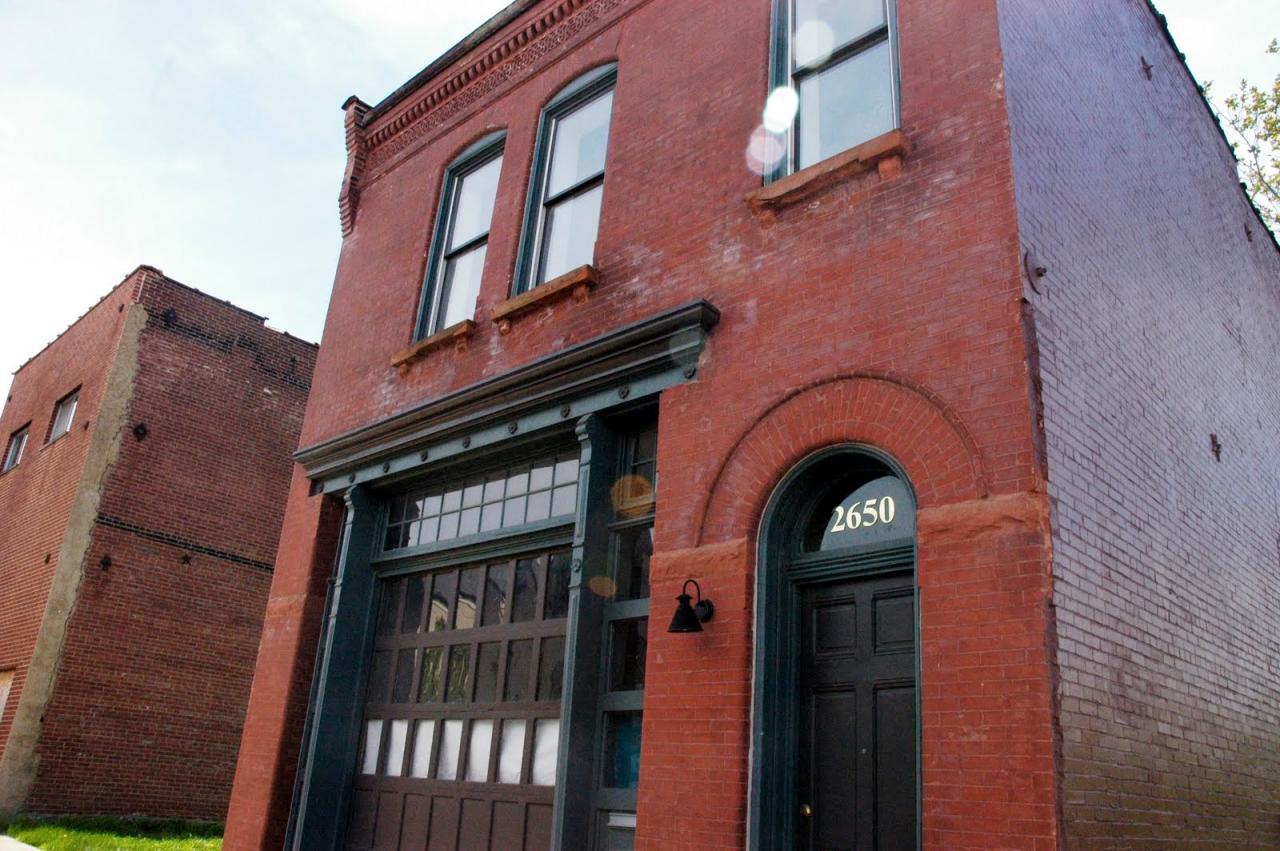
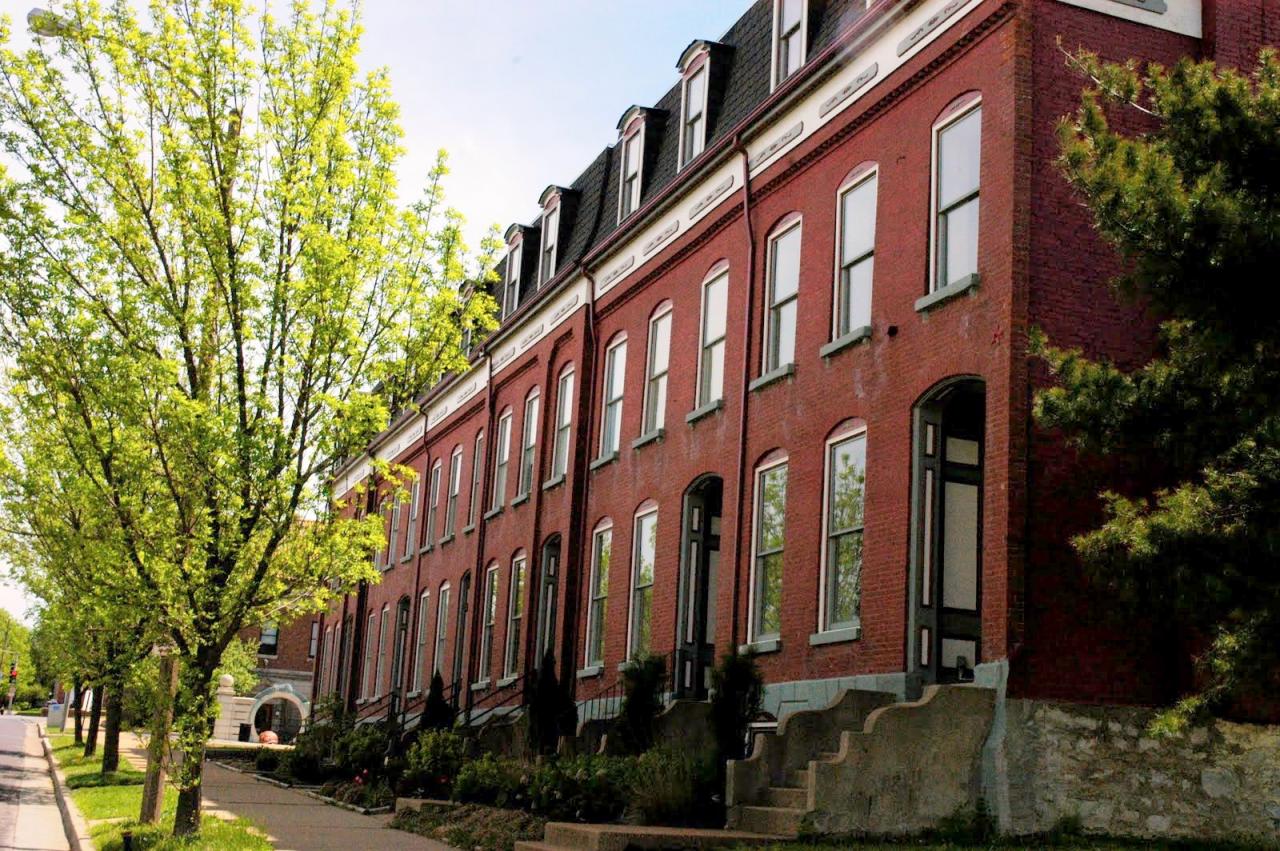
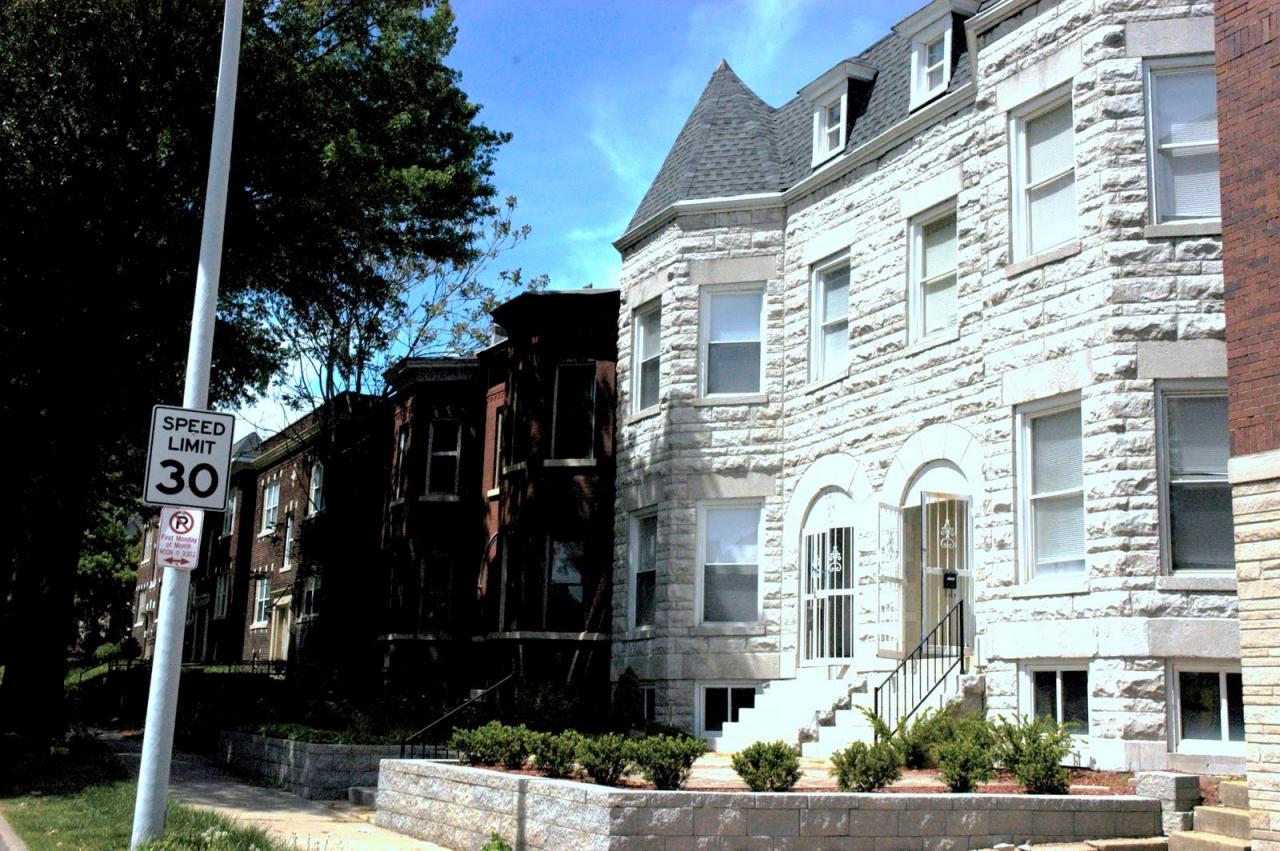
There is a good discussion of the Compton Hill Convenience Store and Deli on the urbanSTL forum:
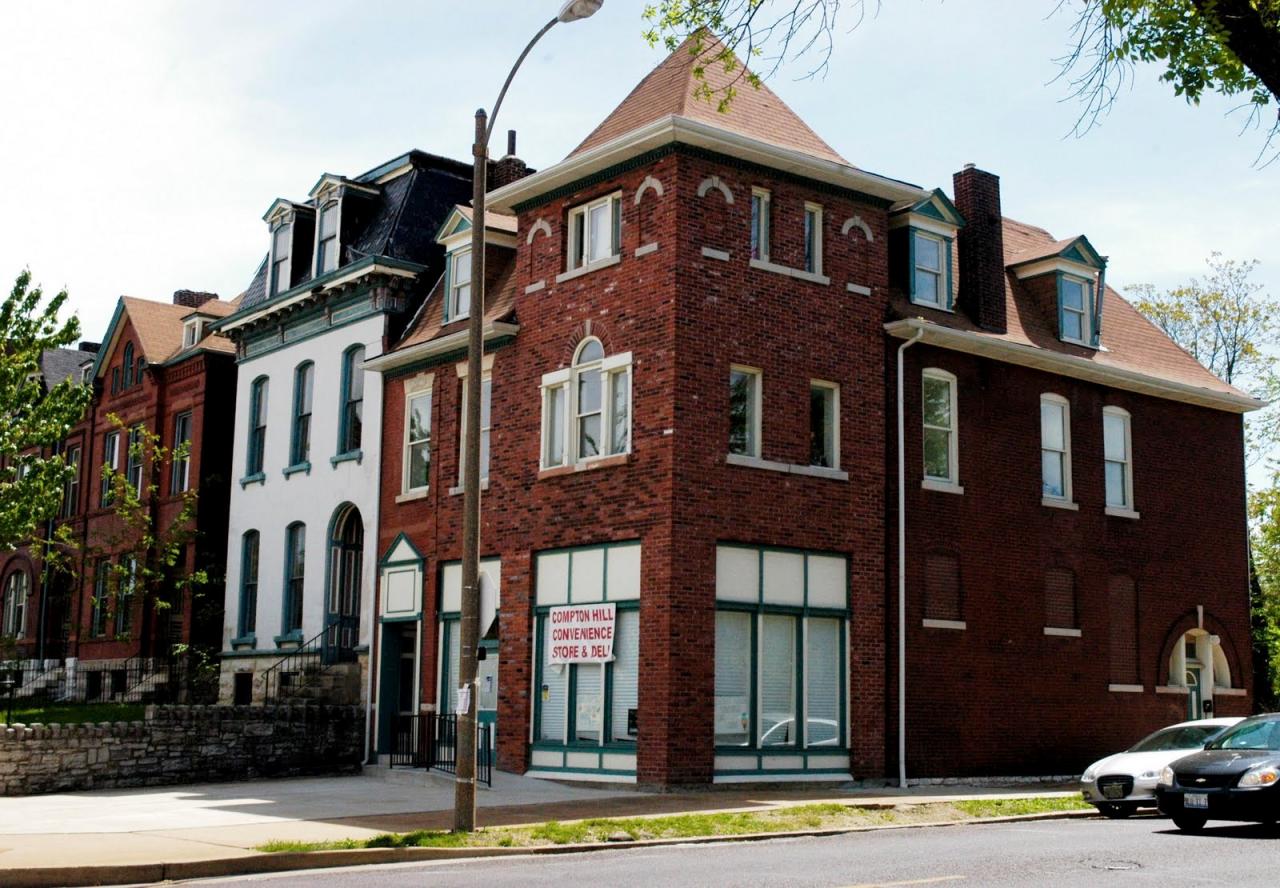
Much new construction has taken place, largely refreshing and modern. This is not a “historic” neighborhood, so there are fewer limitations on what can be built, providing an opportunity for more modern designs. Here are some examples on Lafayette and Oregon:




There are gaps in the street-face being filled on former abandoned lots and talk of the former basketball courts of Hodgen School being redeveloped soon.

There are new businesses including a salon, an Indian furniture storefront, a re-furbished furniture storefront, a digital firm, and a architectural salvage shop (one of the best in the city).



A holding zone for the works of Cassily (Do you like the pretentious and mysterious tone of that last sentence?) If you’re interested explore the Gate District just off Lafayette:
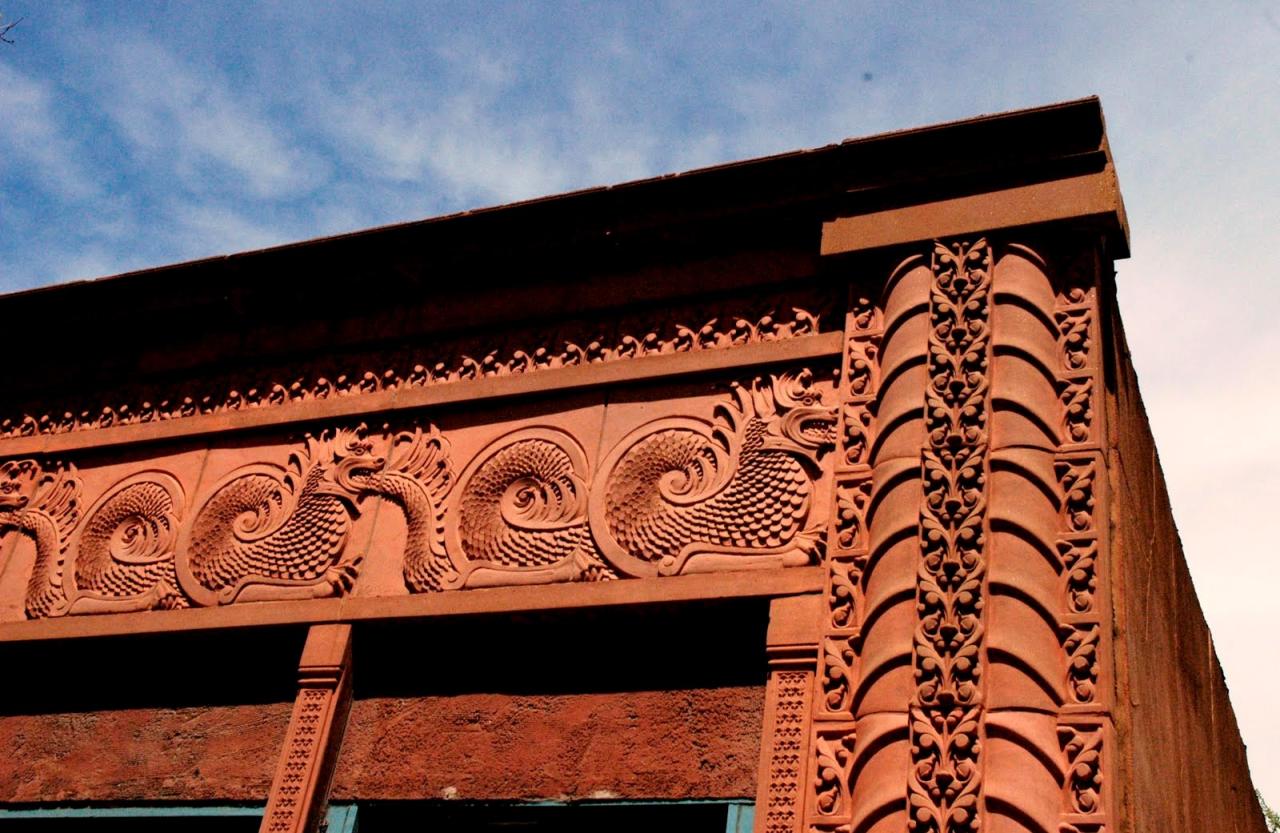
The shuttered National Supermarket/Foodland along Jefferson documented in full by UrbanReview St. Louis has seen a reconfiguration to a strip mall with modernized accents, including parking lot rainwater gardens.



Per the Gate District website:
The Gate District is named according to the many ornate gates bordering it’s four newly defined neighborhoods including those which previously stood in front of the old City Hospital. The Gate District’s neighborhoods include Buder Park, Eads Park, St. Vincent Park, and Lafayette Terrace. Each of the neighborhoods is represented by a neighborhood association in addition to the Gate District East Association. The Gate District is the largest “planned” community in the City’s history.
This sounds a little overly-fractionated, no? Do we really need separate sub-neighborhood associations within a neighborhood? I mean we already have 79 neighborhoods, which I think could be consolidated down to maybe 60 or less. Speaking of fractionalized, take a look at the map right around Nebraska: this neighborhood is cut off with cul-de-sacs and Schoemehl pots galore. It’s like there’s a missing north/south street between Ohio and Compton.
The website quotes this as St. Louis’ largest planned community…oh no, this doesn’t sound good. But, the location is strong, across the street from Lafayette Square and is embedded beside the St. Louis University medical campus. This should be a powerhouse, a desirable place. But…trust your instincts when you read “planned community” in the late 20th, early 21st century.
Let’s face it, some neighborhoods inspire, some don’t. Sometimes you just have to scratch your head and ask WTF happened? I hate lumping a huge chunk of a city into one category, because there are some amazing homes and sights here. BUT, you’d be lying if you didn’t shine a light on the weird suburban experimentation that has gone on in this part of town. You’ve got to ask yourself who was at the helm when this disaster occurred?
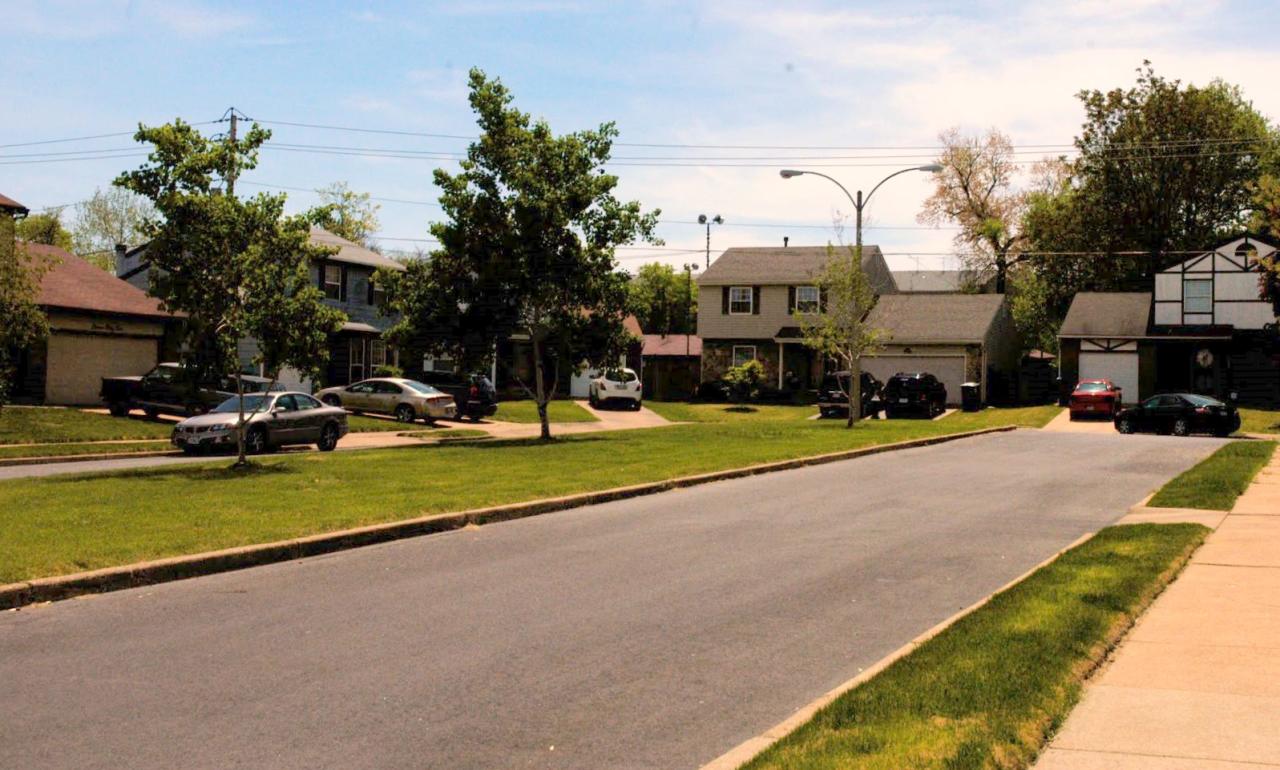
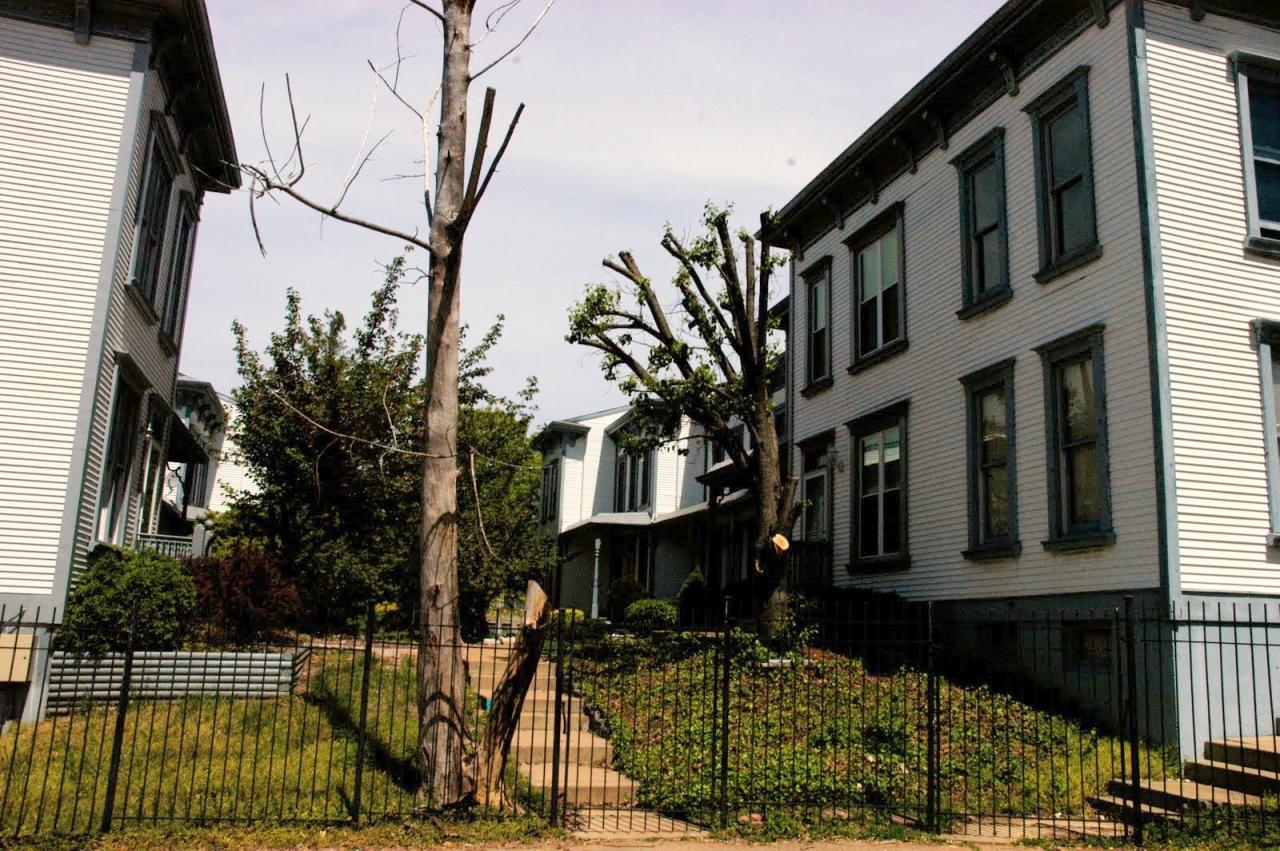
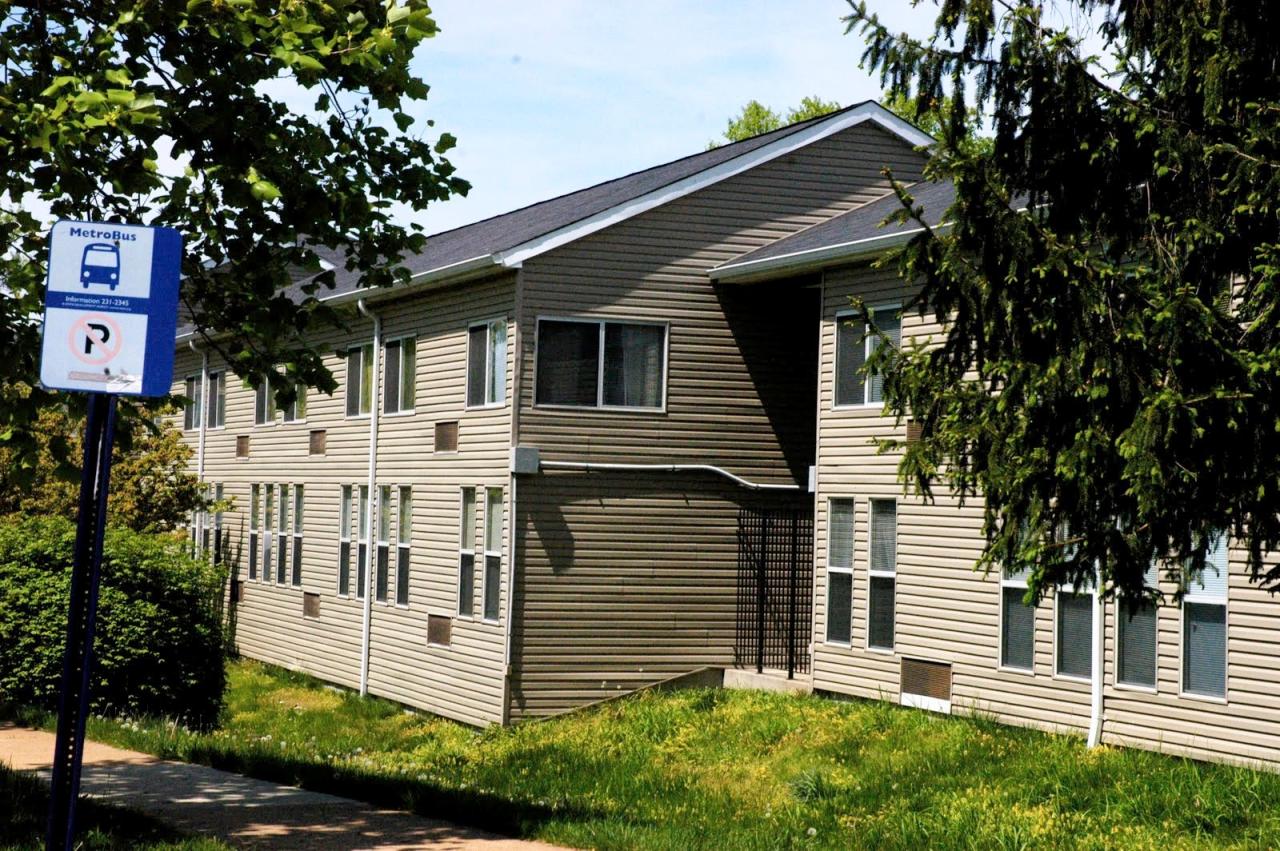
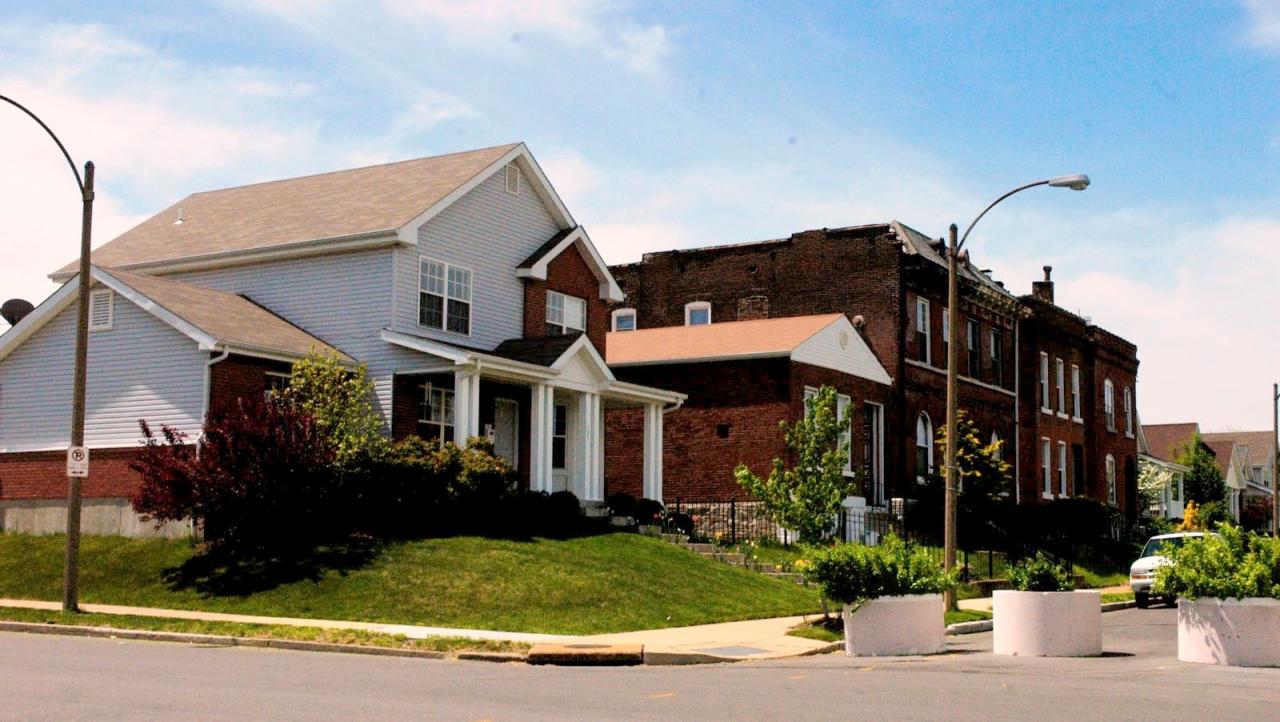
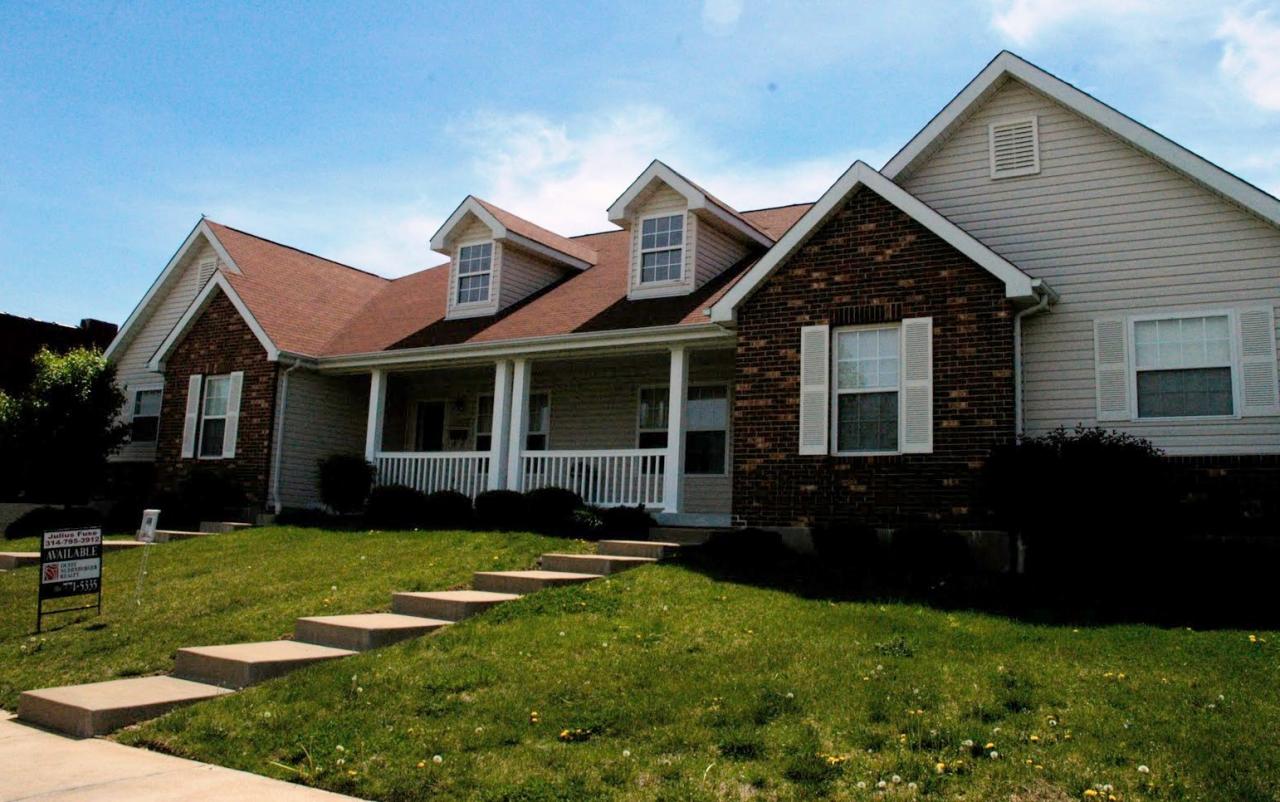
I’m aware that when generations let neighborhoods slip for long enough, there are gaps, sometimes blocks of fallow land that must be filled. Some intentions are better than others; these attempts at filling holes don’t agitate me as bad as others.
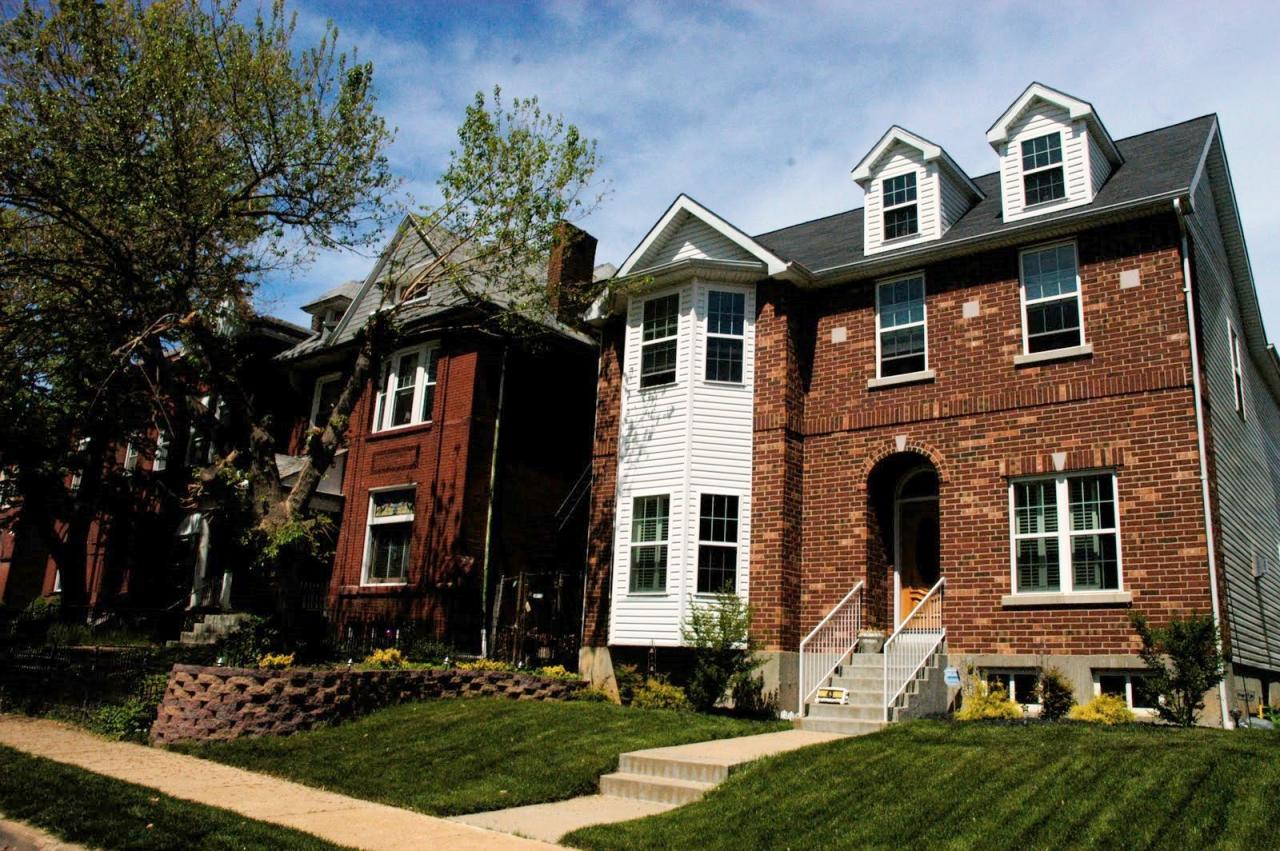
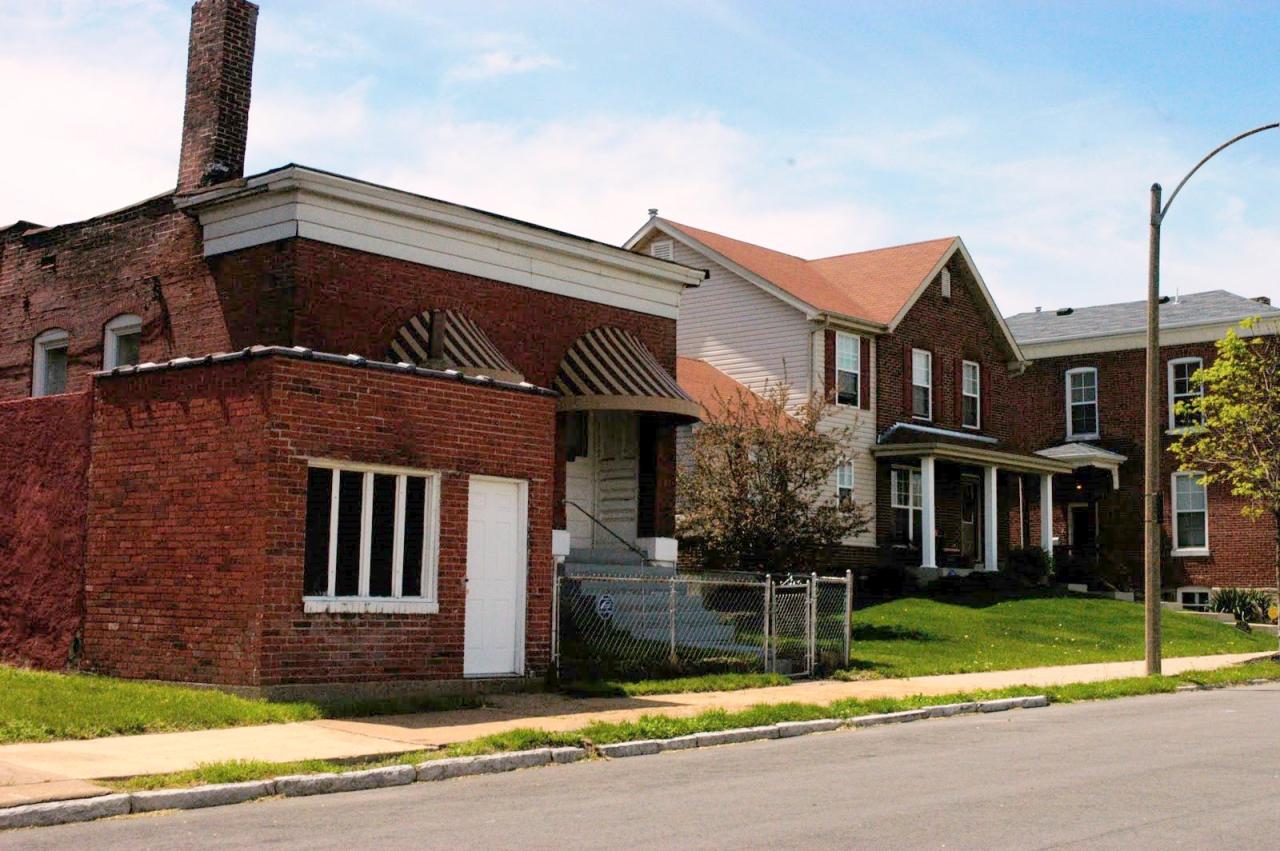
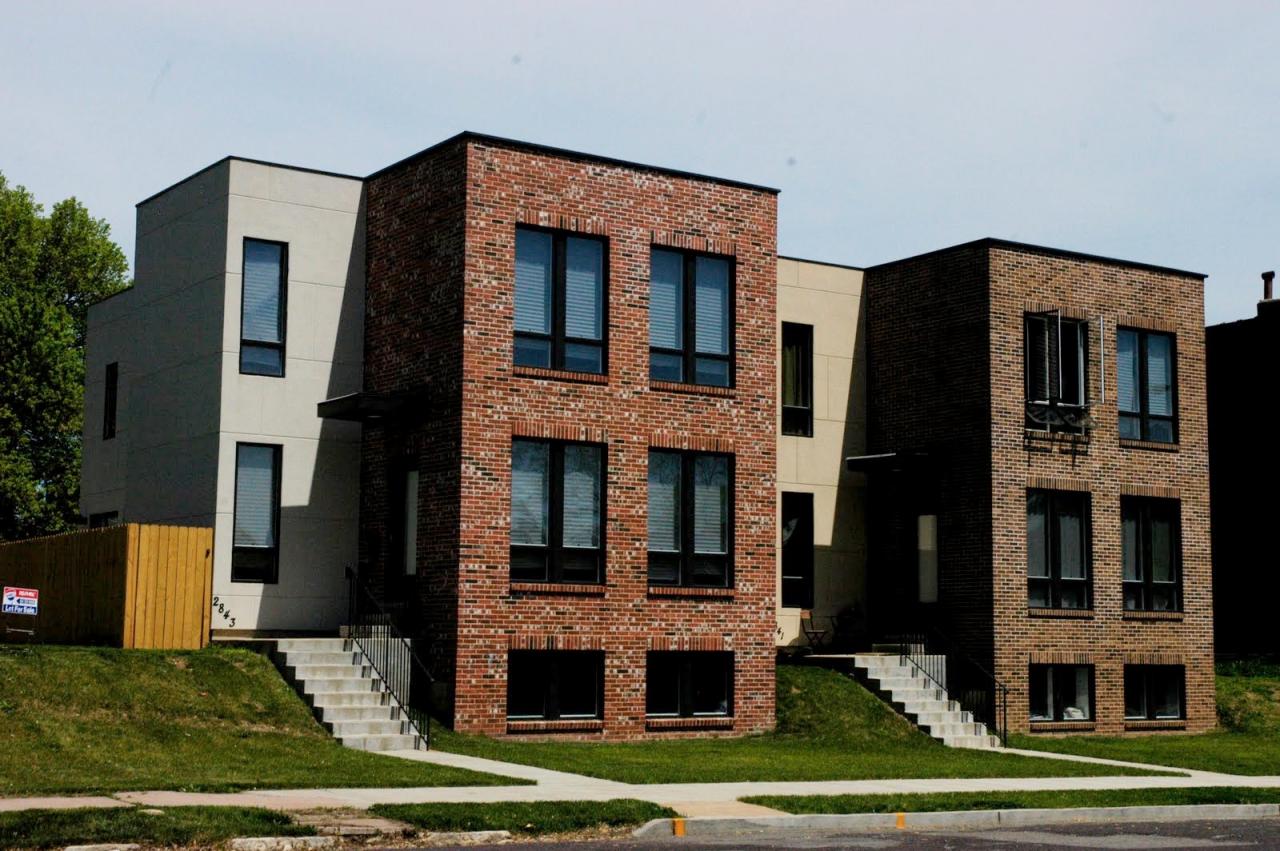
Some are in the grey zone:
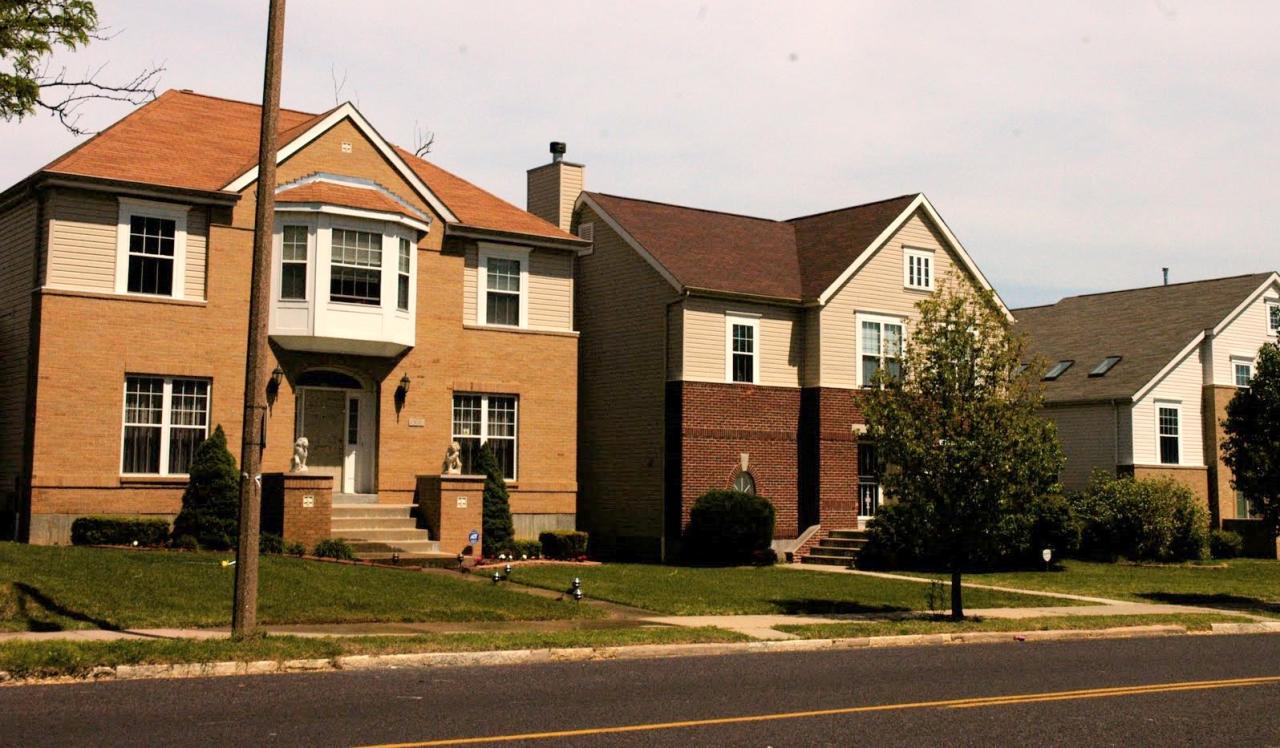
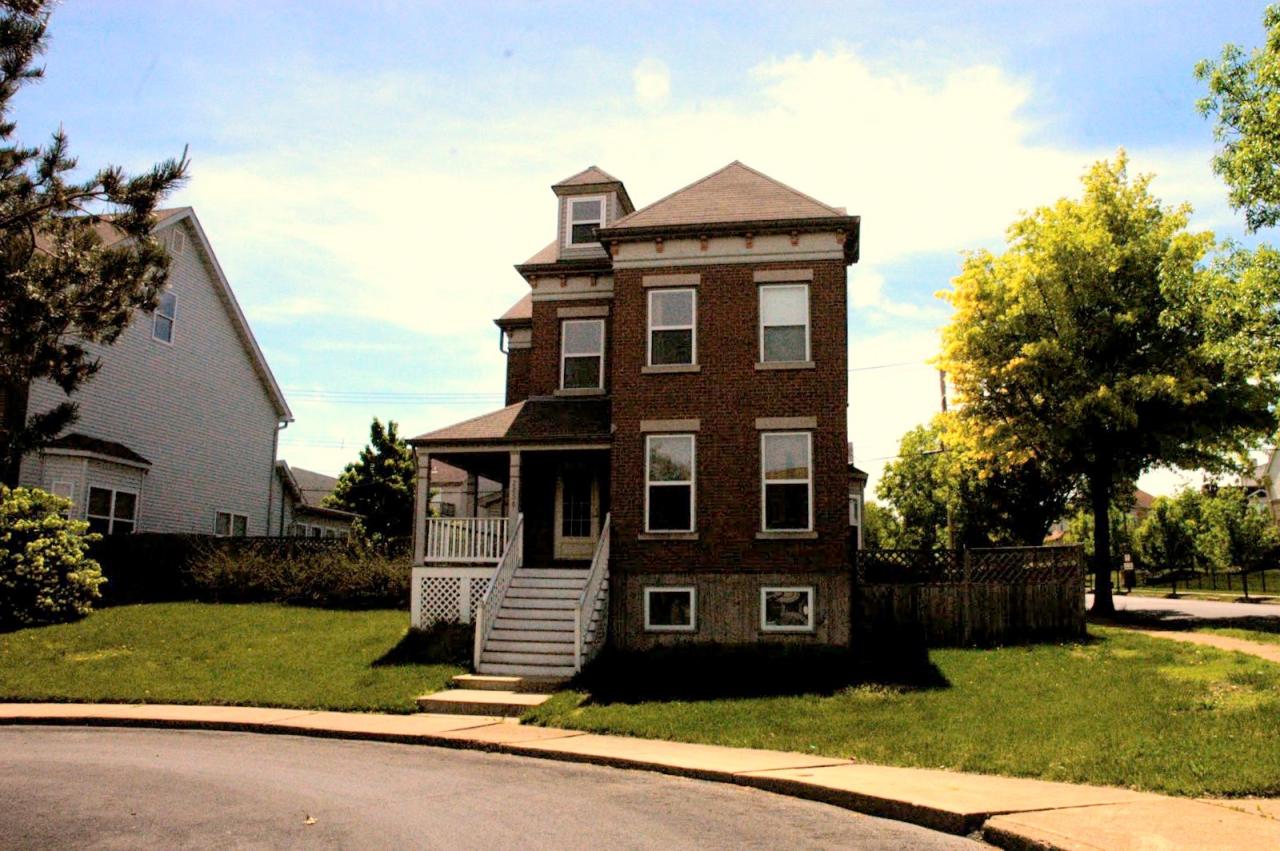
Eads Square apartments:
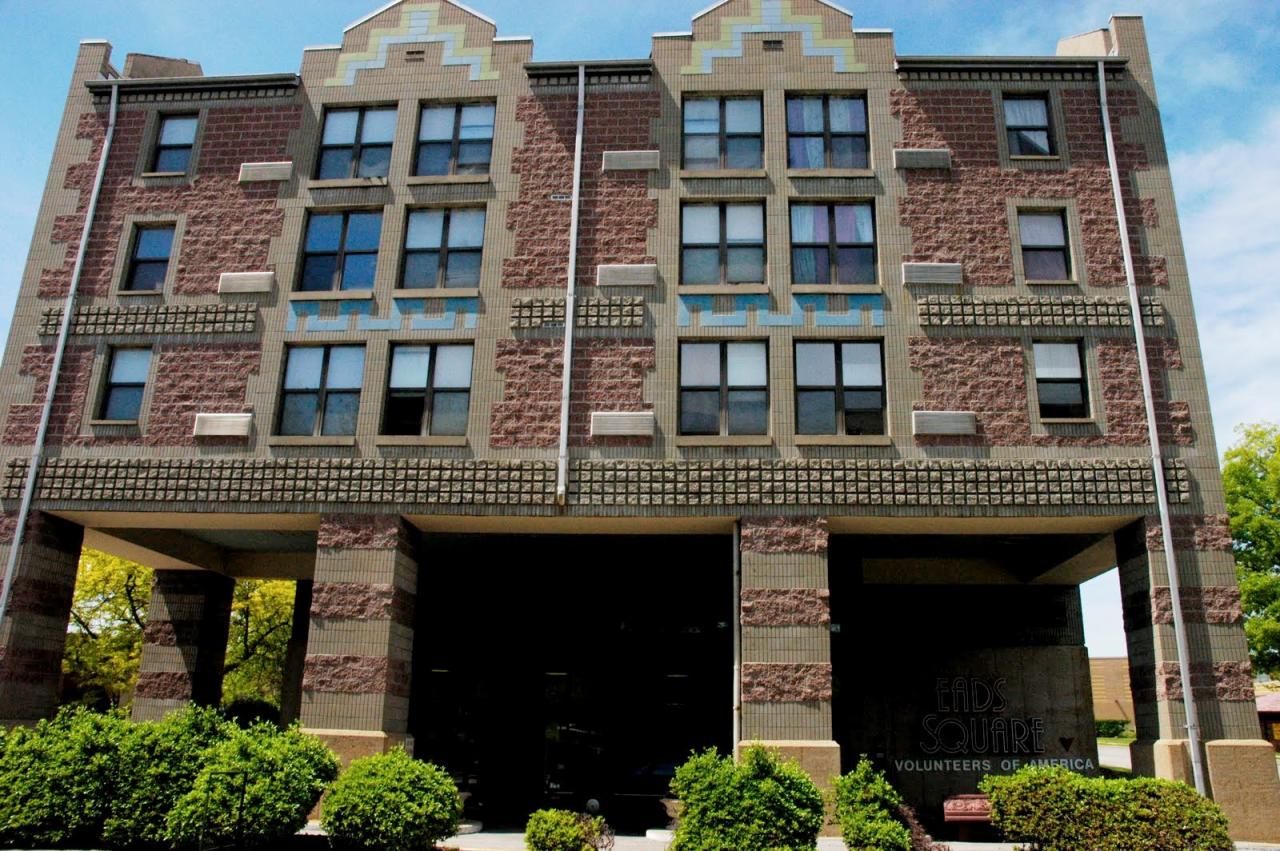
But there are still many empty fields withing the Gate District. Let’s try to be smart and develop these with pride and vision toward the future.
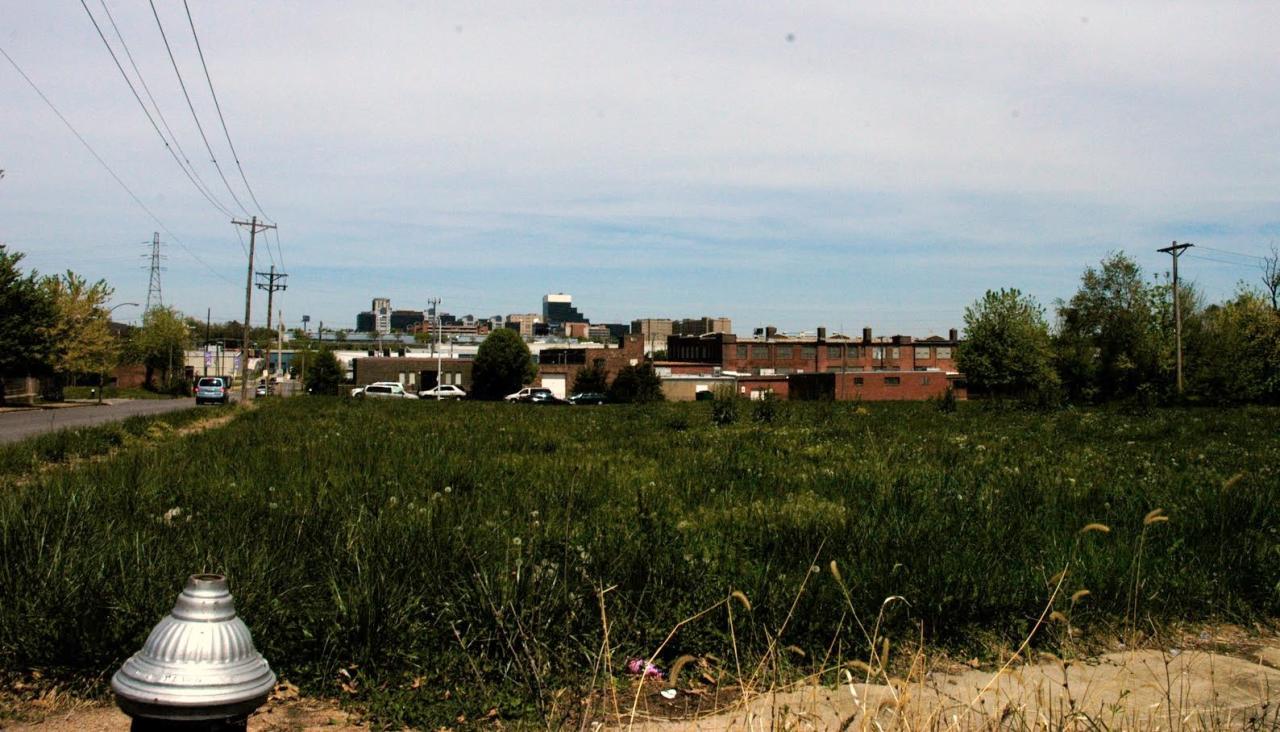
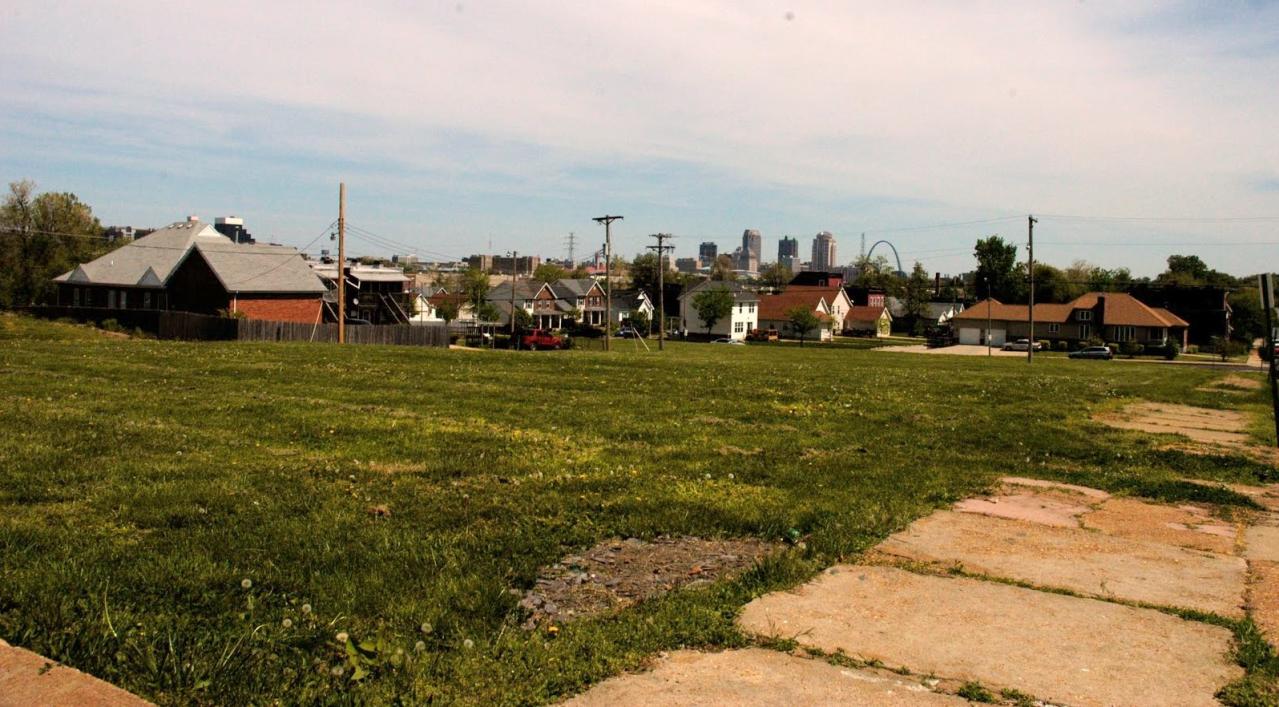
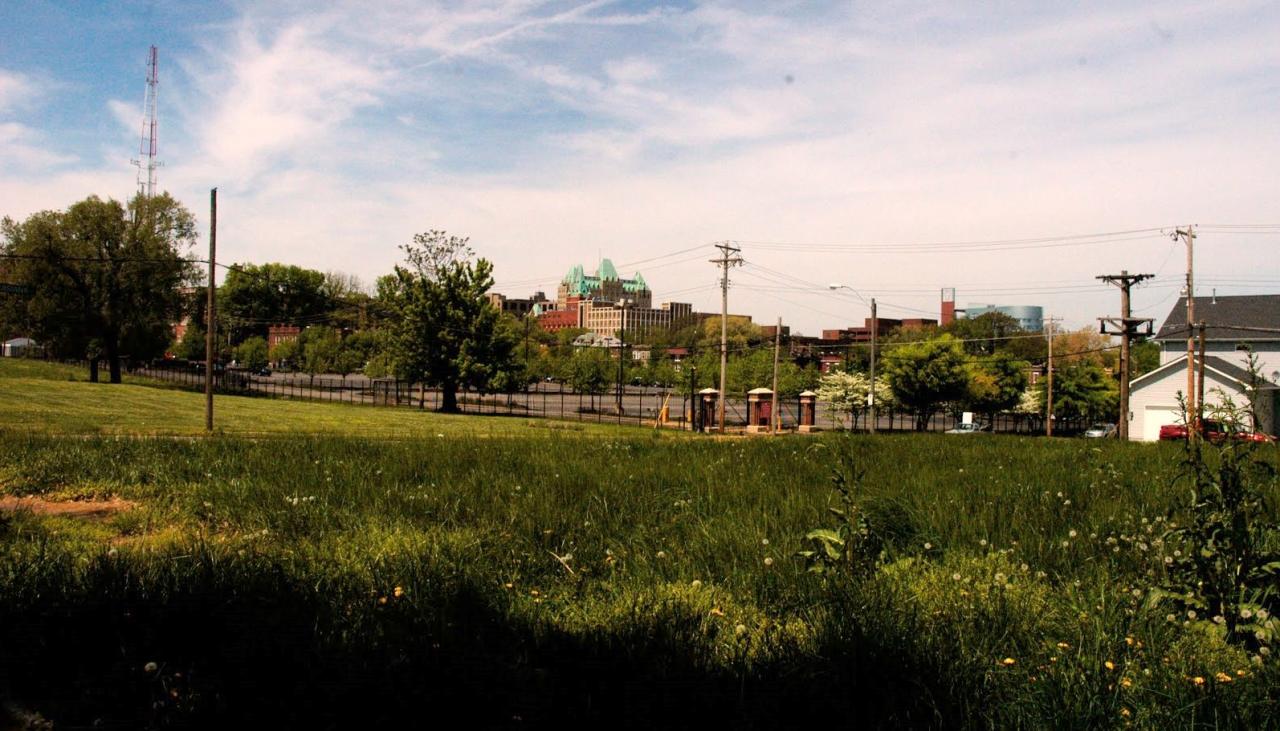
Let’s fill these empty spaces up with something special, we deserve it. But to all those who are rehabbing stately homes and opening businesses and hanging on here; or to those that just want a new(er) house so bad and you don’t want to leave the city…I will apologize if I’ve offended in any way. That’s not my intention. My simple goal is to accurately capture my feelings and thoughts in a ~2 hour period of driving around the Gate District. And try to describe how the Gate District fits in and compares to it’s other 78 city neighborhoods. There are people out there with sweat and $ equity in careful rehabs recent, on-going and planned; these are lauded efforts:
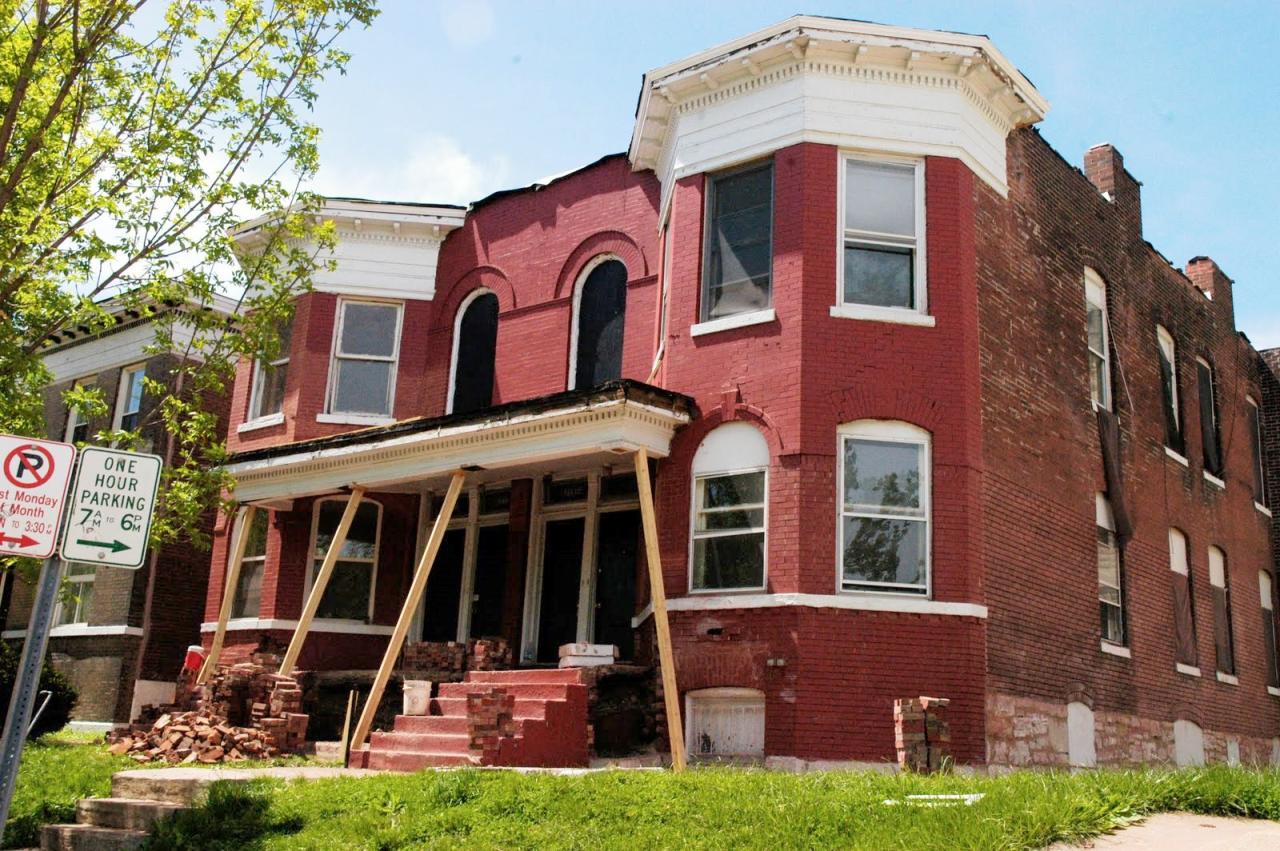
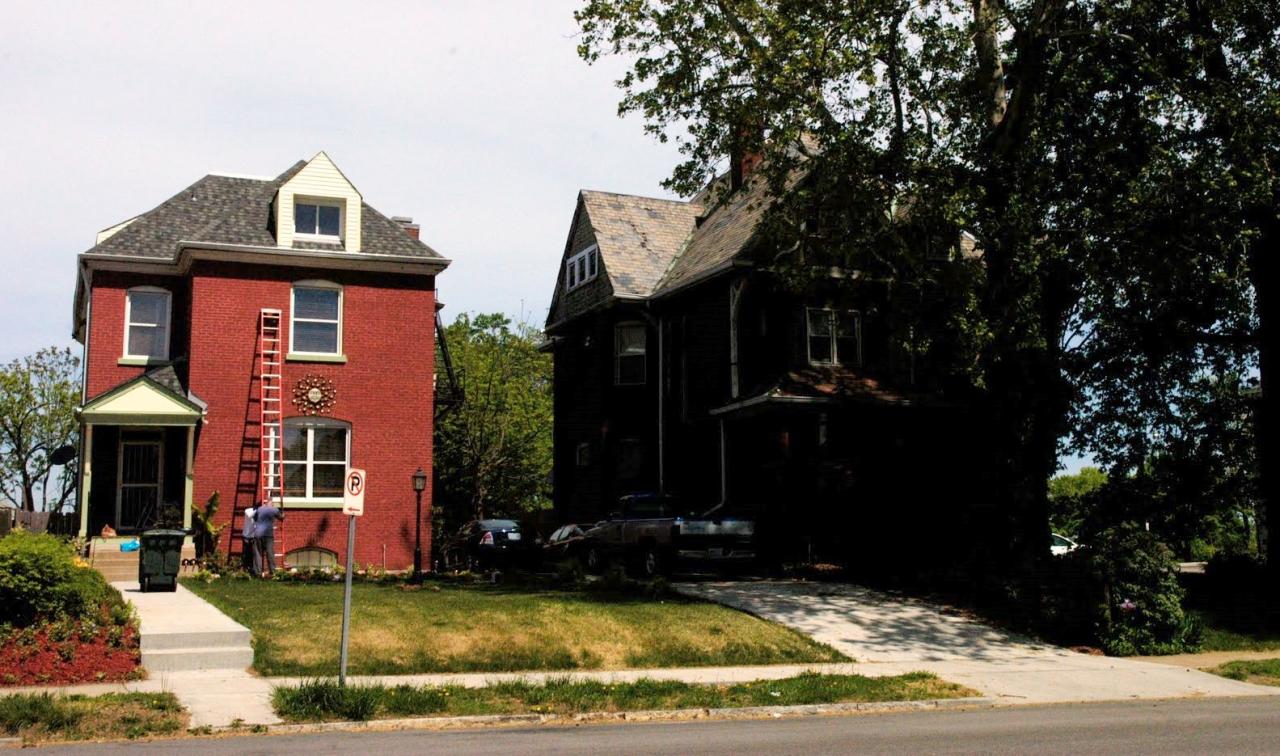
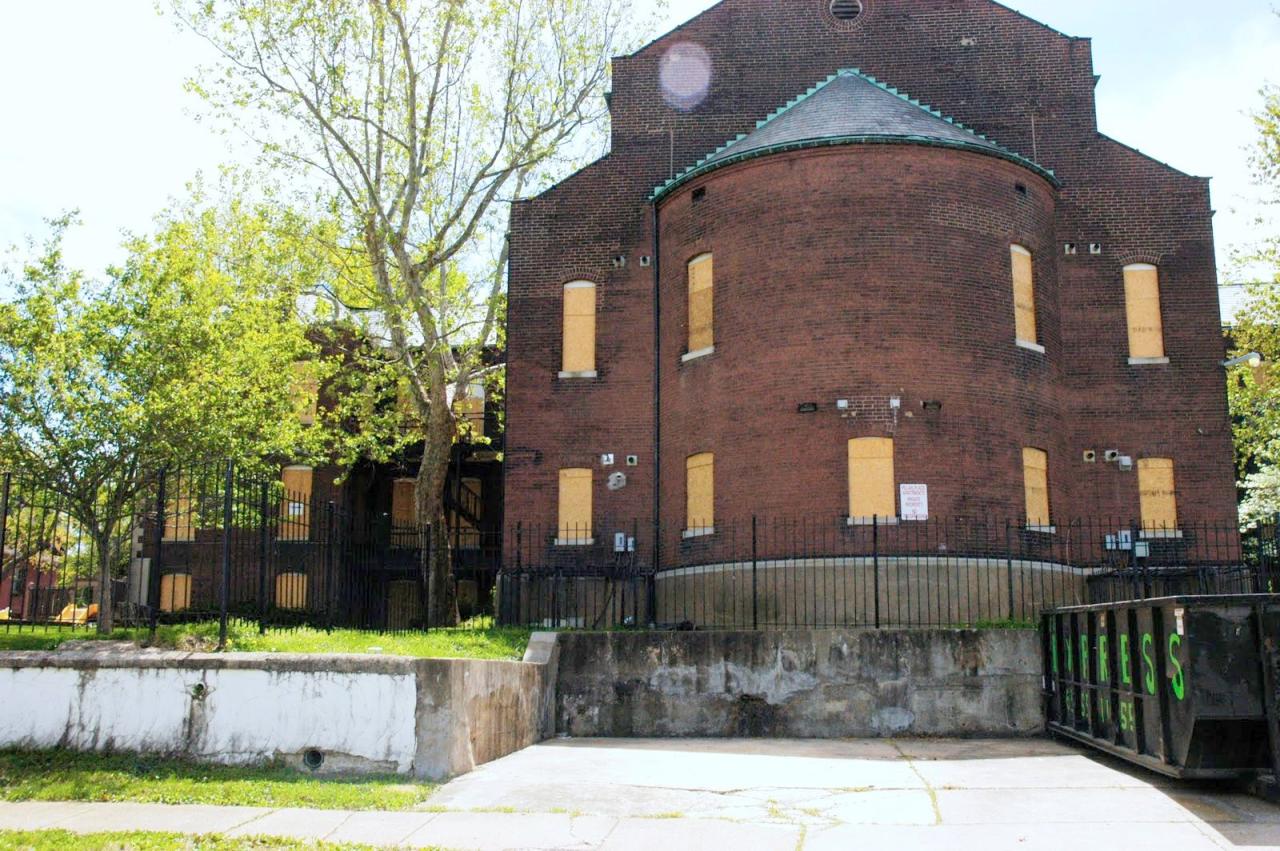
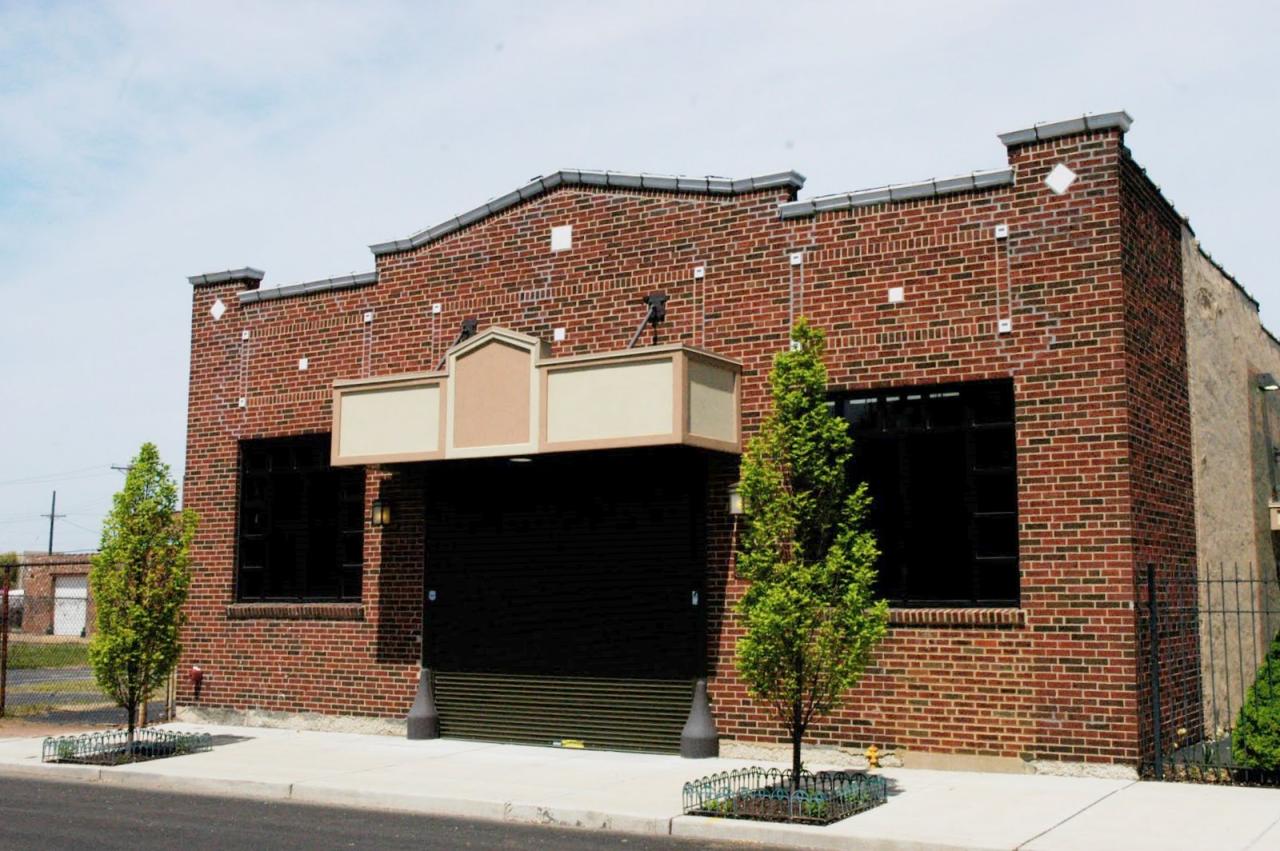
My intention is merely to show that some people’s current day eyesores are some people’s land marks and gold mines and neighborhood treasures:
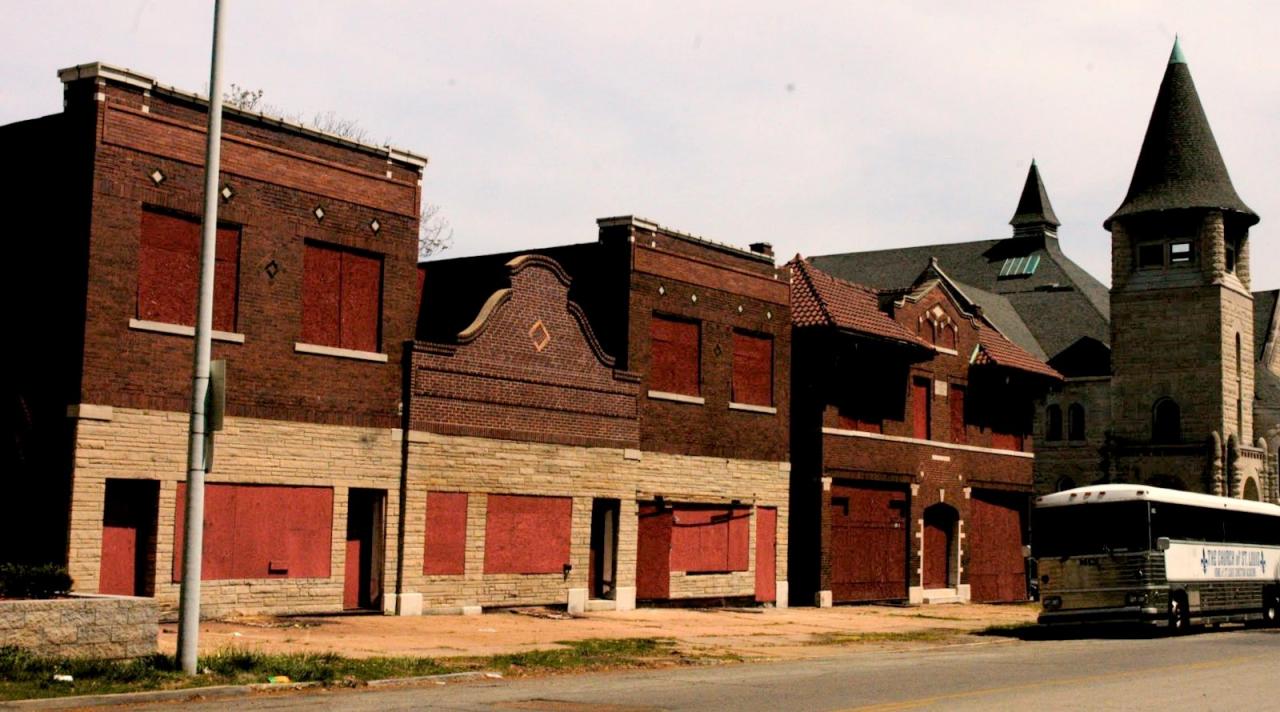
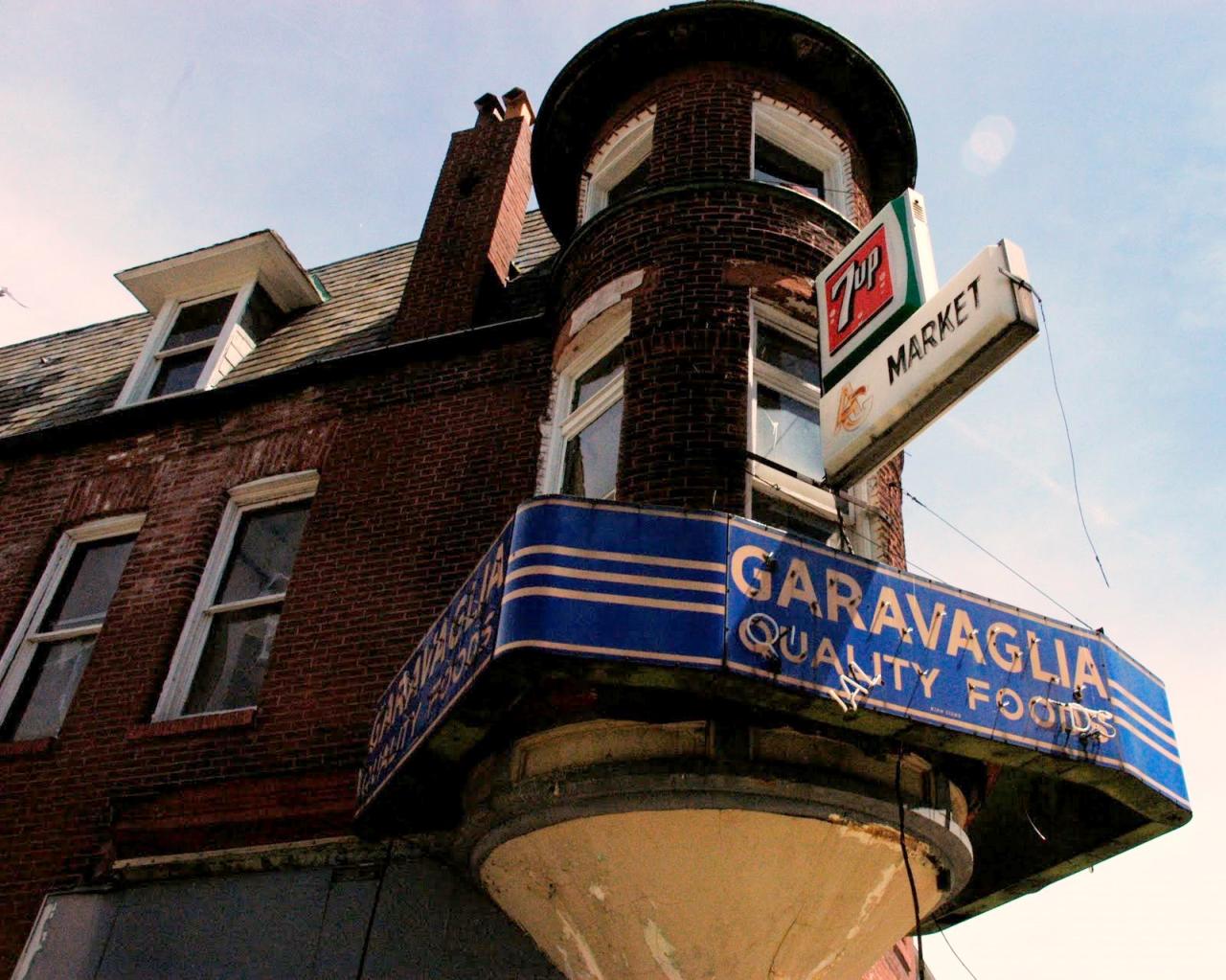
Sadly, since my 2010 blog, the “Garavaglia” building has fallen into greater disrepair as the owner has done nothing to sure up the building. The iconic corner is crumbling as evidenced by this 2016 photo:

And quick profits and short sighted fixes usually turn out for the worse. Because the crap that builders put up today doesn’t come close to matching the craftsmanship that occurred when America and St. Louis was a power house of pride and money.
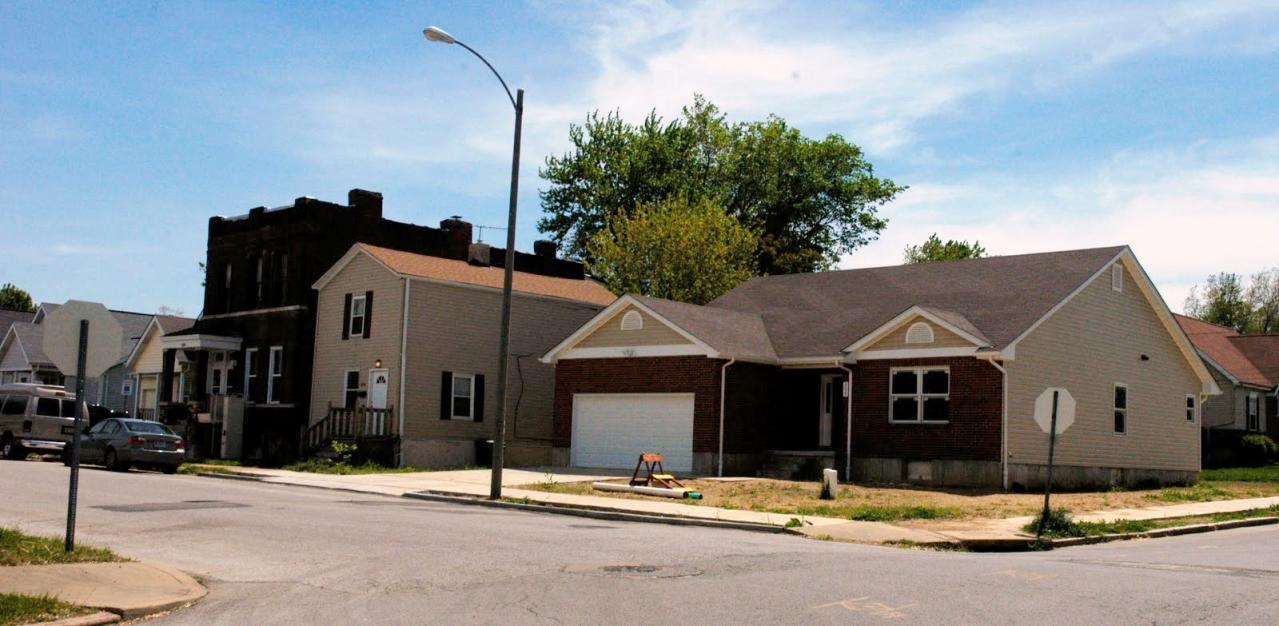
There is a part of the Gate District a block south of Chouteau on LaSalle Street called the floral district where greenhouses, warehousing and distribution facilities exist around the botanical business. This is the part of town that makes many of the arrangements for the supermarkets and other places around town. You’ll see women ordering flowers for their weddings, etc. There are full-service nurseries open to the public with both indoor and outdoor plants. I highly recommend shopping here as there are NO lines and excellent service and your money stays in the region vs. the larger chain nurseries at Home Depot/Lowes. This is a hidden gem, you can read my thoughts and check out more photos on a blog I did on Florist Row back in 2015.
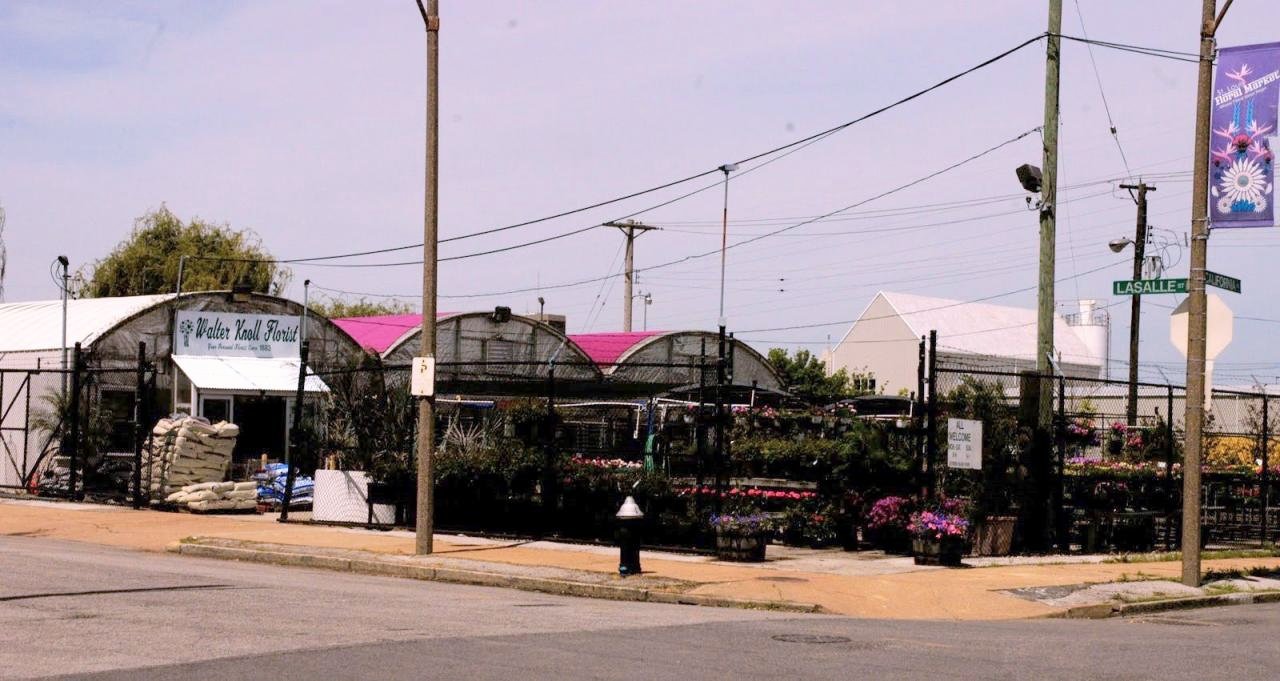
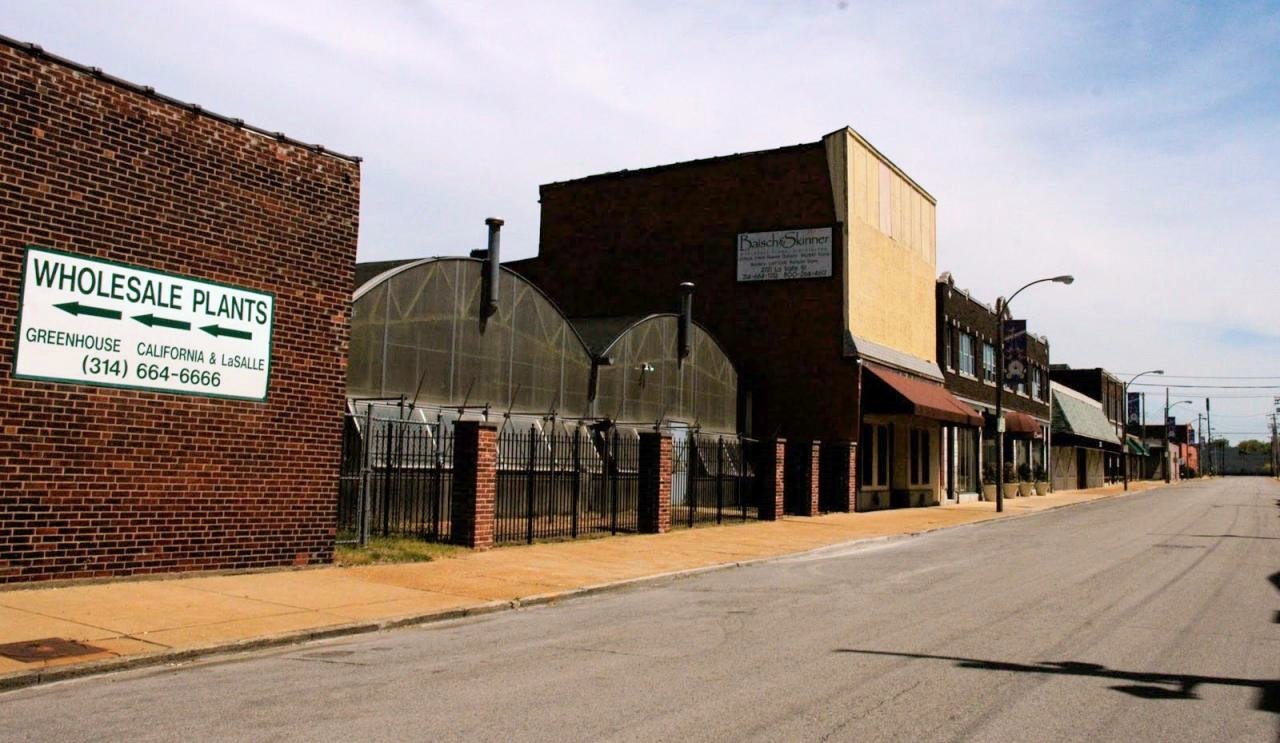
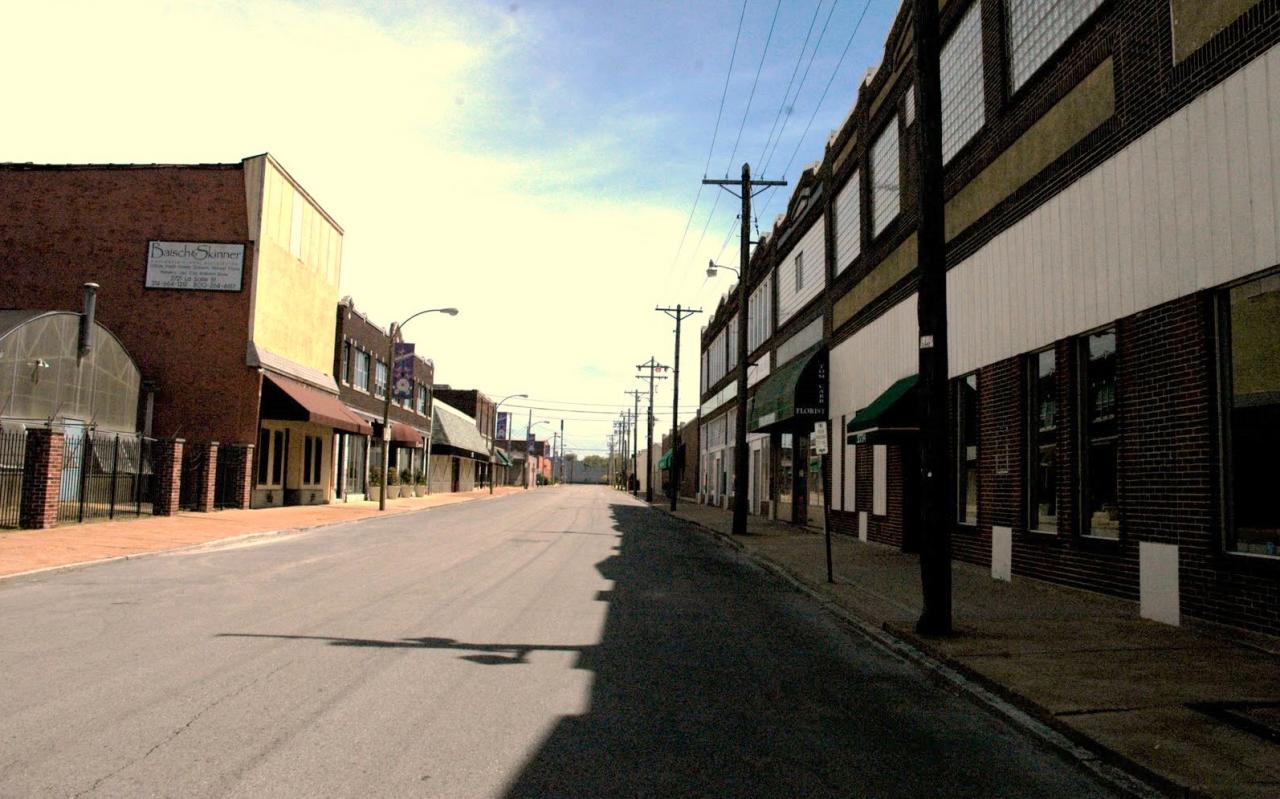
St. Louis University has some fantastic buildings in their medical campus. Some with great context and thoughtfulness:
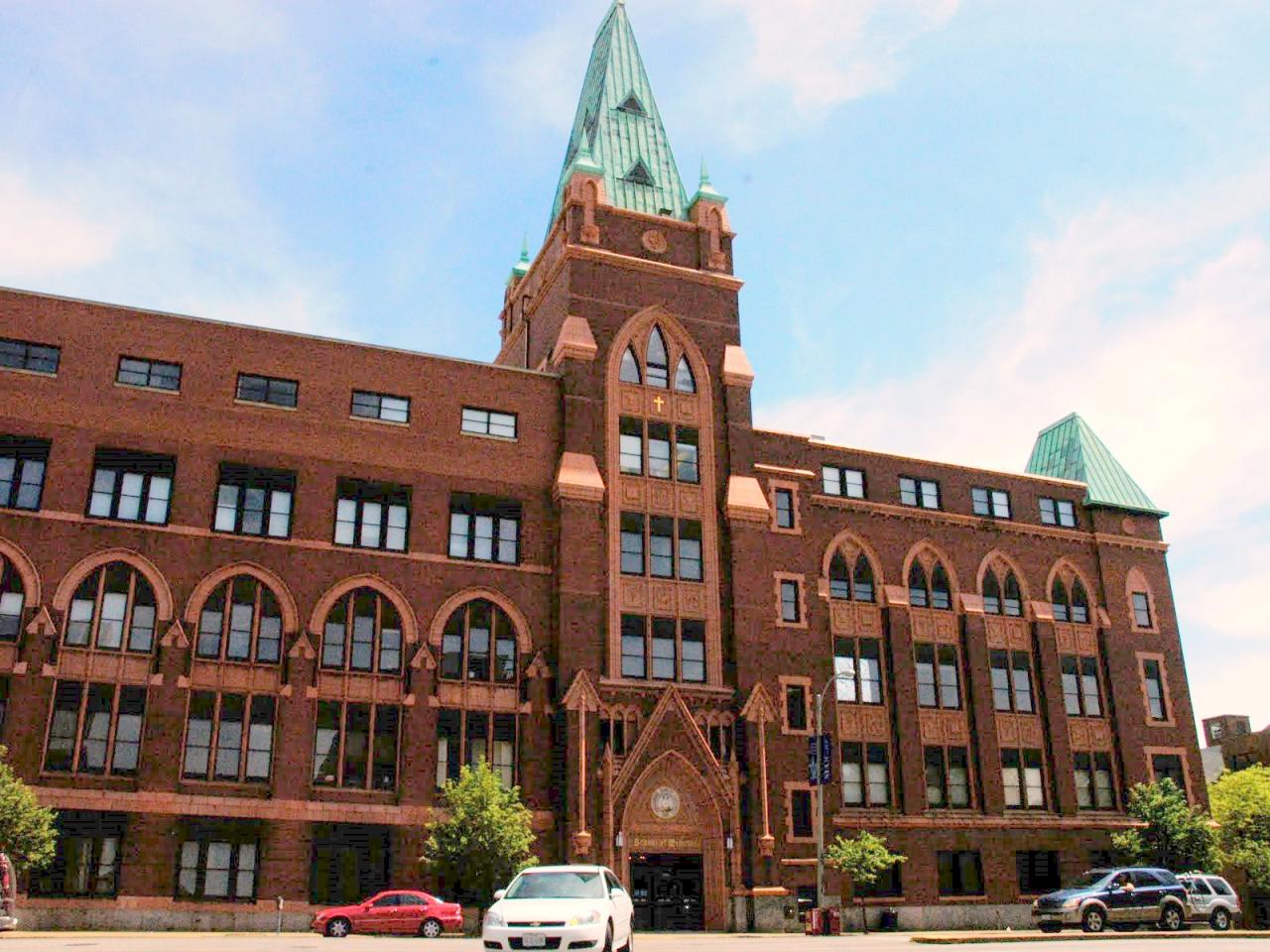
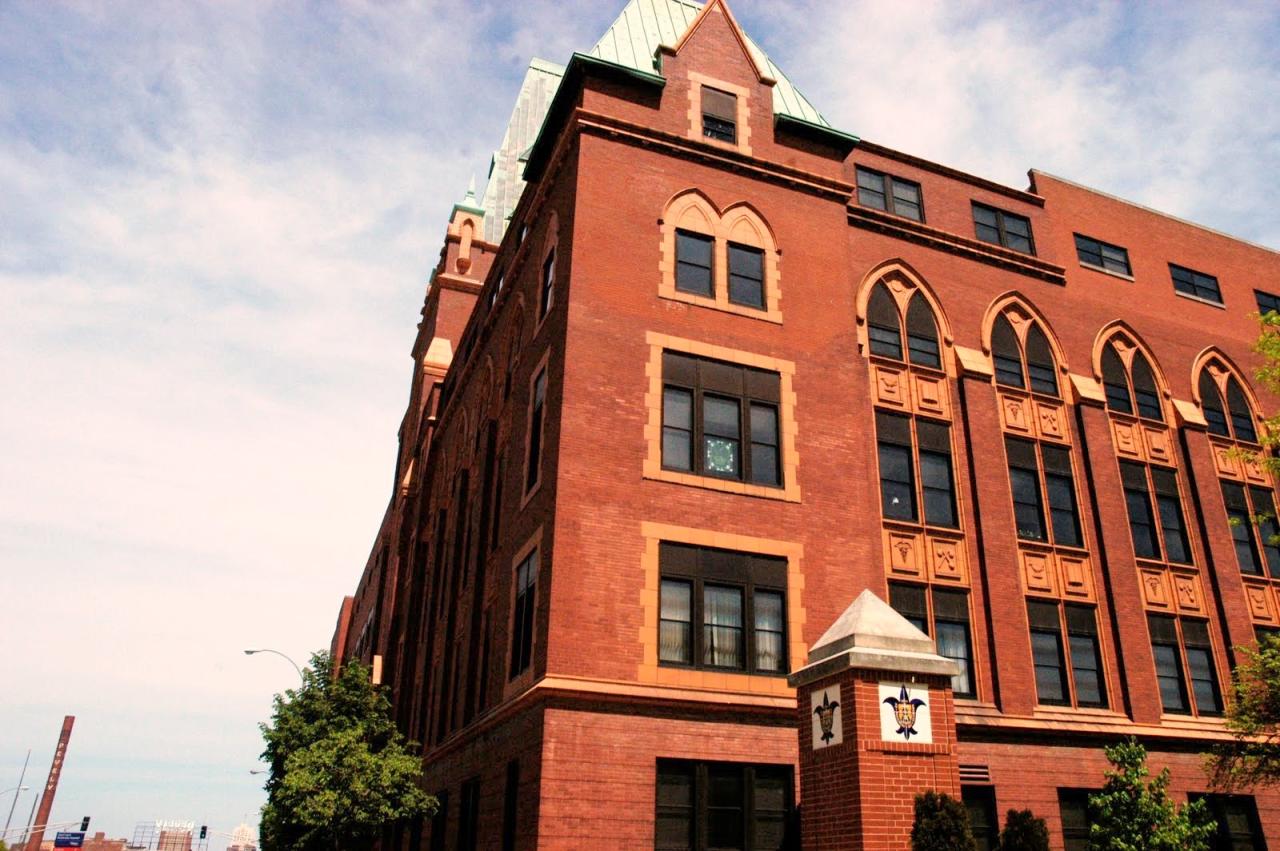
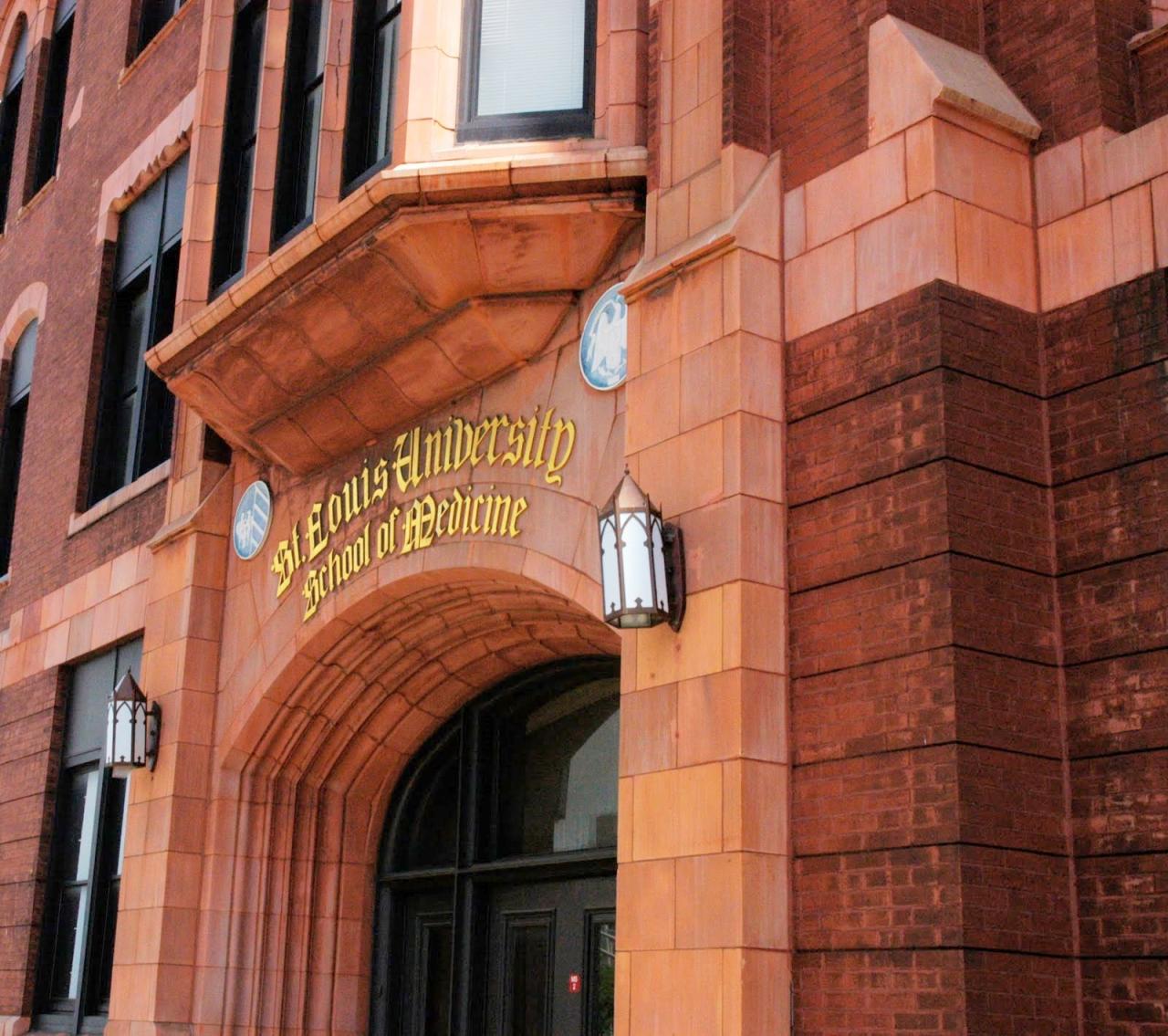
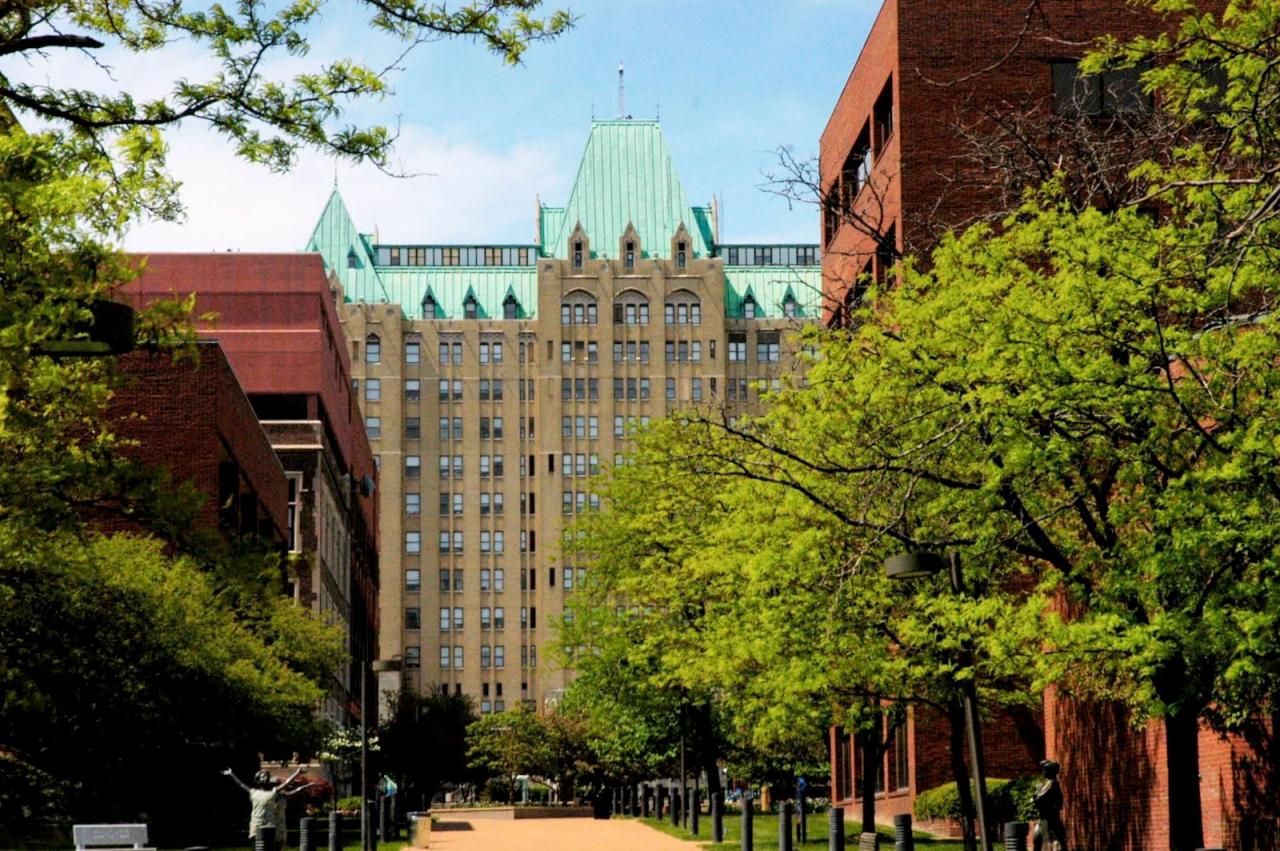
Well done SLU, this is a nice mid-century rehab too:
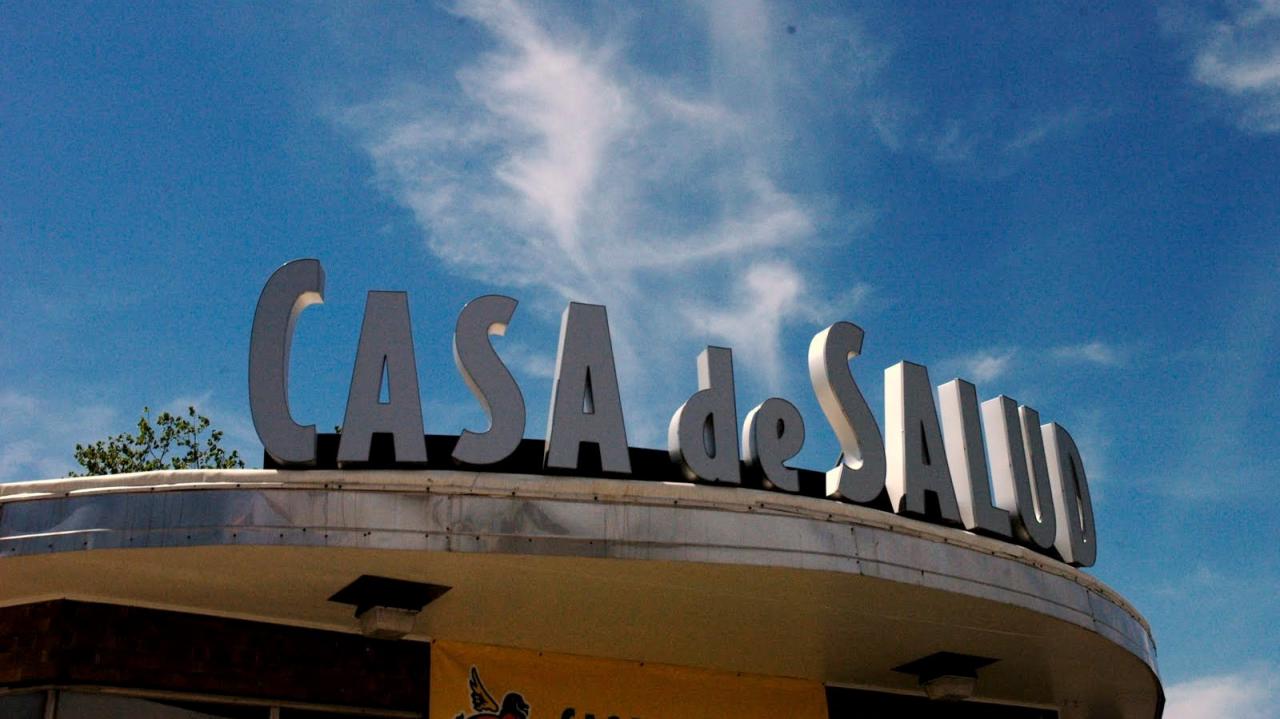
Crave Coffee/church/day care is a nice use of an old church on campus:
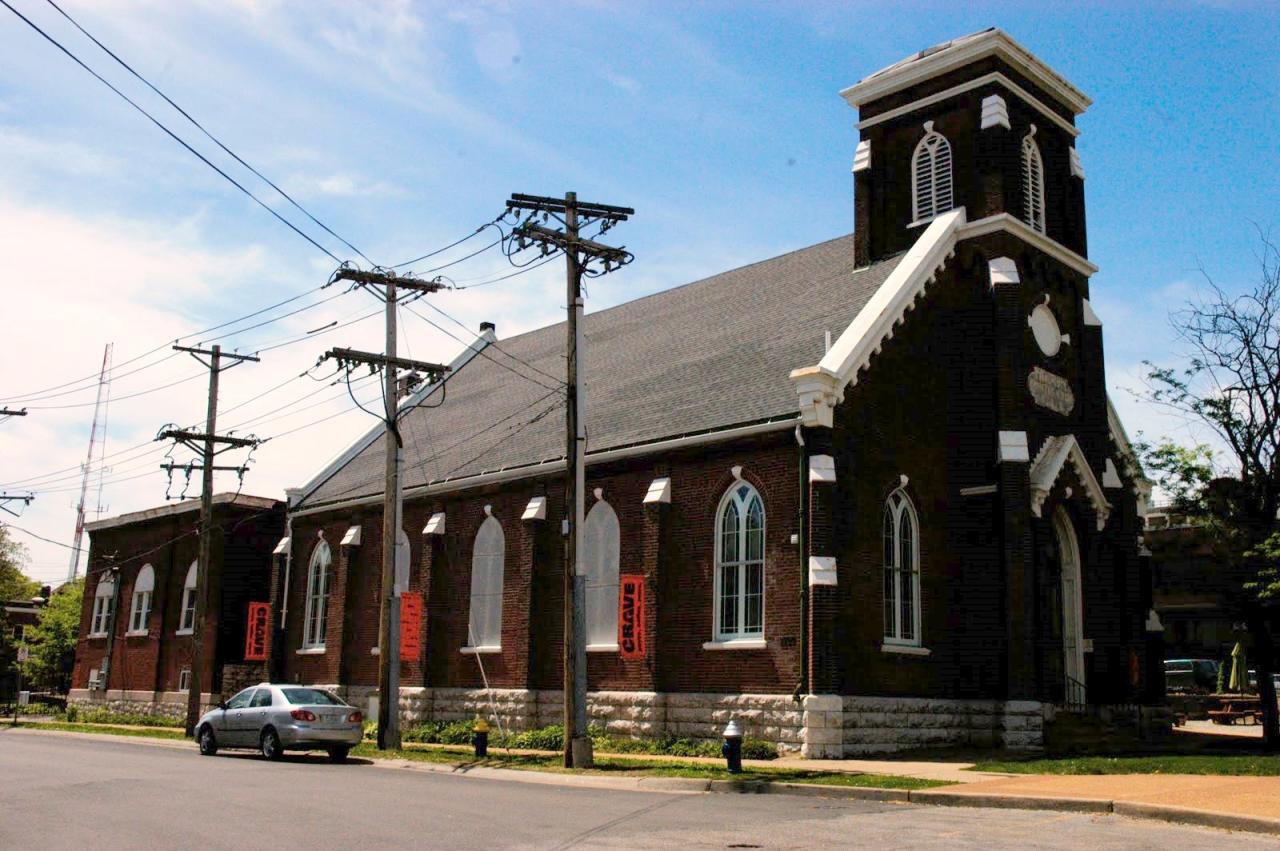
Some with the best of modern intentions, but placed carelessly:
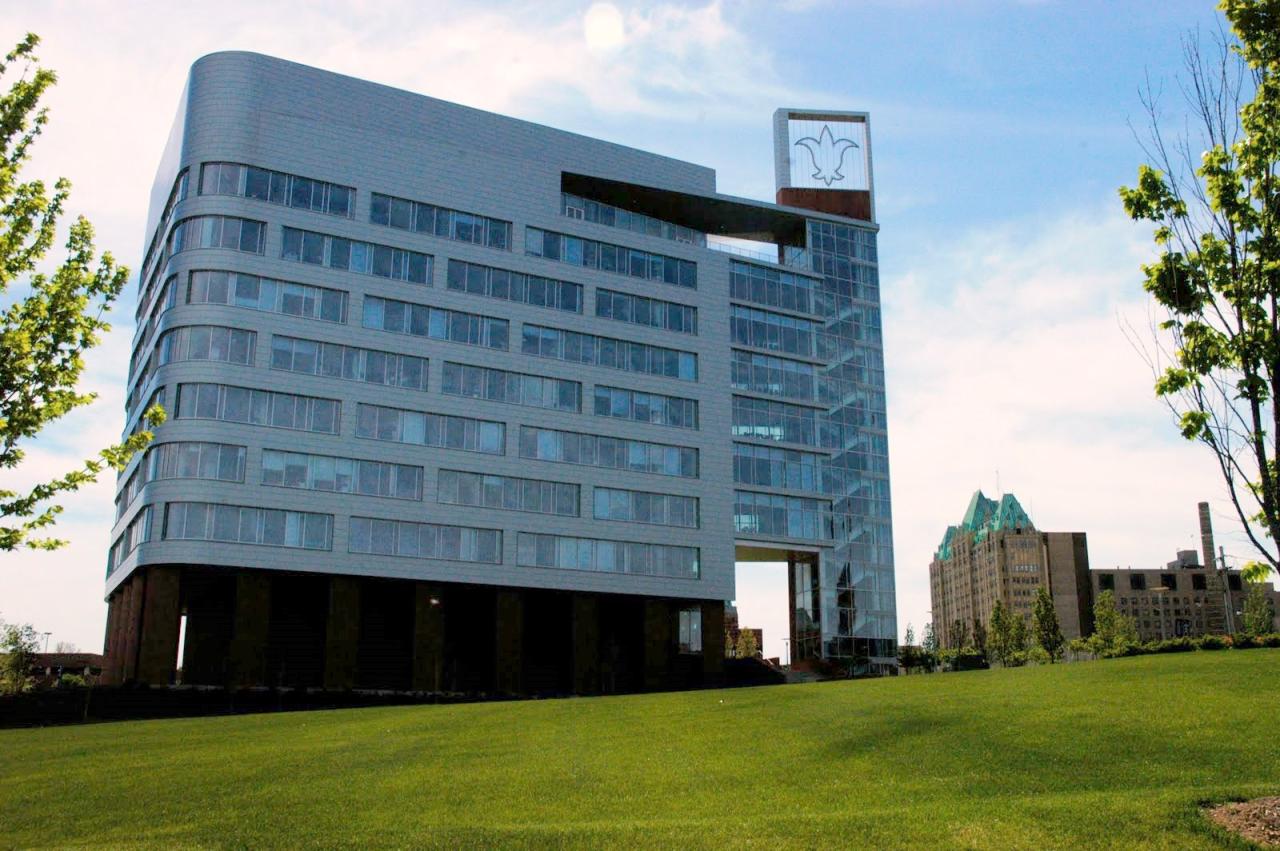
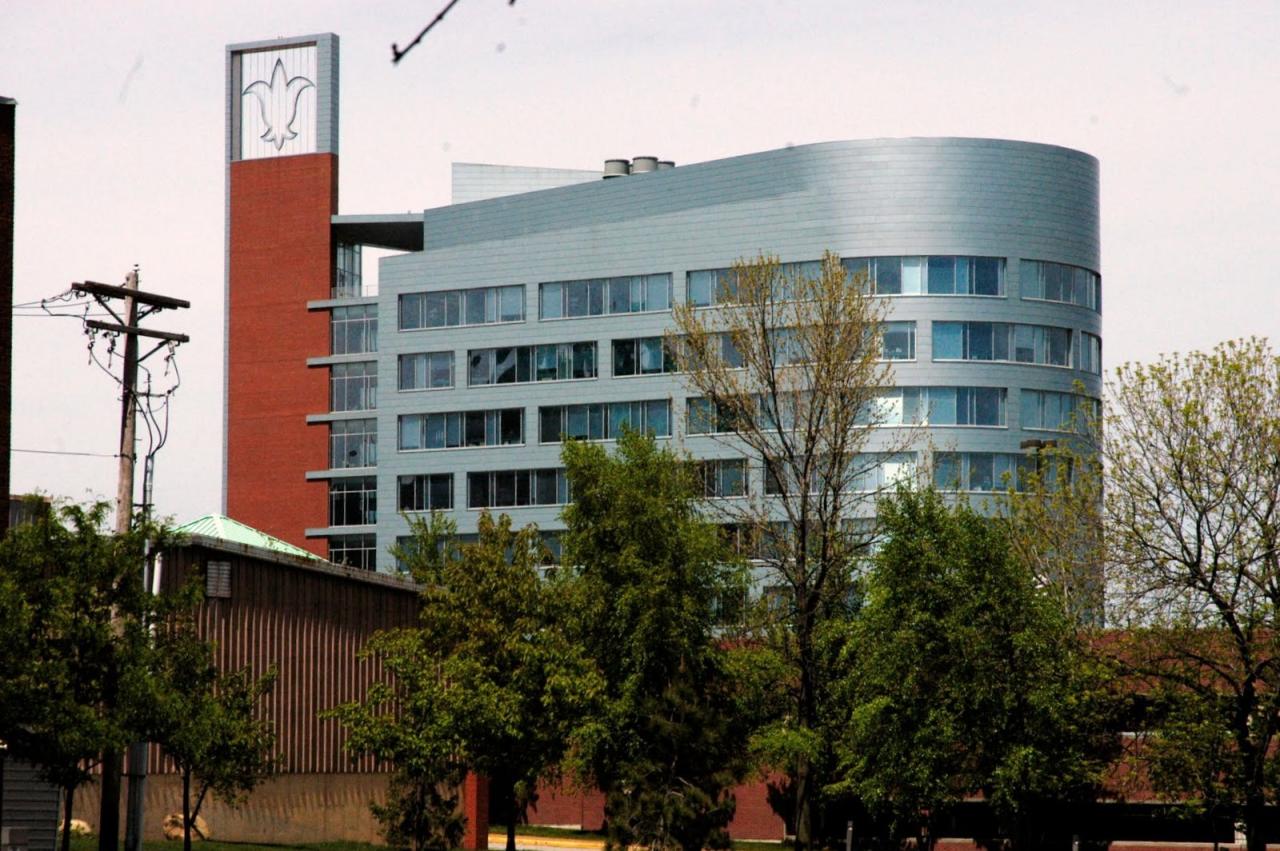
The landing pad has been cleared and the mothership has landed….right on top of Peerless Furniture (locals will get this, others flummoxed). For what it’s worth, I’ve never seen a human being enjoying the day or the “lawn” on this important corner. Never…it’s a dead zone. Don’t get me wrong, I like this building but the placement was wasted.
And then the not so pretty ones:
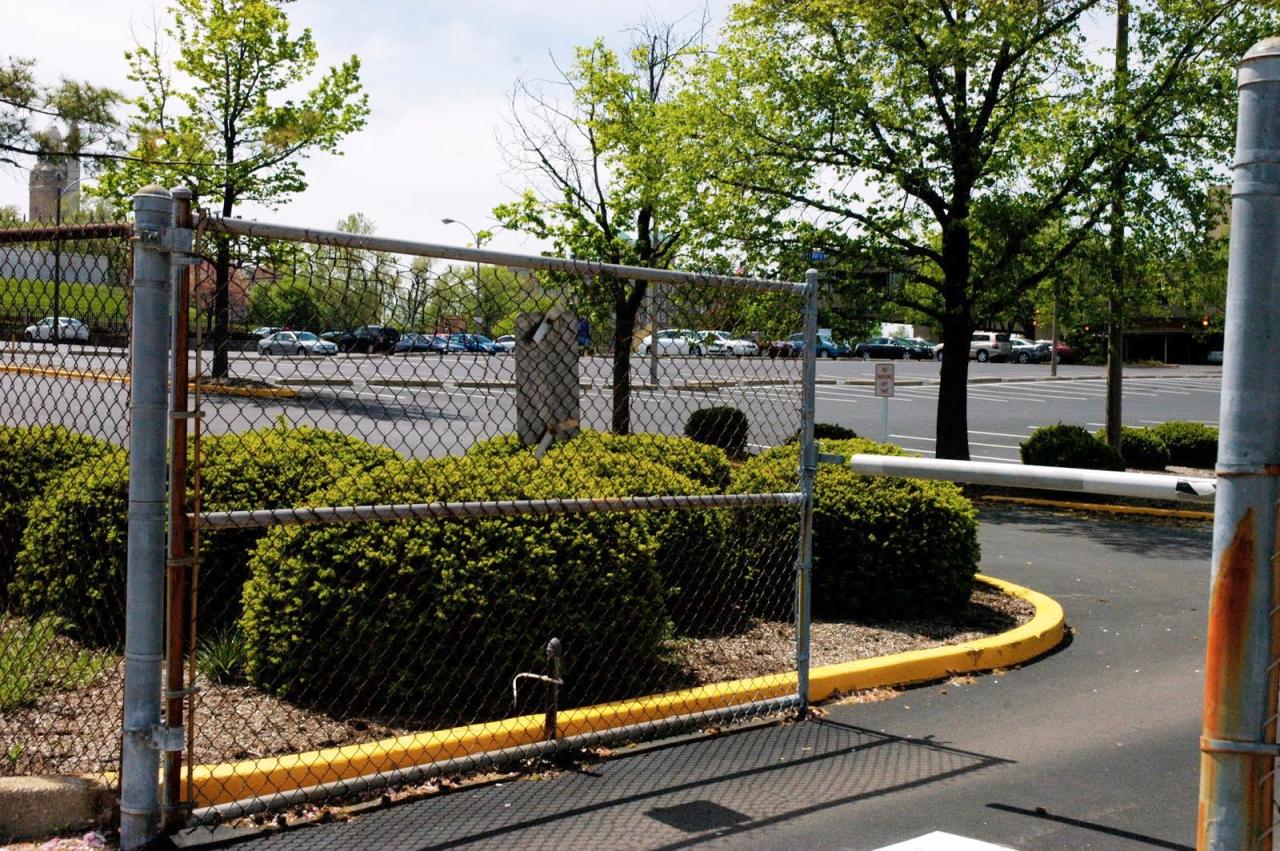
SLU has a major propensity toward massive surface parking lots and “green space” (read rabbit pastures). I don’t want to overly criticize them though for their late 20th century “acquisitions”, as I think SLU is an essential partner in STL’s future. For the most part, I love their work (see Midtown), and I may be a little short sighted in that they are land grabbing cheap property that the people of the last 50 years shat upon. I think the western portion of the Gate District will look better as SLU expands and figures out that St. Louis University is better served to look like Harvard as opposed to UMSL. Aim high, not low American academia.
Grand still looks good in the Gate District:
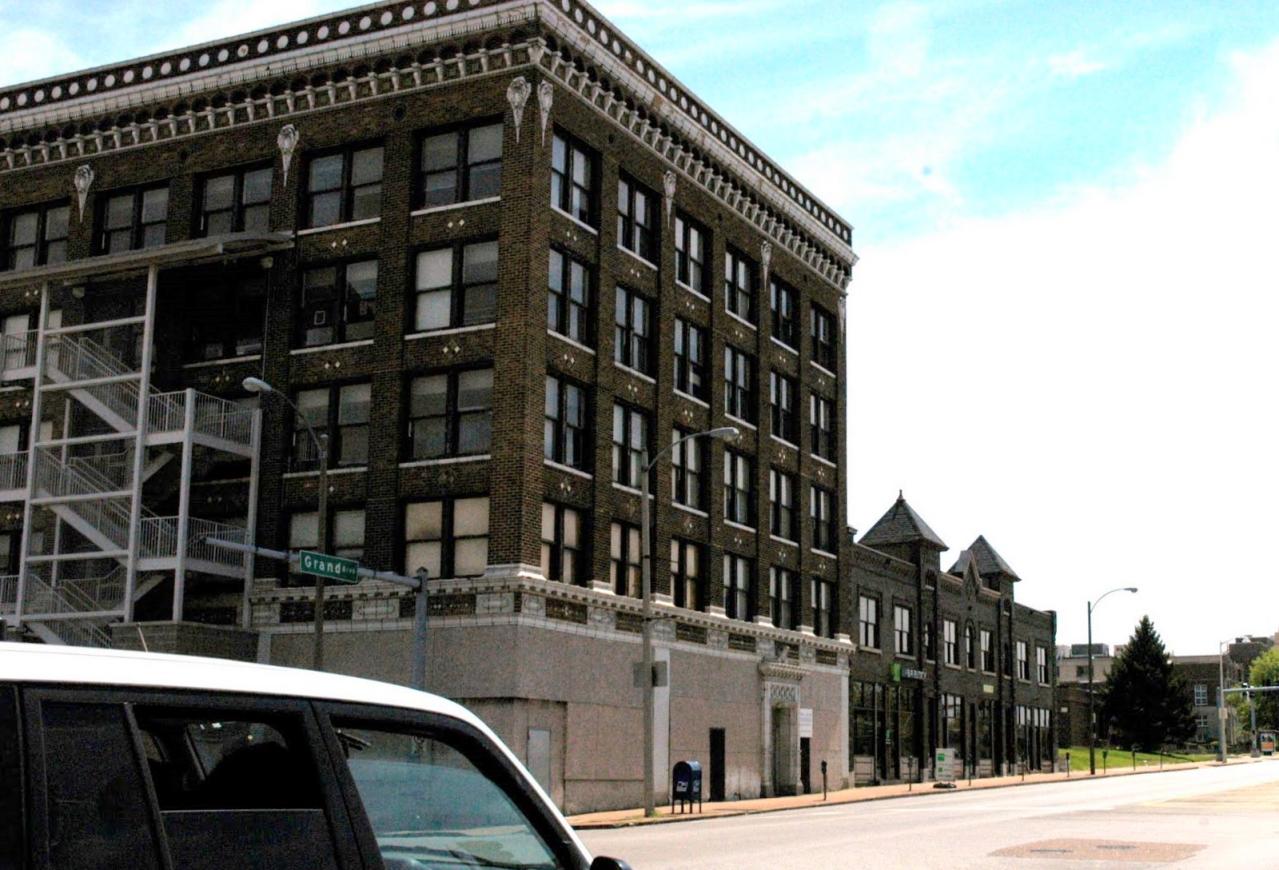
This house reminds me of upper New England:
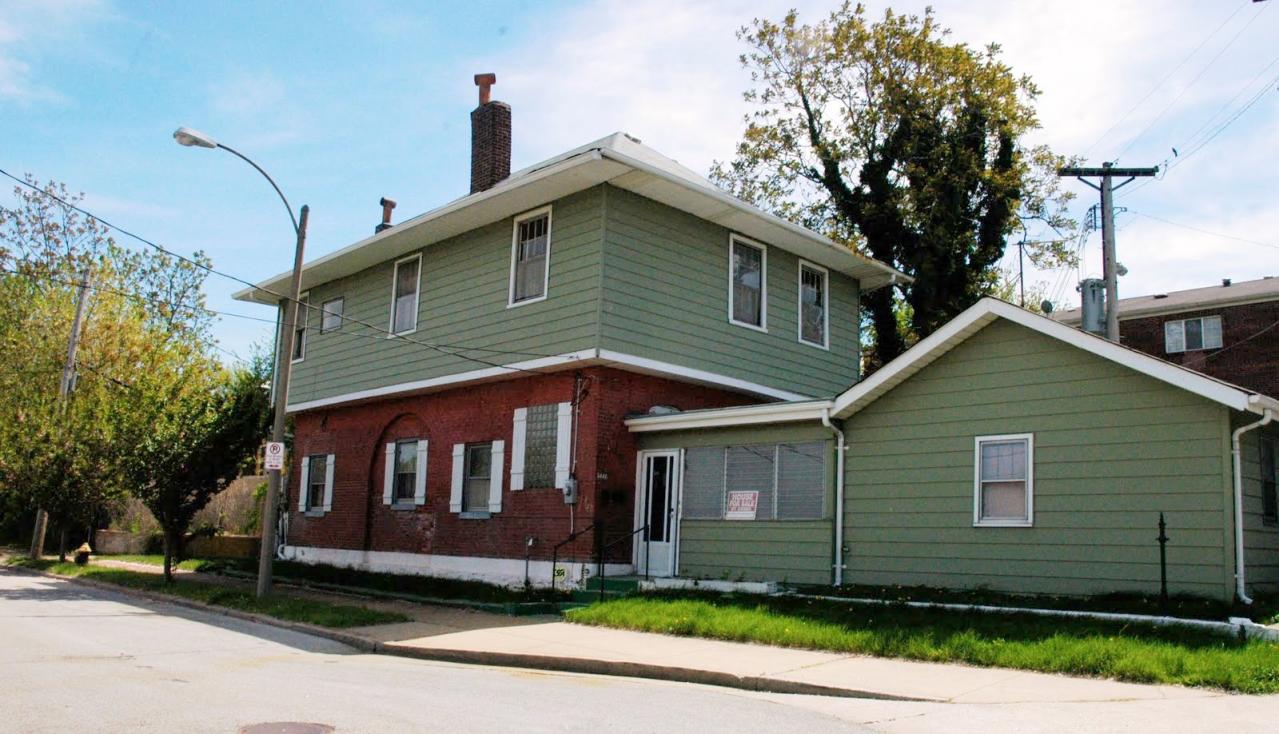
Diner’s Delight has updated their restaurant along Compton, serving up St. Louis style soul food.
St. Louis Post-Dispatch food writer Ian Froeb says the oxtail earns this place a spot in the St. Louis Top 100 restaurants.
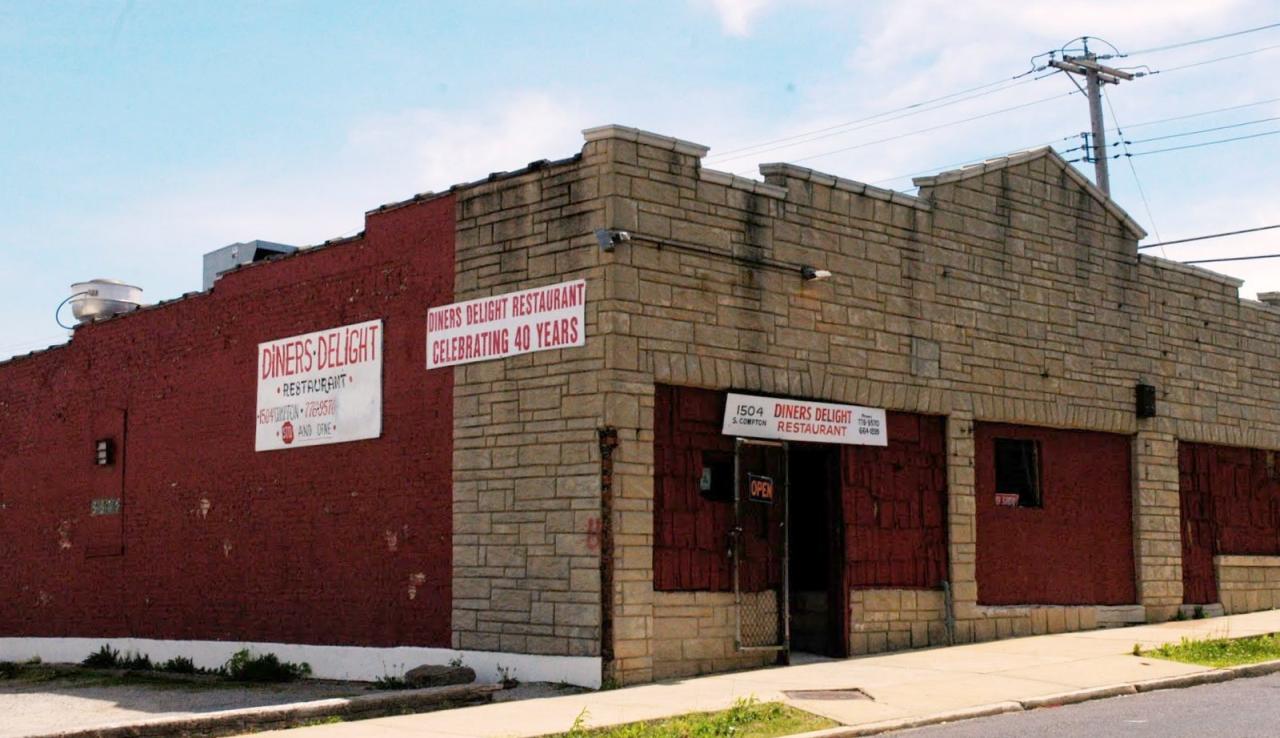
before

after
The Gate District is served by two parks, Terry Park just west of Compton and Buder Park. One of my observations of Terry Park when I blogged on it in 2014 was the dilapidated fence near the basketball courts. Since then, the fence has been replaced and new street trees were planted making a HUGE difference in the curb appeal of the park.

Buder park has seen investment in new children’s playground equipment and an adult workout area.



What’s up with the old Sikorsky helicopters and Vietnam era jets (A7, F-105? can’t tell)? Probably have something to do with the LaSalle Iron Works, but not sure.
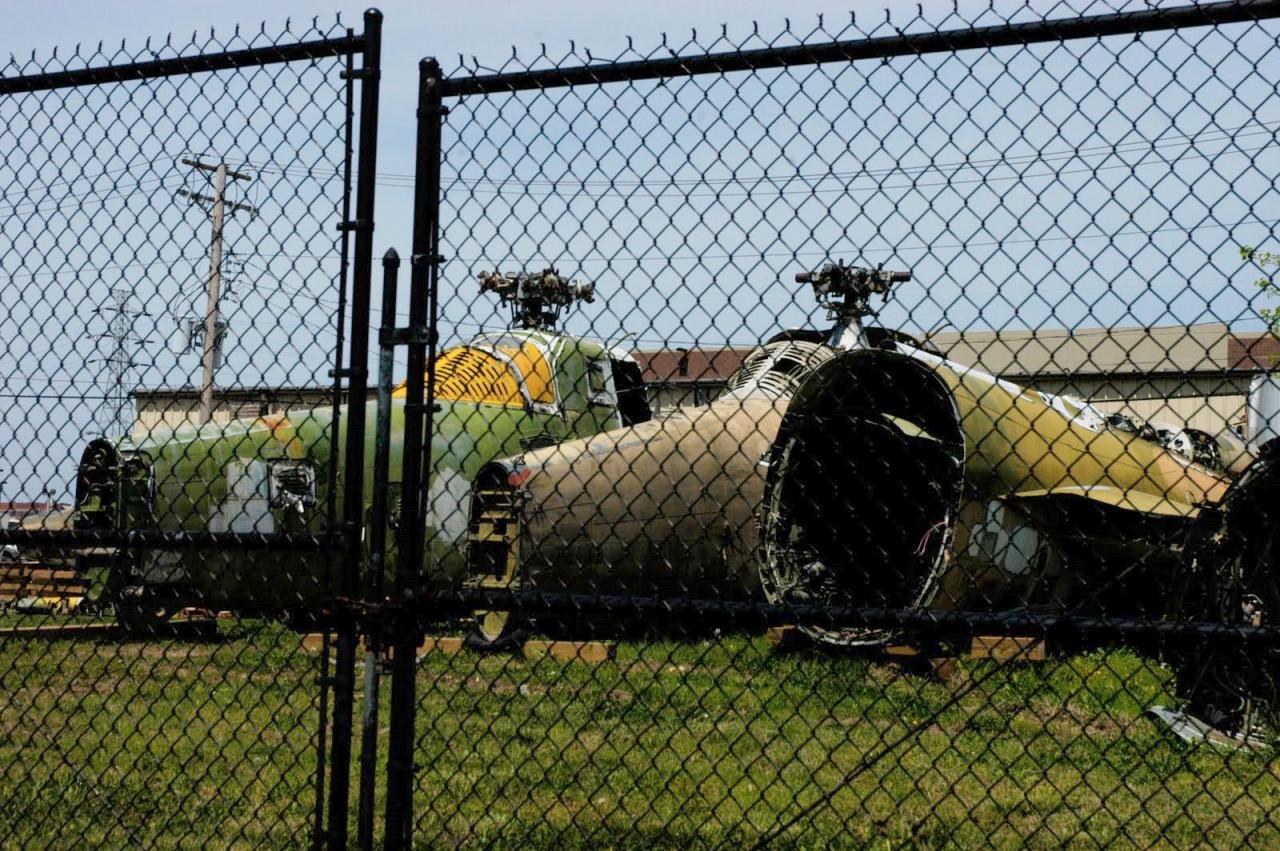


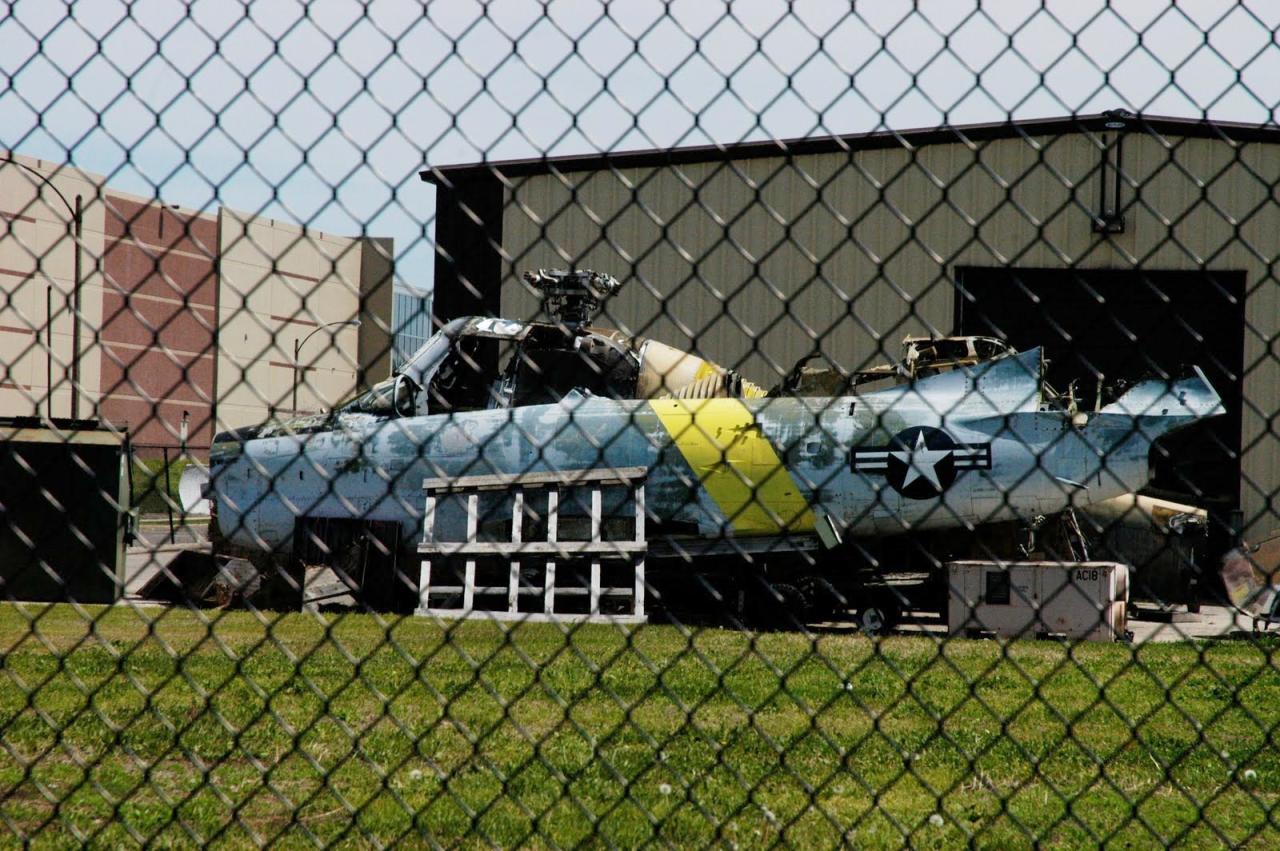
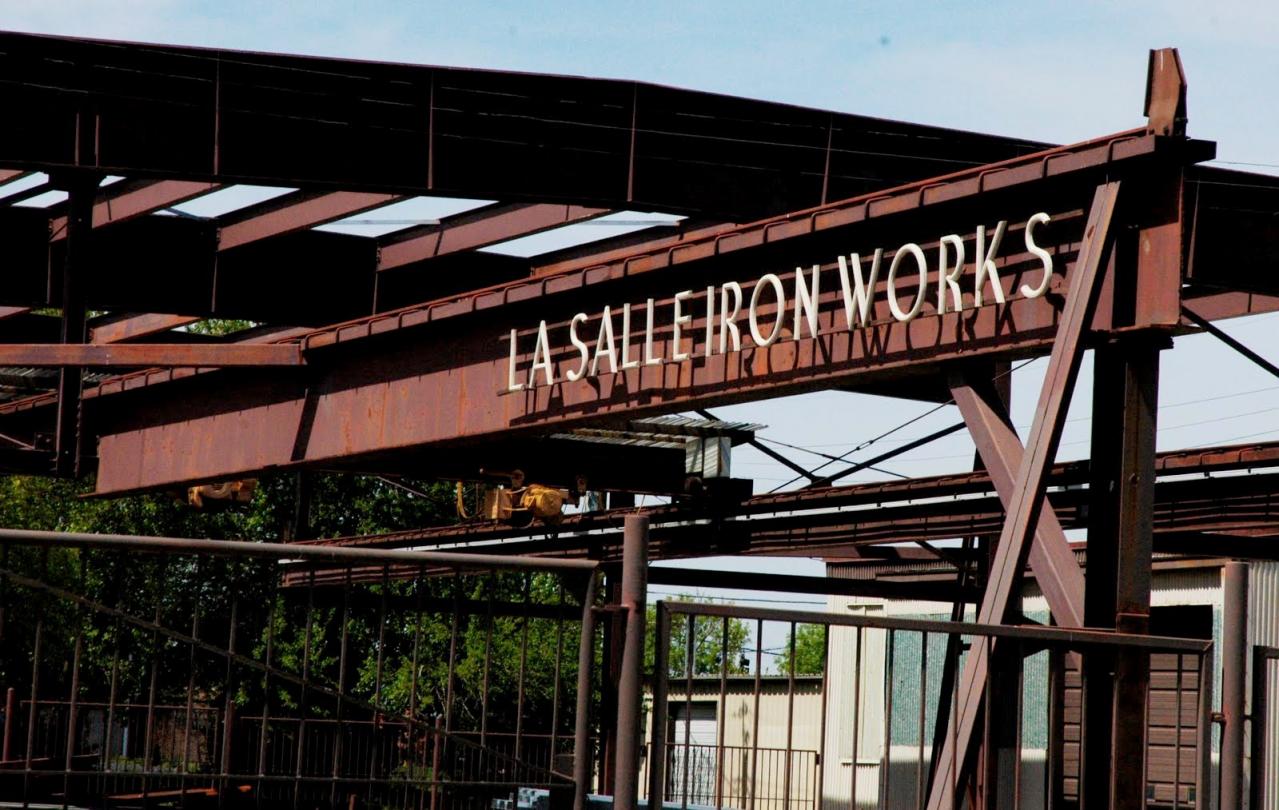
Any way you cut it, the Gate District is a strange, incongruous place. My gut tells me we’ll be thinking about how to reconnect the streets and forget the mistakes of the late 20th century and make this part of the city and a true neighborhood again. I’ve taken the before shot, my kids will have to take the after.
***In April, 2021 I revisited the neighborhood and the following includes updated commentary and photos.***
Missed on original tour
I missed some of the institutions including the former Wyman School, a 1901 William B. Ittner beauty that is now home to one of the highest performing and most racially integrated high schools in the SLPS, Collegiate School of Medicine and Bioscience.
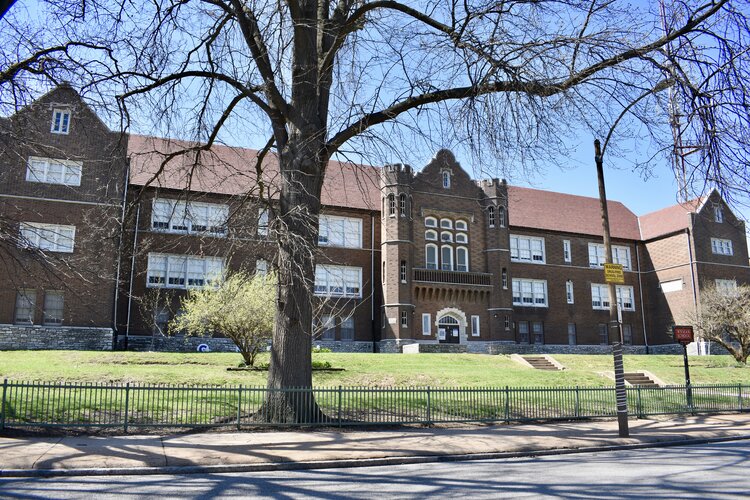
Just north of Collegiate are the Theresa Park Lofts, which are housed in the 1905 Ittner designed school building that housed the original Harris Teacher’s College in St. Louis. It was later converted to an elementary school in the 1960s. Great to see this reuse.
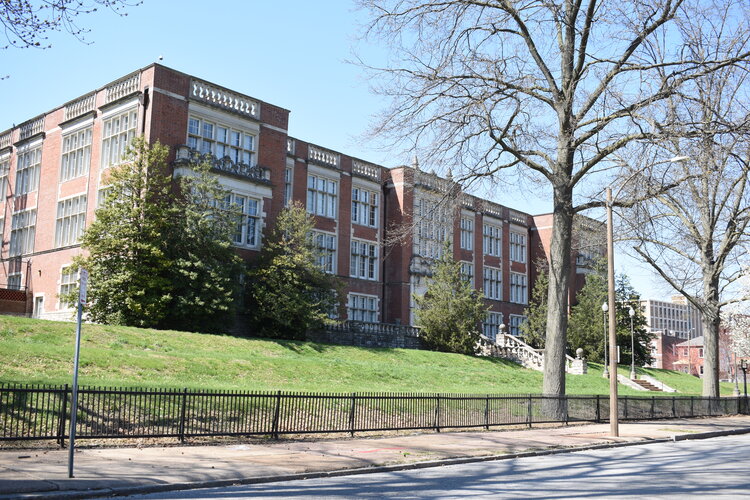
The original classical revival style 1884 Hodgen School designed by Otto Wilhelmi, was unfortunately destroyed for a modern, uninspiring new school building just to the north of where the former work of art existed. Even though the neighborhoods surrounding the school are integrated, the student population at Hodgen is 98% Black. It serves grades Pre-K-6. The photo of the original Hodgen School is credited to Chris Naffziger – St. Louis Patina.


Another SLPS magnet school, Academy of Entrepreneurship Studies Middle School at L’Ouverture is now in operation.
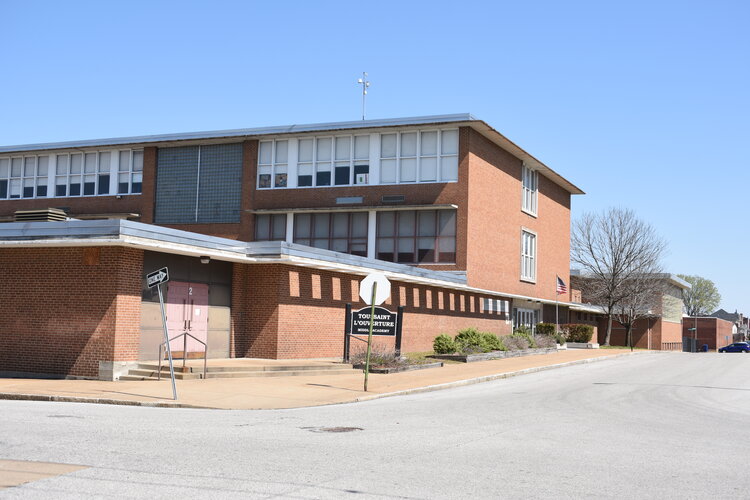
Another miss was the Ronald McDonald house just across the street from Collegiate and the Theresa Lofts.
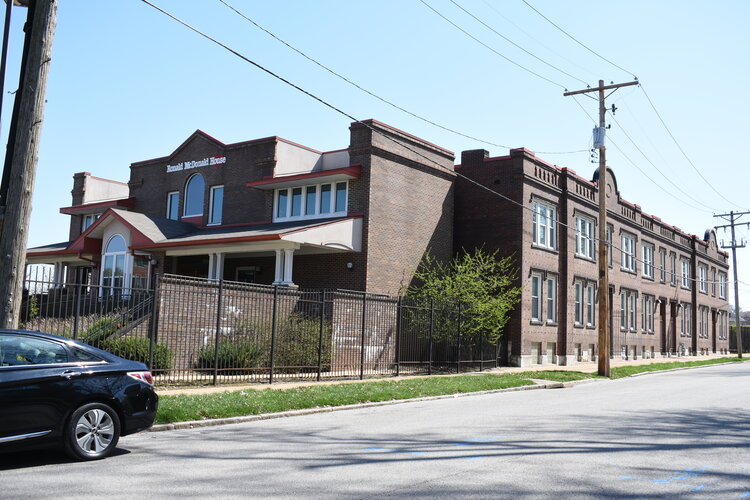
Another former school, the Immaculate Conception School, built in 1926 is a Jacobethan revival style beauty. It was also called the Compton Heights Catholic School, but the Catholics abandoned this area long ago and the building is now home to apartments.
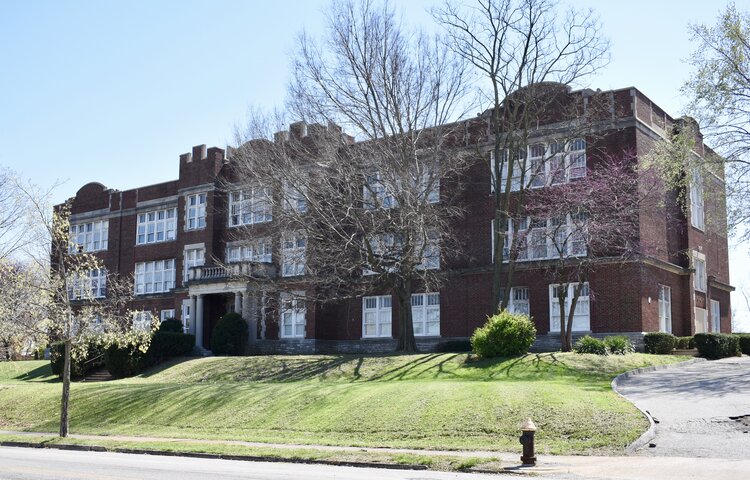
I also didn’t mention the Gallaudet School for the Deaf which closed in 2012, which still adds beauty and history to S. Grandin the Gate District.
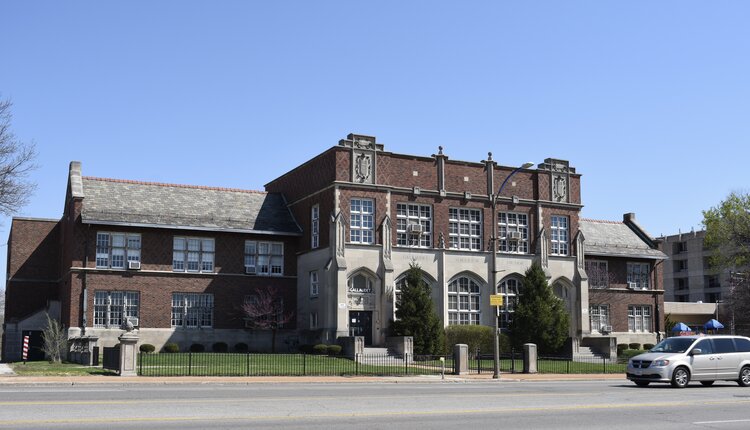
Noticeable changes
New construction is everywhere, you will see single family homes popping up on long vacant lots, some very modern and unique to St. Louis.

Lafayette Avenue is a constantly evolving street with a lot of infill in the last ten years.
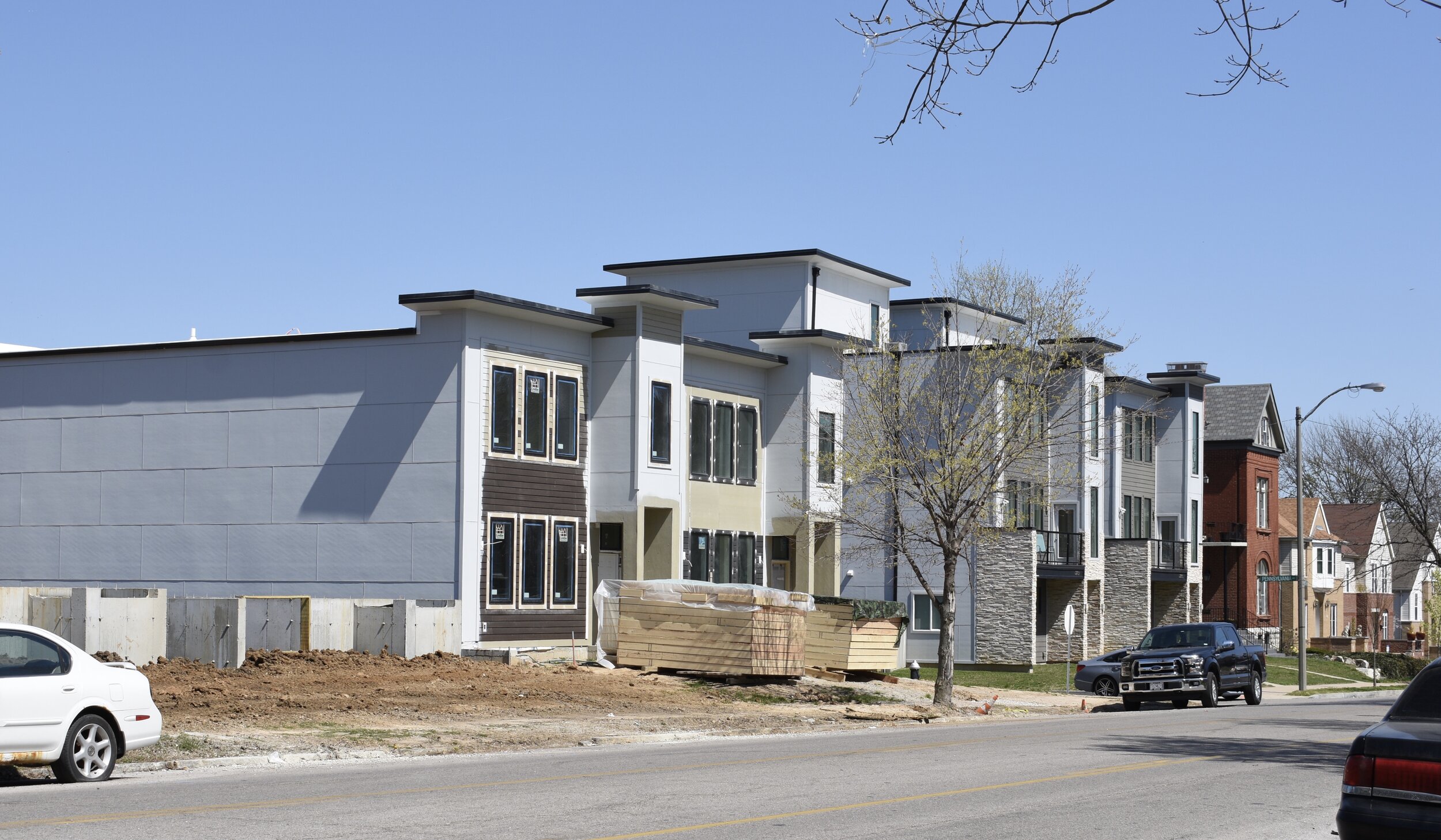

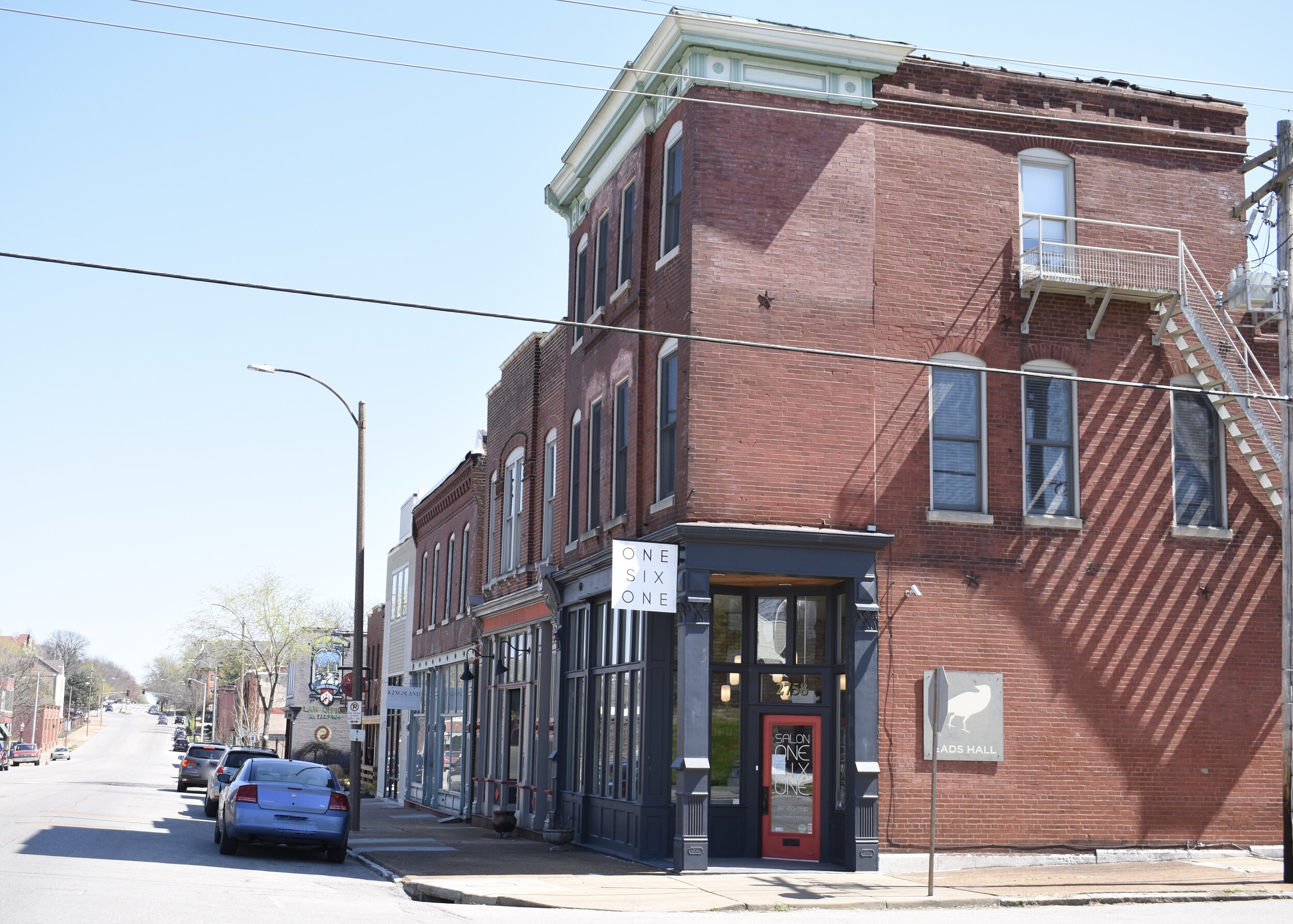

You also see larger projects with multiple homes going up at once. The area around Terry Park, after many years of inaction, is nearly “built out”. There is also public investment in and around Terry Park by way of speed humps to slow traffic around the park perimeter, and a well cared for basketball court.
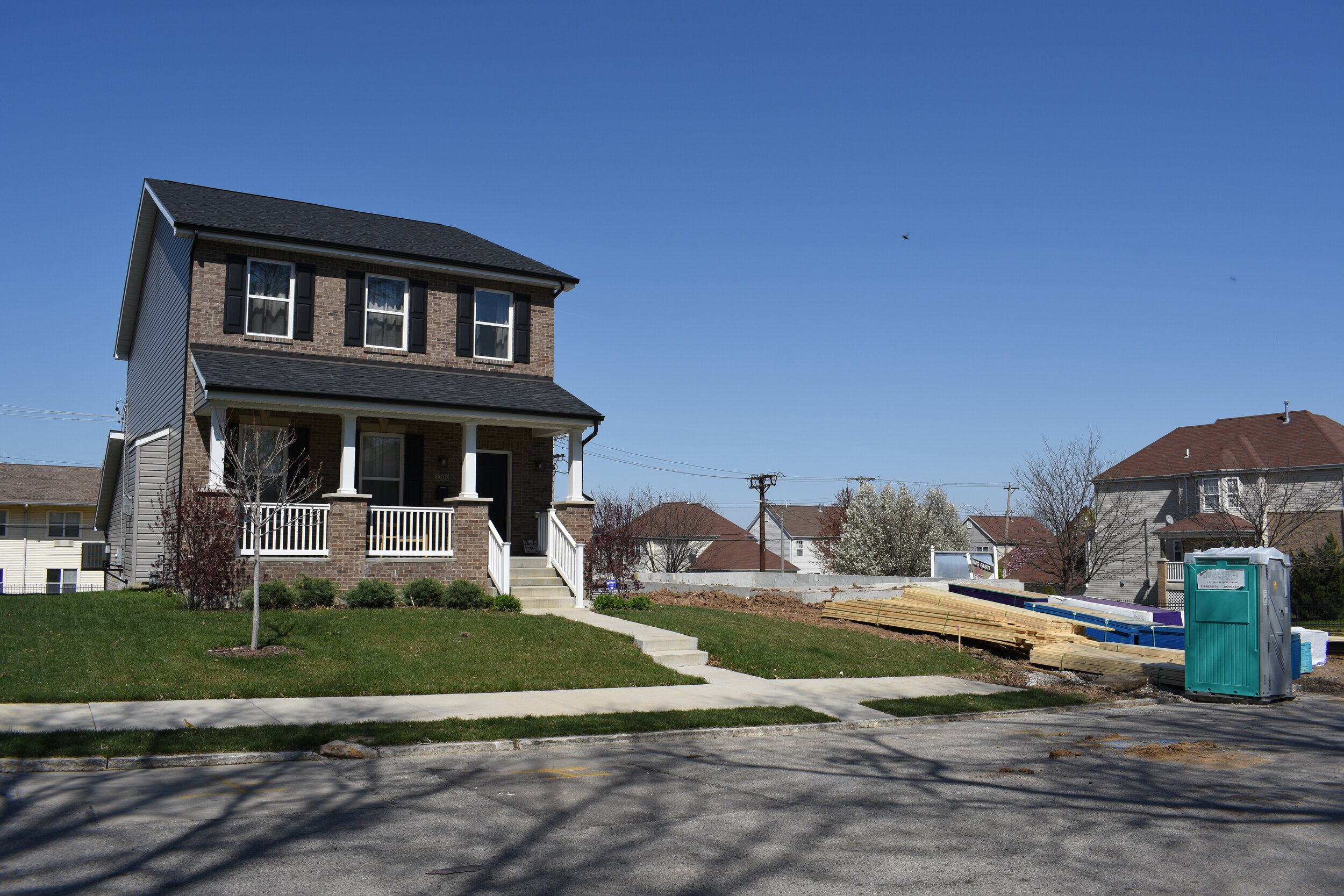
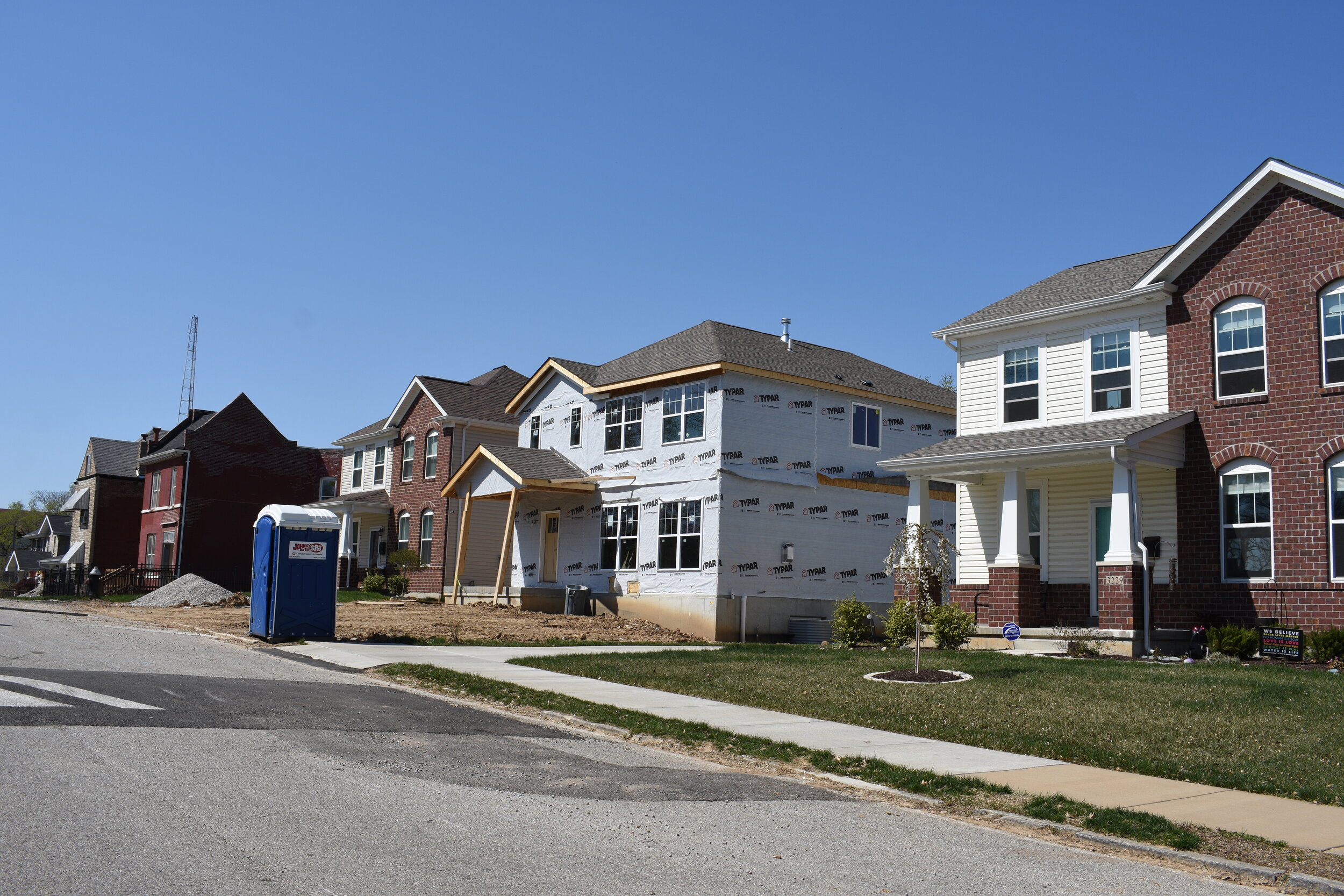
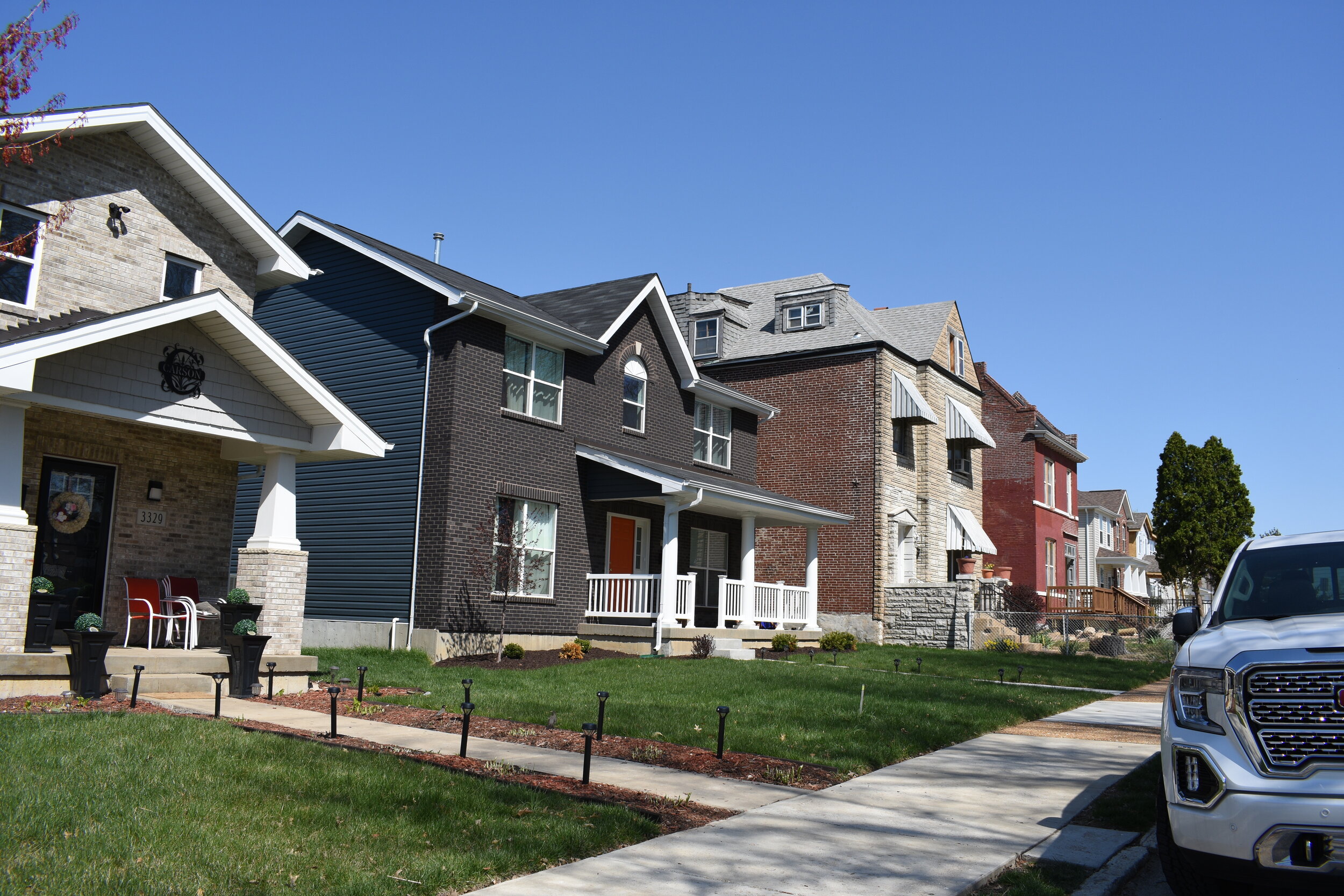
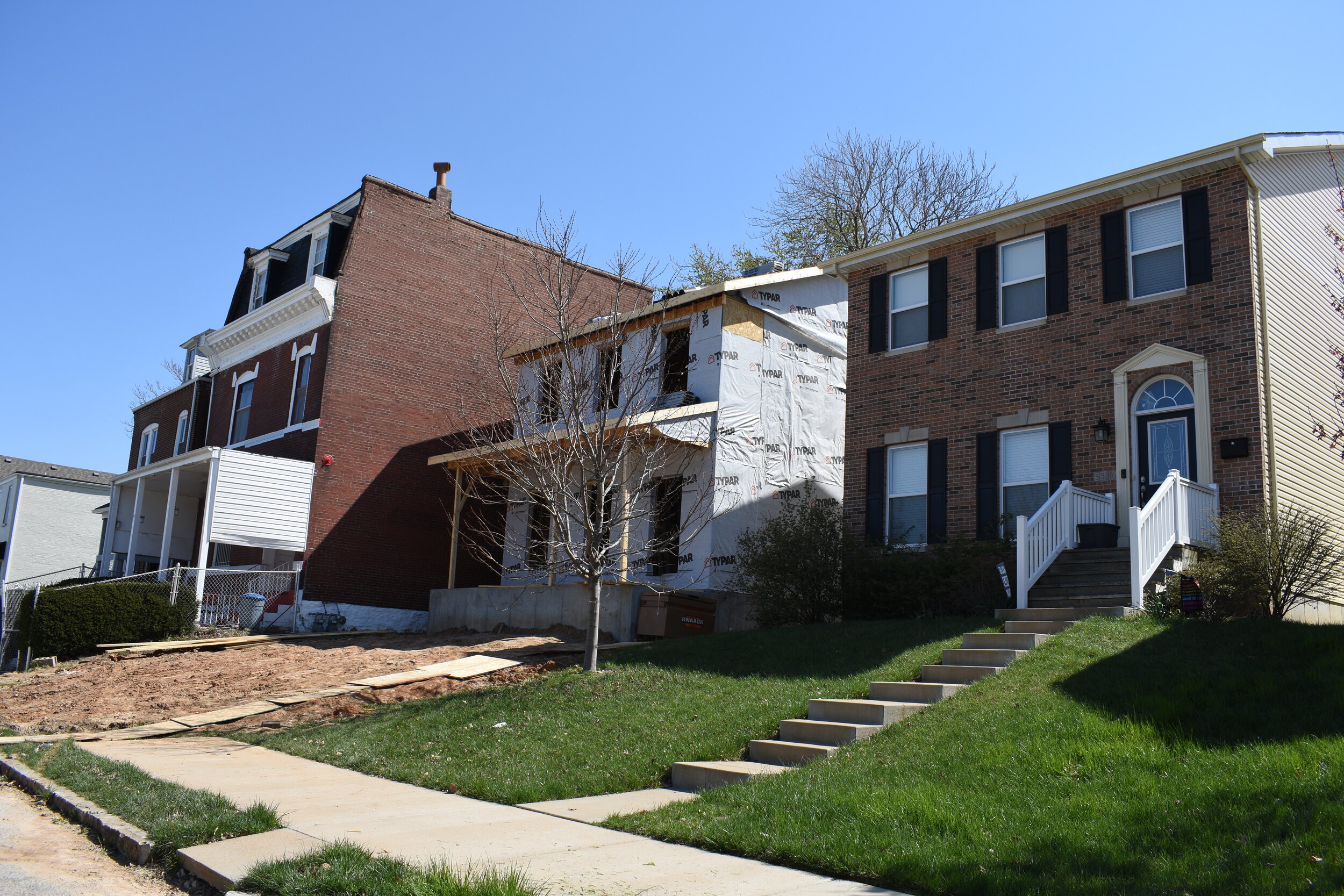

The areas closer to Buder Playground Park have seen a lot of activity as well. The acres of grass fields from the mass demos in the past are now filling in with single family homes.
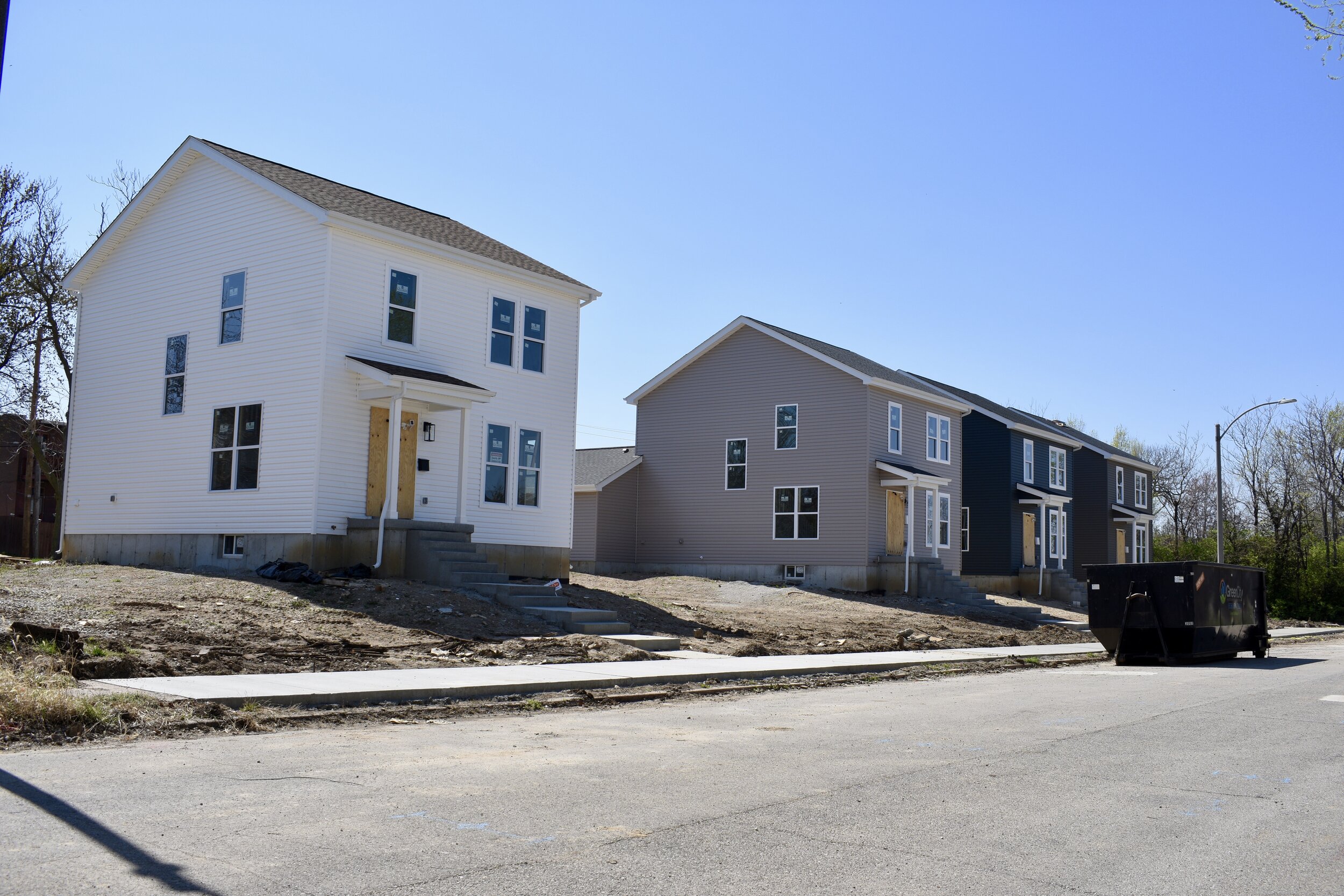


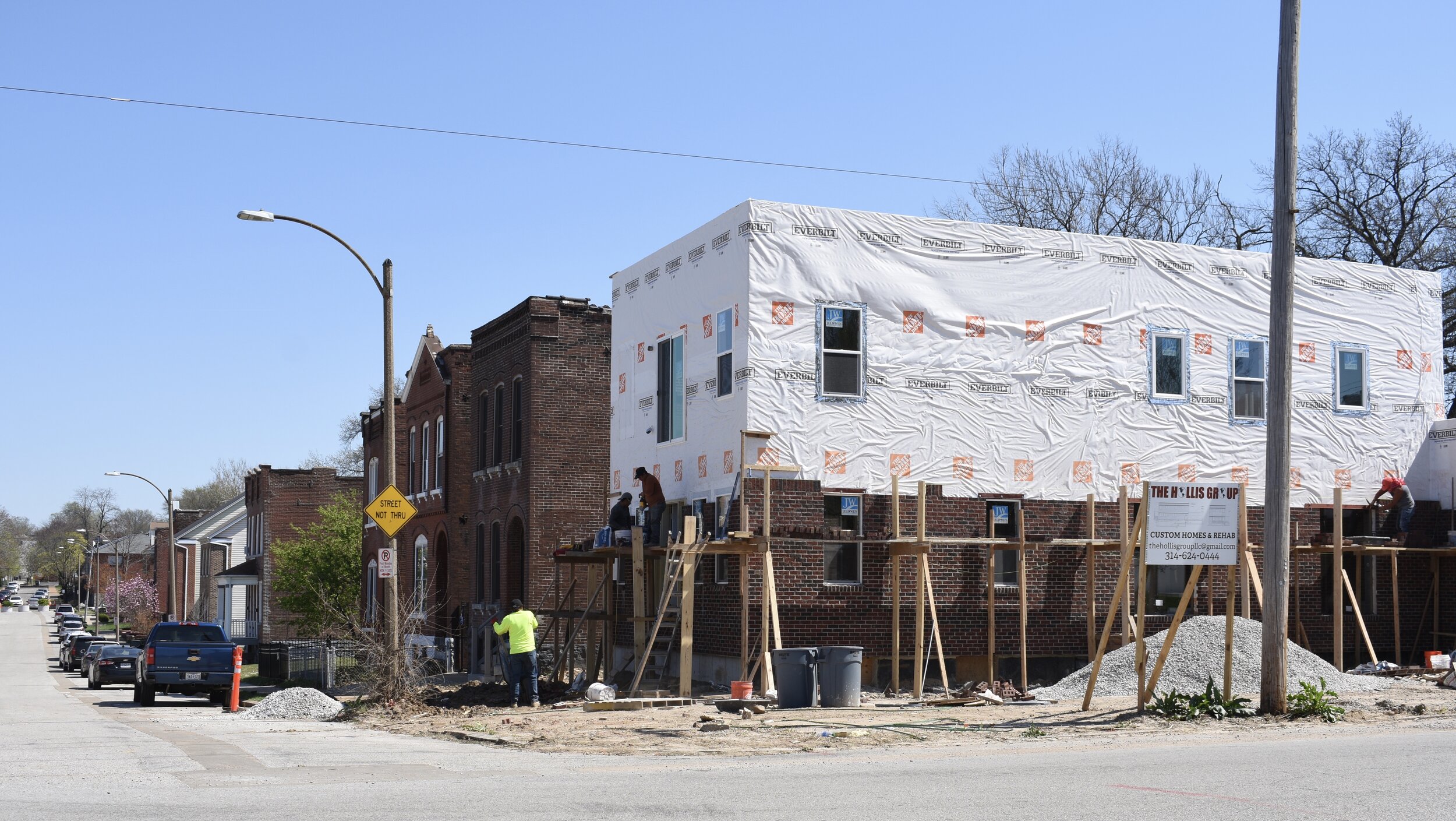
The biggest sea change for the neighborhood is St. Louis University’s release of many properties near Park Avenue between Compton and Grand. You can read all about the St. Louis Midtown Redevelopment Corporation’s work in the additional reading section. The development of these properties is underway, changing the neighborhood once again. By my taste, these will be much better for the longterm look and feel of the neighborhood from the street. They are connected to the street grid and will be more urban in form and respect the setbacks of the neighboring properties. There is a mix of affordable and market rate, mostly the latter.




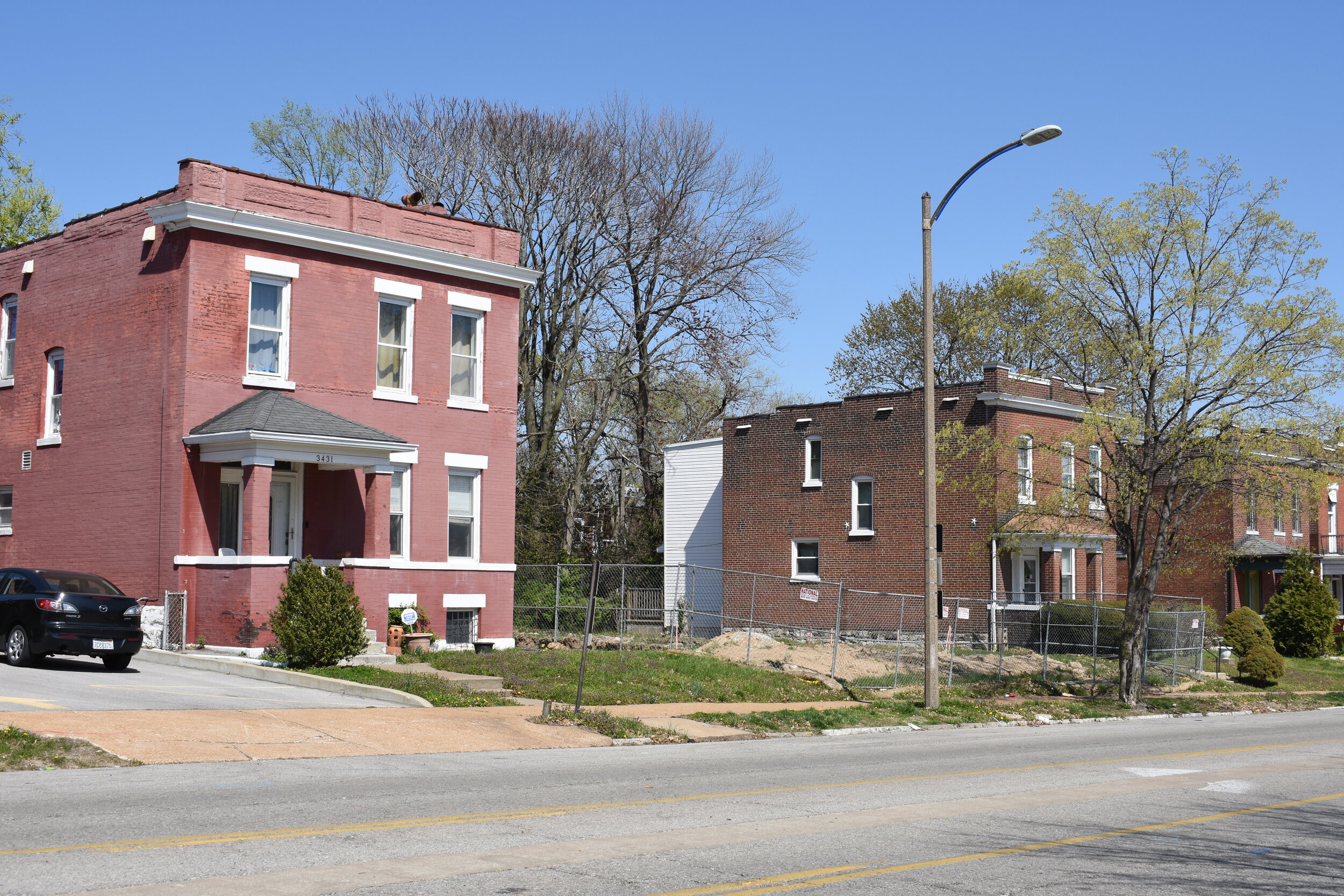


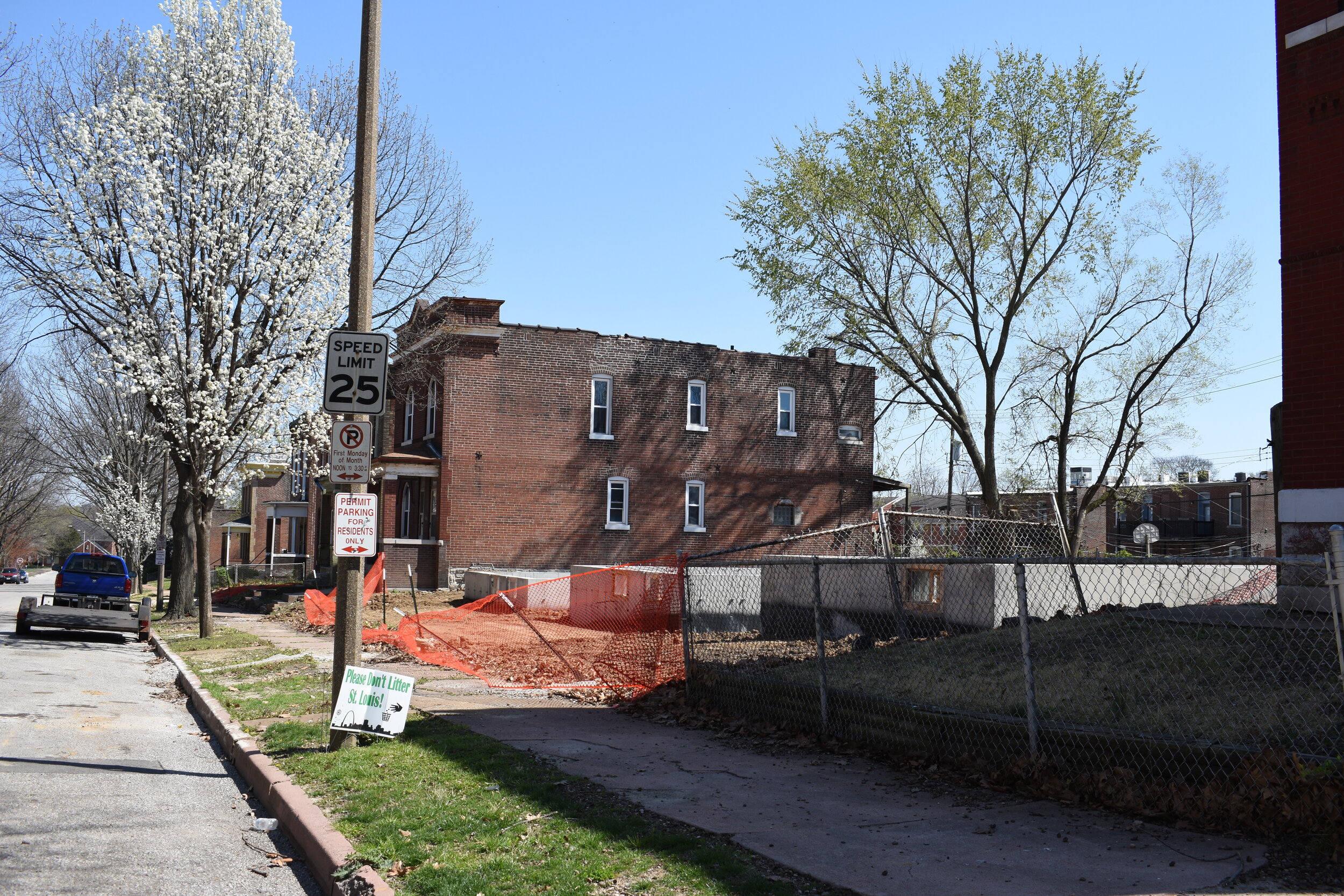
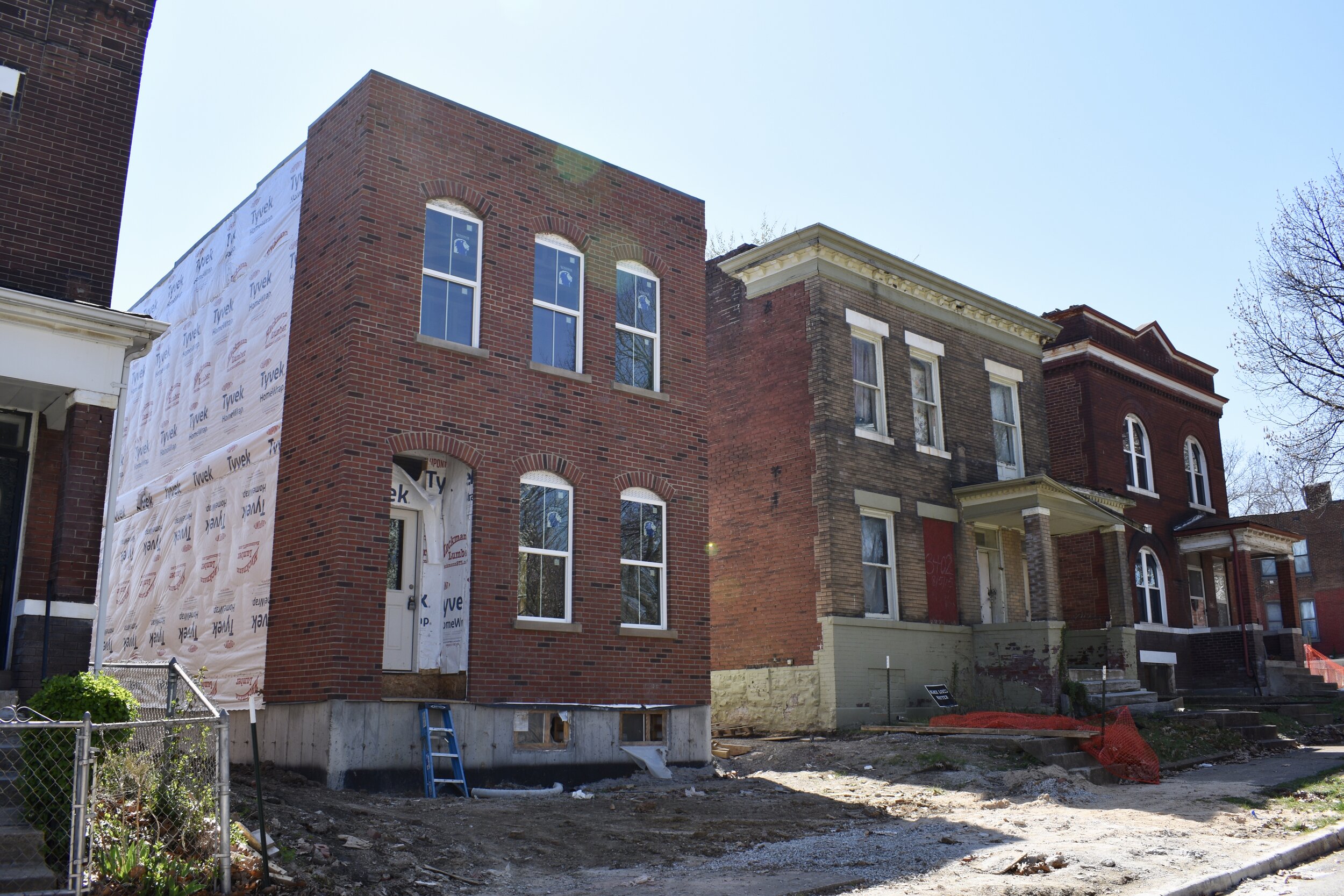
There is evidence of the classic brick beauties having been or undergoing rehab throughout the neighborhood. The former Loretto Academy (girls school) built in 1908-1909 was renovated in 2012 to become the home of St. Dominic Priory, a home for Dominican Friars. Every now and then you will see Dominican Friars walking the neighborhood.
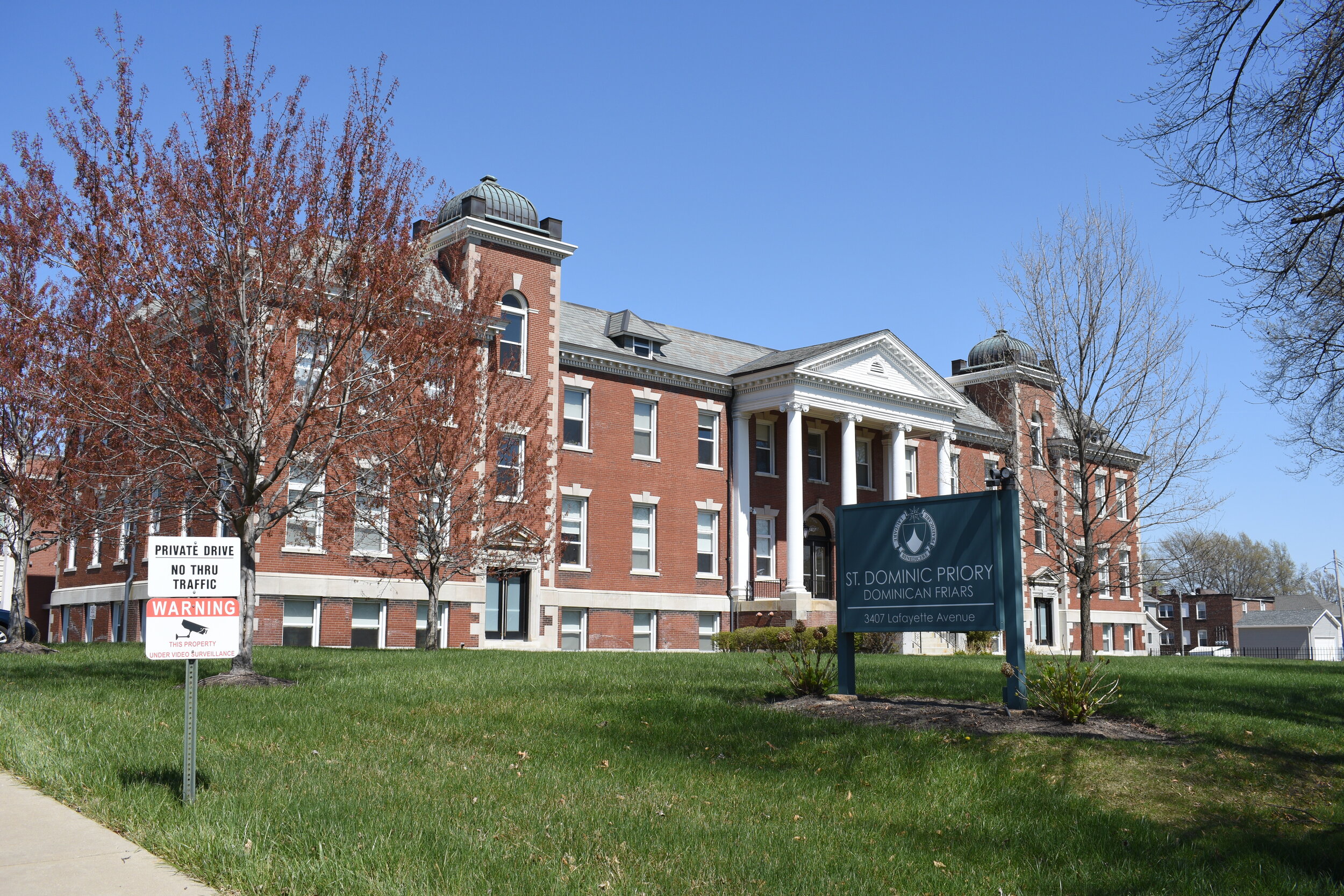
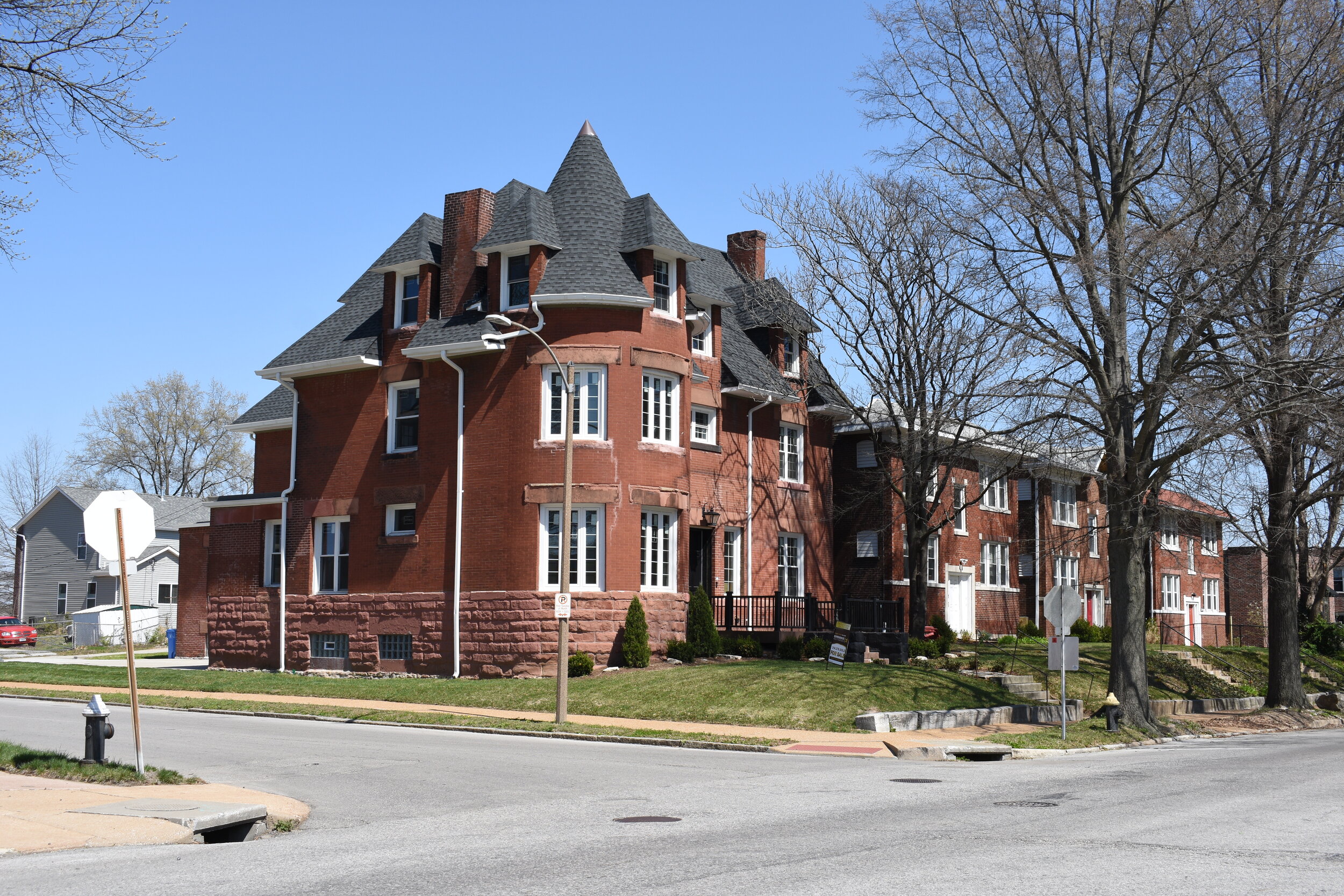
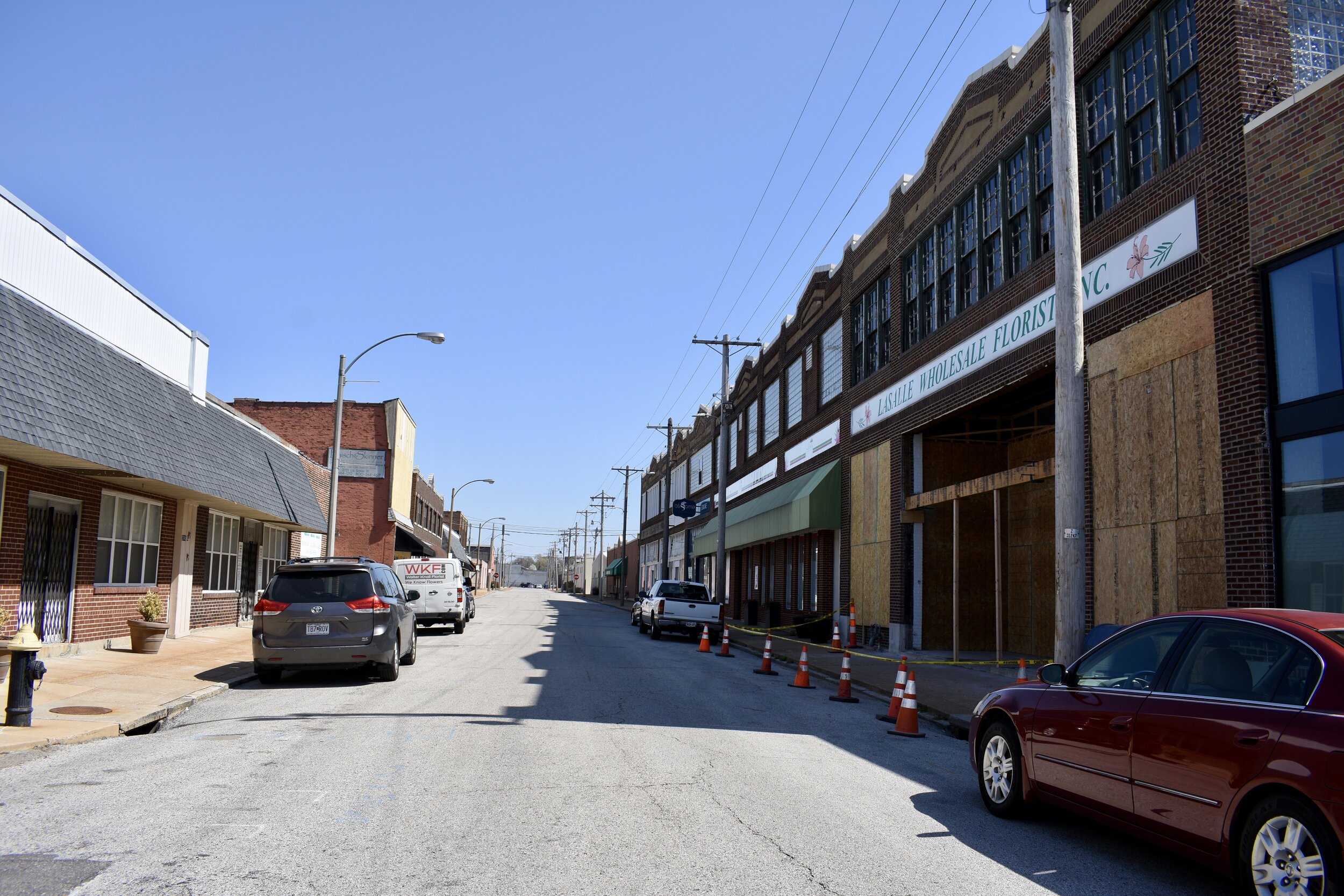
The Gate District is still a bit of a mixed bag, without a consistent architectural style on display. This is part of its uniqueness. Here are some refreshed shots of the variety you’ll see.

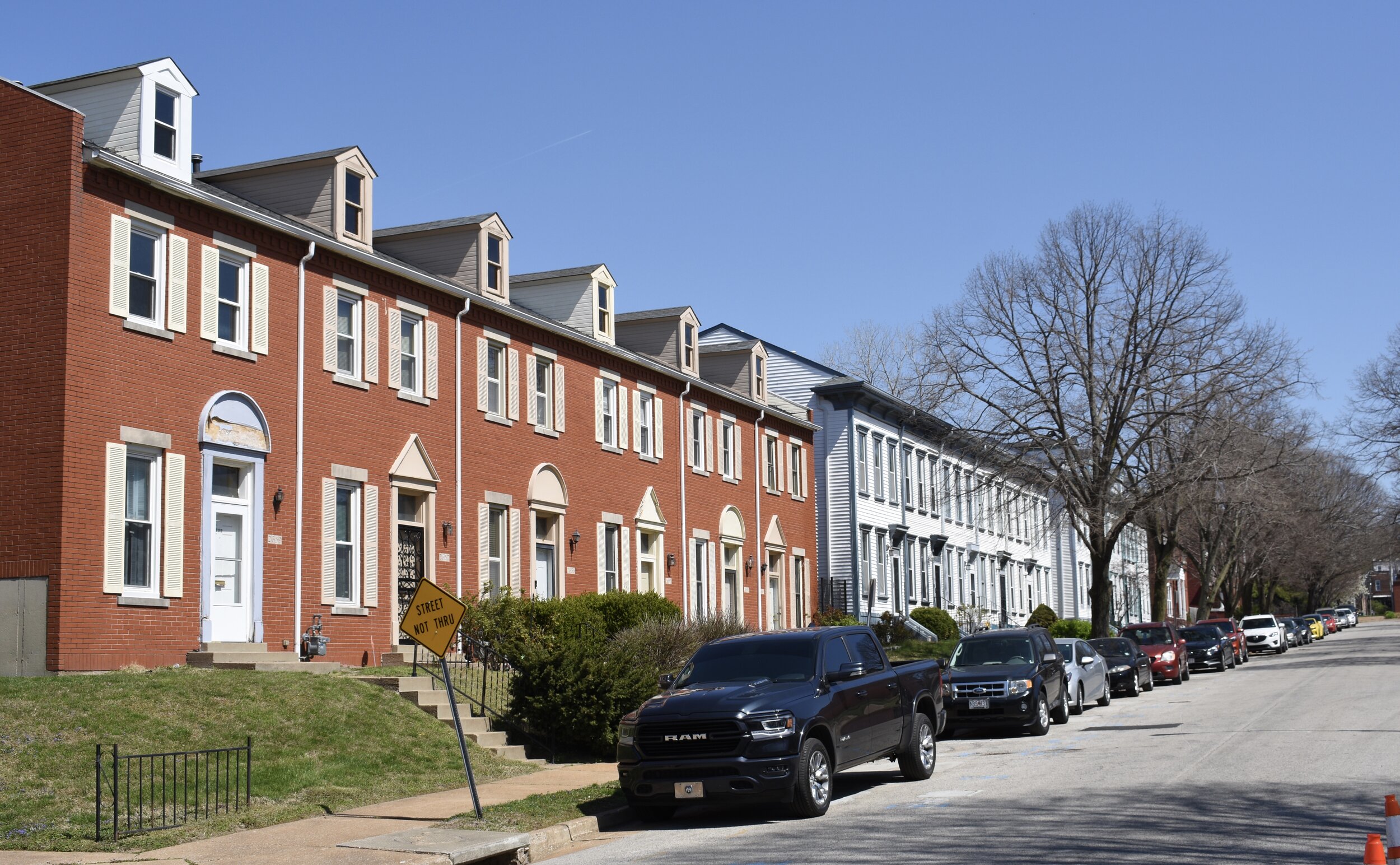
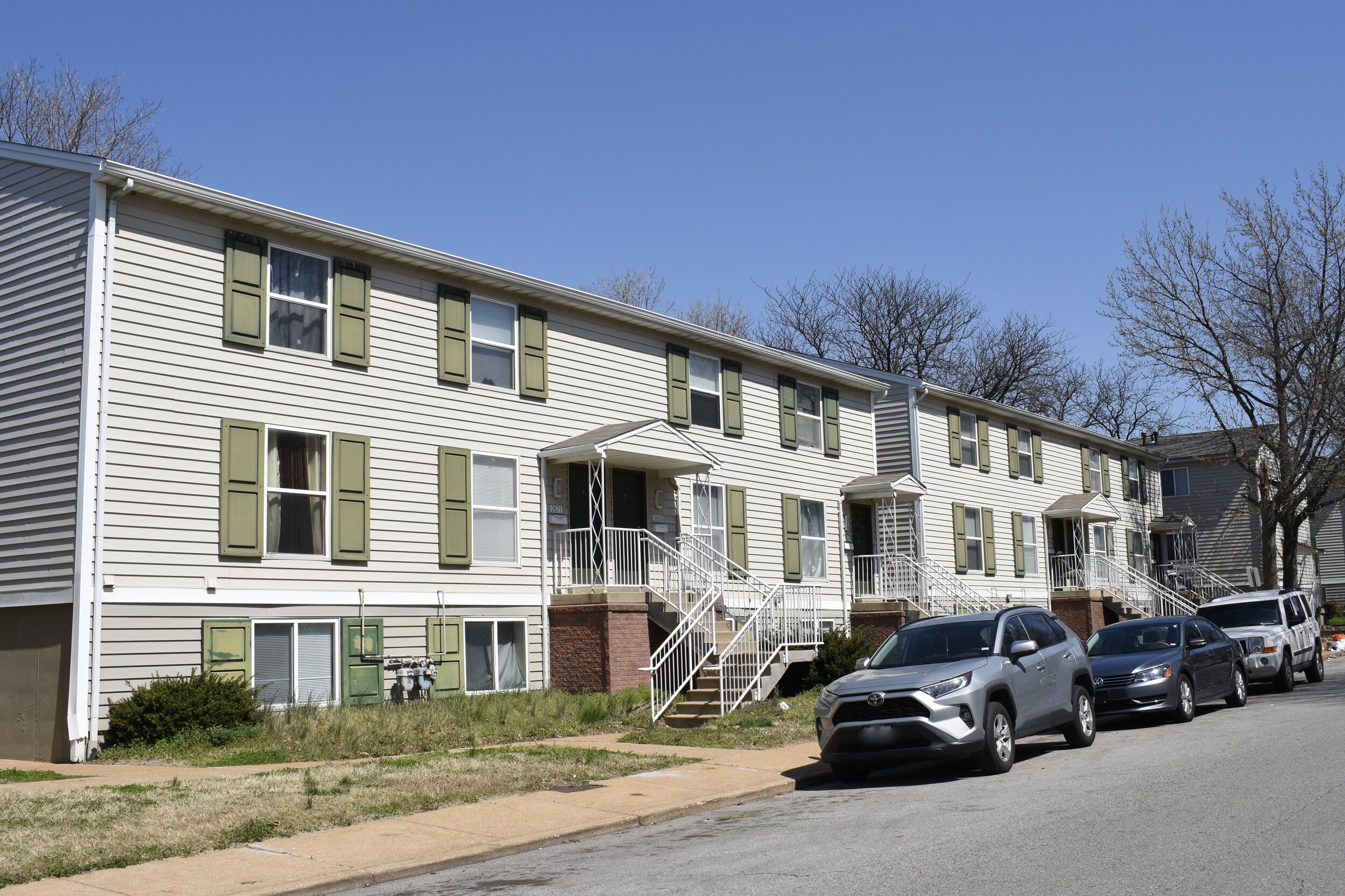

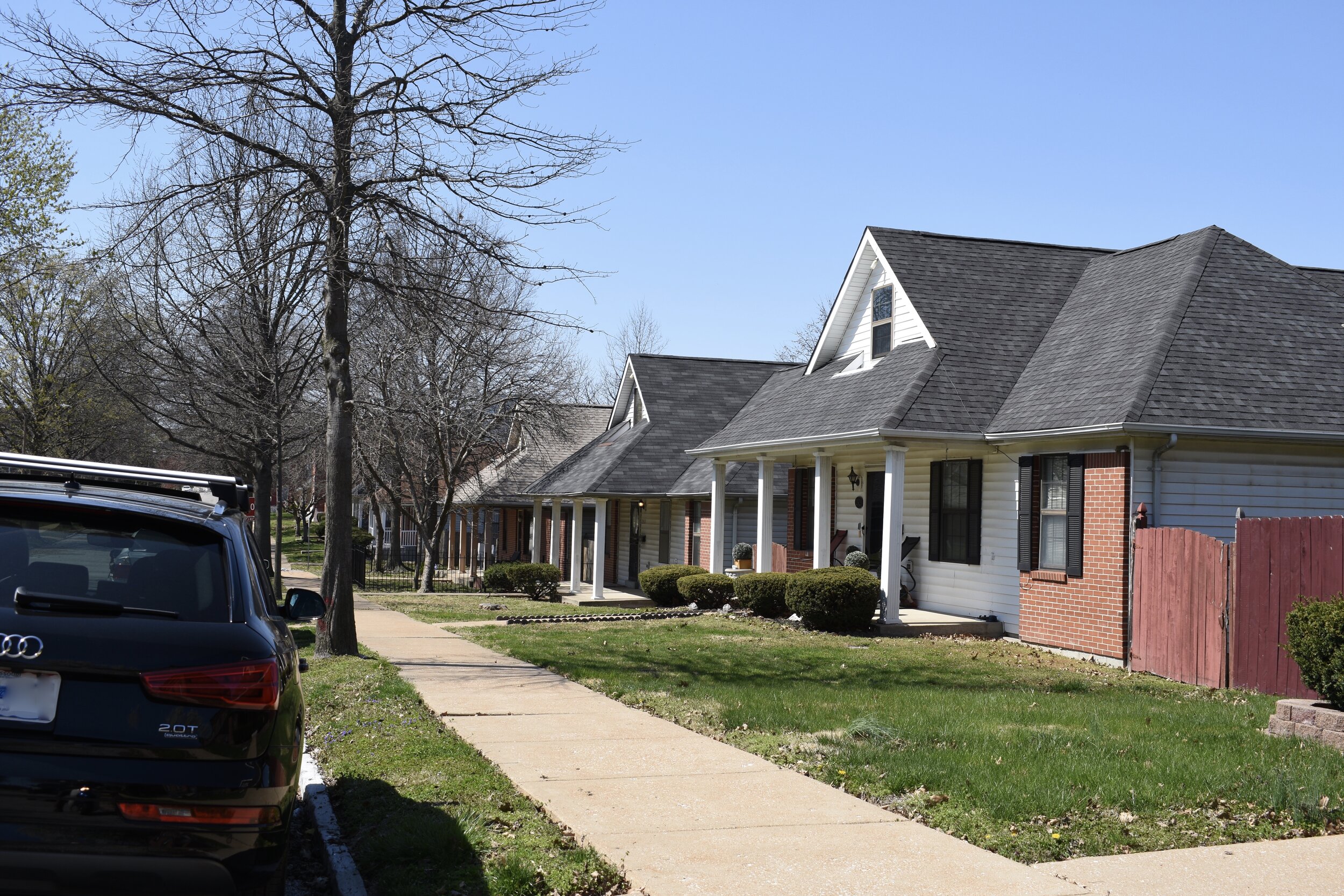

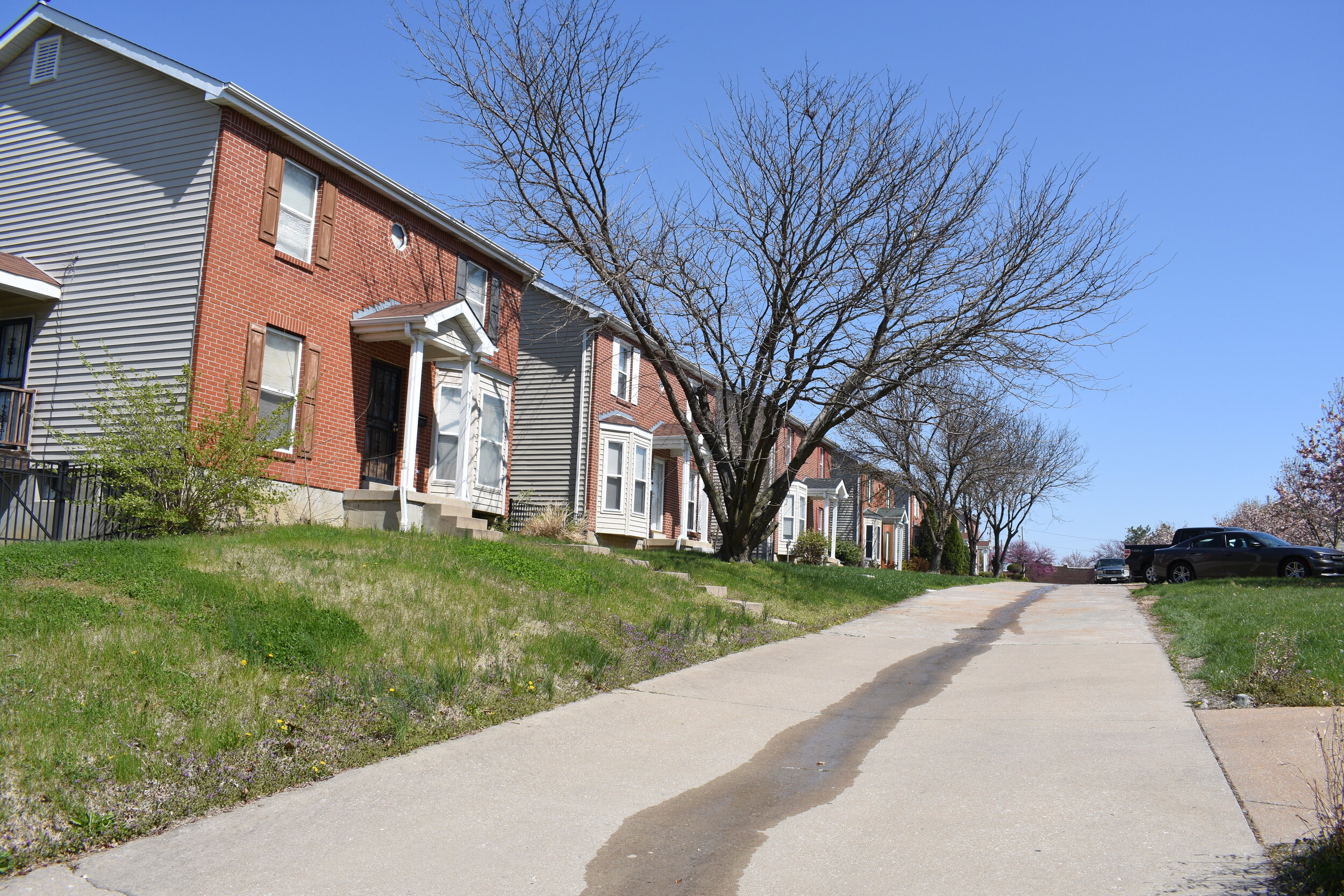





What are the future needs?
Now that the neighborhood is stable, maybe it is time to consider re-opening the streets. These are not private streets only for residents living on that block. We, the taxpayers, own and maintain the streets. We should be able to get around easier.
But don’t count on it, the neighborhood appears to be doubling down on blockages as evidenced by these closures that take many forms from concrete bollards to Schoemehl pots to chain link fence.

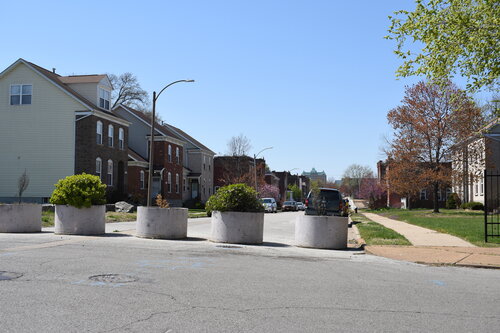

If I could reverse this trend of blockages I’d start with the ones at Hickory and Ohio. These blockages kill the street activity, providing nothing more than a spot for over the road trucks to park and trap trash and generally drag down the area. With the new homes, sidewalks, etc. just west of here, this street should be reopened to respect the new residents.

I’ve read there is hope for a rehab of the prominent building at Grand and Park, which is critical for the neighborhood to retain its beauty. This would be a huge win for the Gate District and South Grand in general.

Other future needs are, of course, the addition of more street trees to complement the neighborhood.
There is not an overwhelming amount of board-ups and vacancies, but they exist. I’d like to see these rehabbed in the future to maintain more of that older, beautiful housing stock.
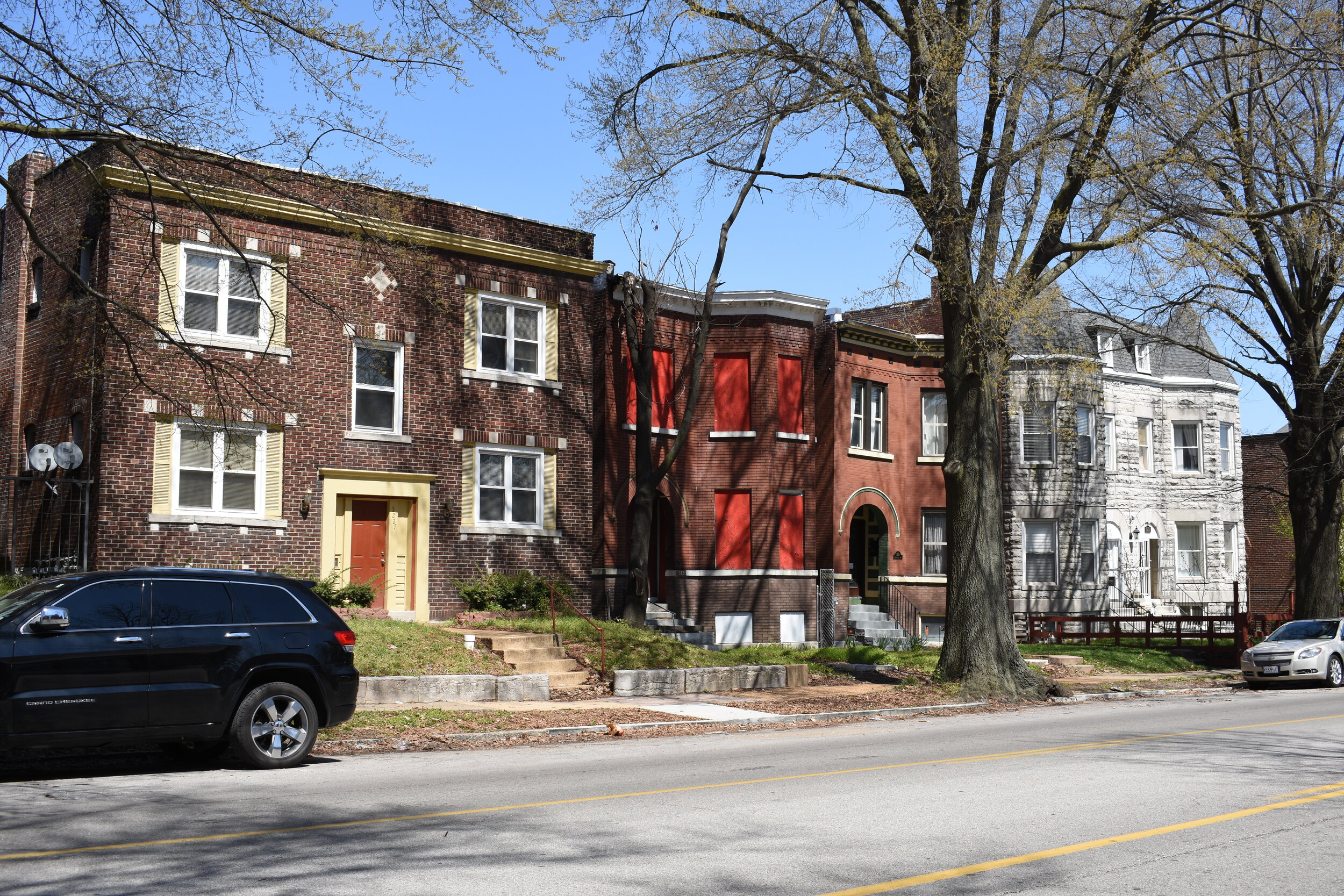

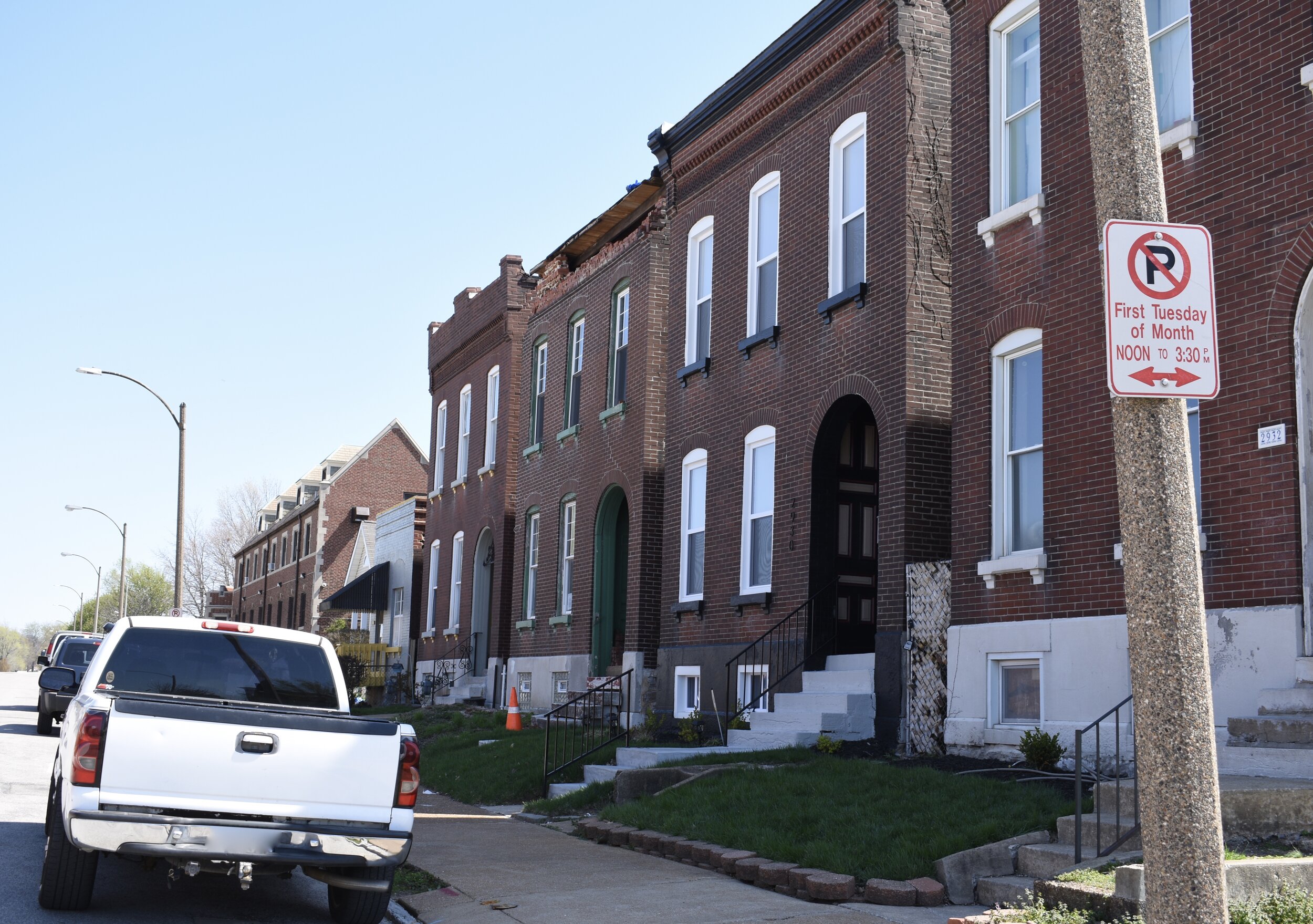


The Gate District will continue to see more new housing stock and hopefully some more intra-neighborhood retail to support the growing number of residents. The future is bright.
